FLIGHT TEST:
PIPER’S 180 HP COMANCHE – SUPRISINGLY GOOD!

Jim: More Fuelish Mistakes
The Stellenbosch Air Show!
Taking off: Uphill or downwind?
Flying cars – will they ever work?
How do wings fly inverted?
ACSA’s Mpumi Mpofu – tells all
FlightCm Afr ican Commercial Aviation Edition 337 April 2024 Cover: Darren Edward O’Neil
SAFETY FEATURE
- on the end of the
Guy
Garmin GNS 430
2,000 PC-12S – 1 PROVEN LEADER!
What makes the PC-12 the most popular single-engine business aircraft? Experience. With a rapidly growing global fleet of more than 2,000 aircraft, the “World’s Greatest Single” has solidified its reputation for superior value retention, low operating costs and safe operation. With an aircraft this proven, the numbers really do speak for themselves.
pilatus-aircraft.com
Contact Pilatus PC-12 Centre Southern Africa, your nearest Authorised Pilatus PC-12 NGX Sales Centre for further information on
Tel: +27 11 383 0800, Cell +27 82 511 7312 or Email: aircraftsales@pilatuscentre.co.za

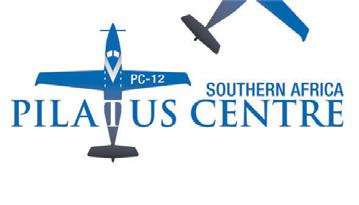
p


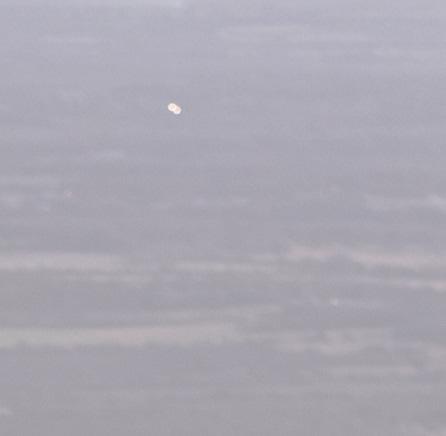












UNLEASH THE FULL POWER OF YOUR CARAVAN 208/208B DON’T SETTLE FOR LESS THAN THE BEST BLACKHAWK.AERO Transform your flights with a brand new PT6A-140 engine and take your revenue to new heights. Designed by pilots for pilots, this upgrade offers enhanced performance and power, so you can take advantage of 867 SHP in takeoff, climb, and cruise like never before.
POSITION REPORT
THE EASIEST WAY TO TELL a real pilot from an amateur is to watch how the pilot uses a Garmin GNS 430, or the more recent GTN 650.
A real pilot always starts at the Flight Plan page – an amateur just uses the Direct-to function. I confess it took me years to stop doing that.
Another test of basic skill with the GNS 430 is to enter a waypoint when you are already in the air and on a Direct-to track.
Garmin’s GNS series GPS is like a VHS tape player – or an Excel spreadsheet. As a wild thumb suck, I reckon that 90% of its users don’t know how to use more than 10% of its capabilities. The GNS430/530 just keeps on giving, as you discover endless hidden functions.
Perhaps this is the reason it has lasted 25 years, despite your phone (or watch) having better GPS than a 20 year old aviation GPS.
The more advanced GNS 430W in our Saratoga had the benefit of software upgrades and was WAAS enabled – as well as having a Stormscope. It also worked with the autopilot better than the C182’s did.
The GNS 430 has been replaced by the touch screen GTN 650. Its brain and the display are much improved – although personally I am not a fan of touch screens, as I find them hard to prod accurately in any sort of bumps.
The cost is now a horror show - especially for South Africans made poor by our wealth destroying government. The 430 in our C182 had a list price of U$10,000 or about R65,000 in 2000. The GTN 650 lists at U$13,750 or R250,000 – 400% more expensive.
The cost is a horror show
The weak spot of the GNS was its display –which some conspiracy theorists liked to claim was designed to fail after ten years. One of the two in our Cessna 182 did just that by getting a wide vertical stripe. The key is to keep the
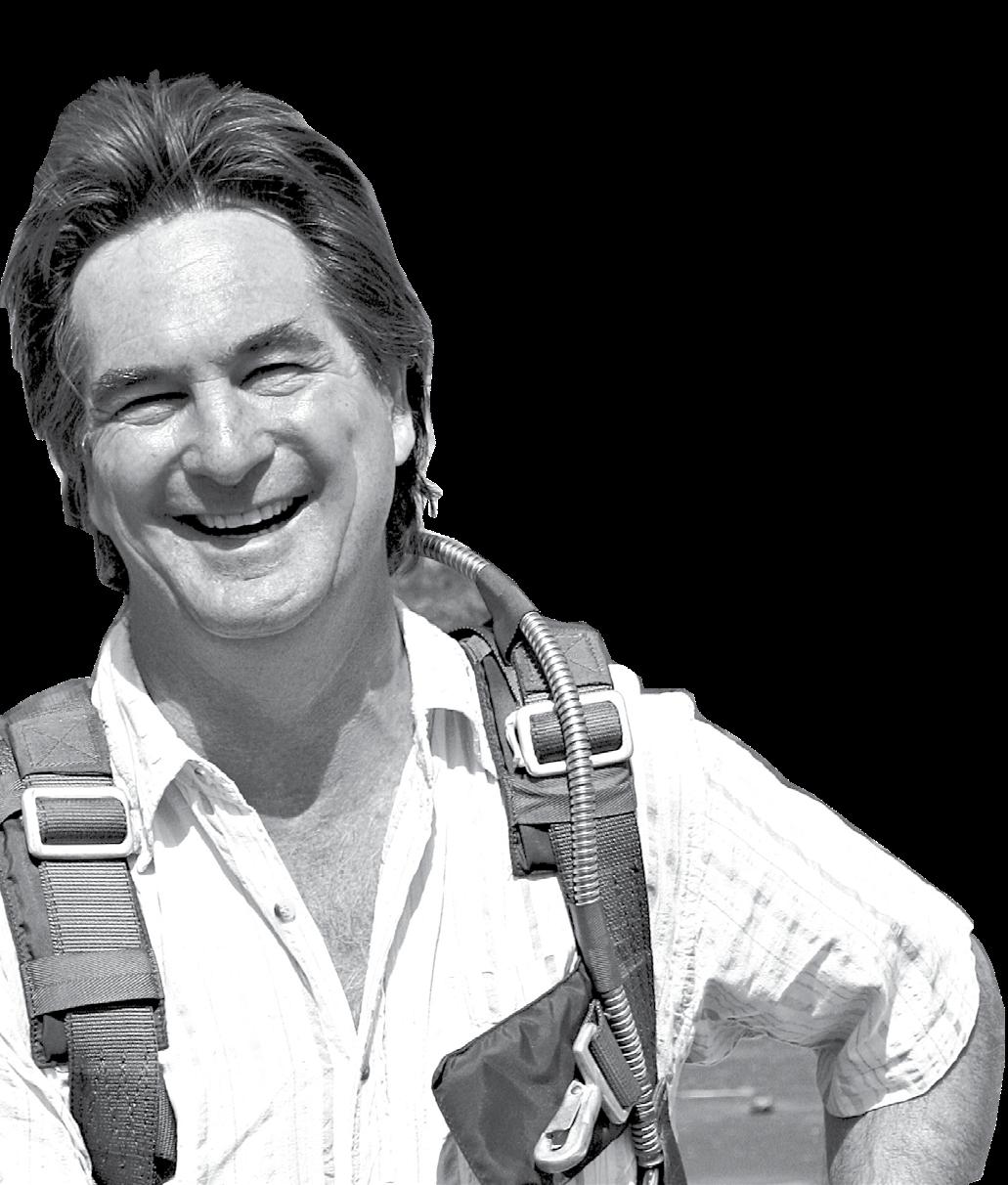
The early 430s were not entirely reliable – I remember watching in disbelief as our 182 flew me through the centre line of Gaborone’s Runway 08 via the President’s house – presumably while he was having an
The GTN touch screen range was introduced in 2011 and Garmin says it’s running out of parts for the 430. Clinton Caroll of Aeronautical Instrumentation says that almost all parts are now unobtainable from Garmin. If you can get it, a display replacement currently costs around U$2,000, which is a whole lot cheaper than the U$13,750 base cost for the GTN.
So here’s my 2 cents worth: Keep your 430 cool by having a good avionics fan – because its heat that damages the display – and spend many more happy years learning to use it. Meanwhile start saving for the whole glass G600TXi display – which is a least big enough to have a useful touch screen.
j
Guy Leitch


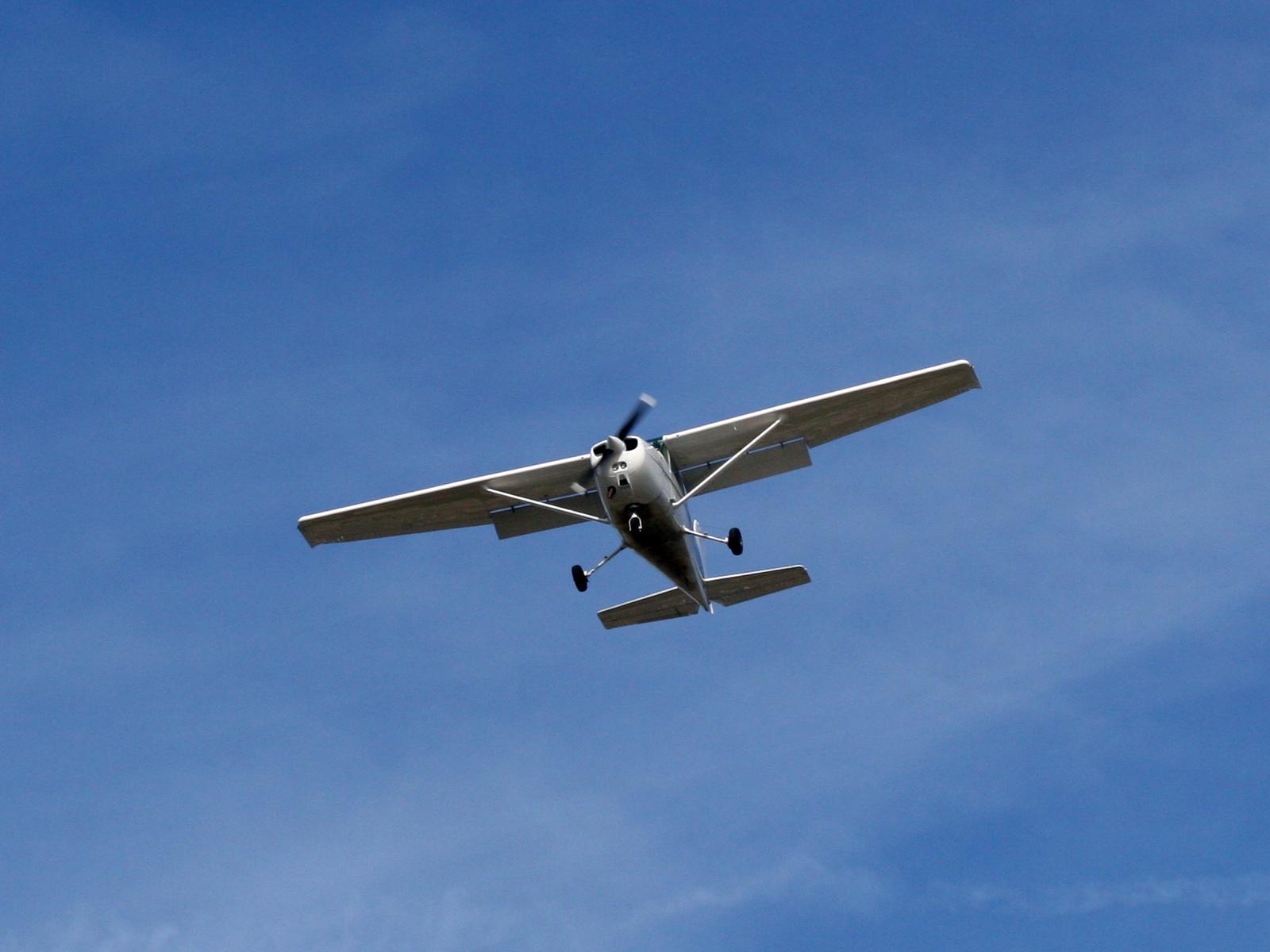
www.merchantwest.co.za Divisions in the Group are licensed and authorized FSPs OWN YOUR AIRCRAFT? LET US HELP YOU MAKE THOSE DOLLARS WORK HARDER FOR YOU.
12
18
44
48
04
08
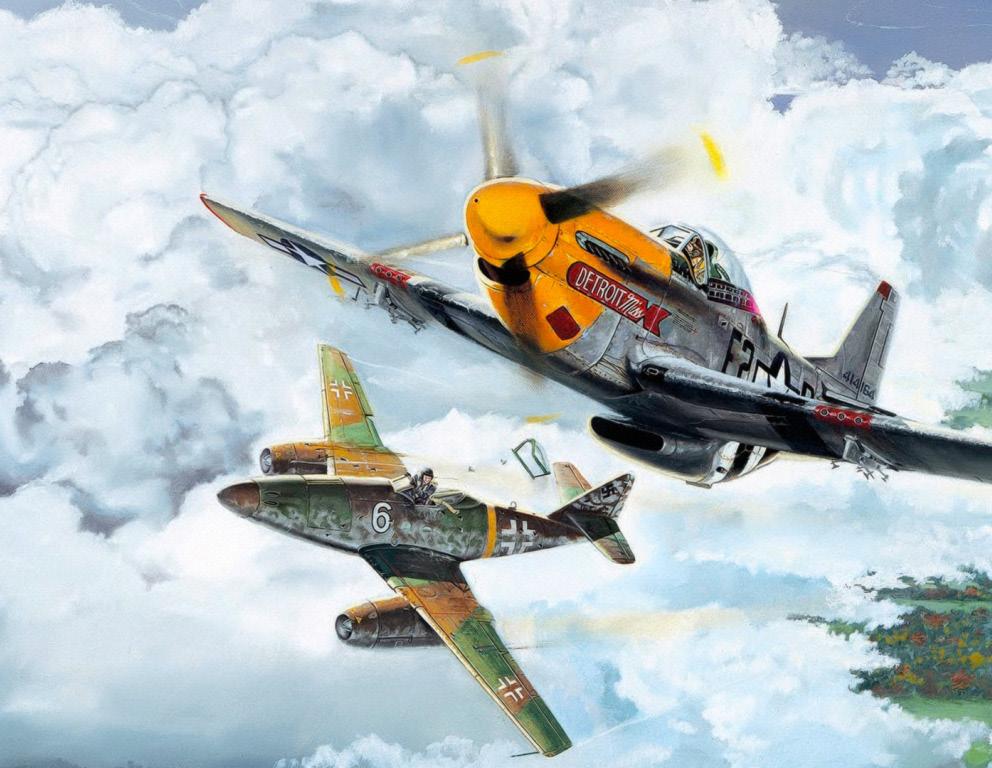

COLUMNISTS FLIGHTCOM
TELEPORTATION PT1
Hugh Pryor -
SOMALIA Edition 337
TEST:
CONTENTS SAF 30
COMANCHE 180 SA FLYER
Laura McDermid - IRIS GOES TO
FLIGHT
FC 20
PIPER’S
Leitch - FLYING CARS
Guy
Peter Garrison
INVERTED FLYING
-
Davis - RIGHT SEAT RULES 16
22 Jim
Jim Davis - ACCIDENT REPORT
Morne Booij-Liewes- REGISTER REVIEW
SALES MANAGER
Howard Long sales@saflyermag.co.za 076 499 6358
TRAFFIC
Howard Long traffic.admin@saflyermag.co.za
ACCOUNTS
Angelique Joubert accounts@saflyermag.co.za
EDITOR
Guy Leitch guy@saflyermag.co.za
PUBLISHER
Guy Leitch guy@saflyermag.co.za
PRODUCTION & LAYOUT
Patrick Tillman www.imagenuity.co.za design@saflyermag.co.za
CONTRIBUTORS
Jim Davis
Peter Garrison
Hugh Pryor
CONTRIBUTORS CONTINUED
John Bassi
Morne Booij-Liewes
Laura McDermid
Darren Olivier
Jeffrey Kempston
ILLUSTRATIONS
Darren Edward O'Neil
Joe Pieterse
WEB MASTER
Emily Kinnear
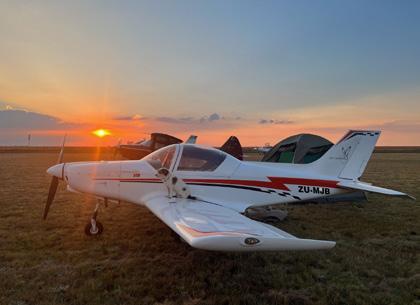


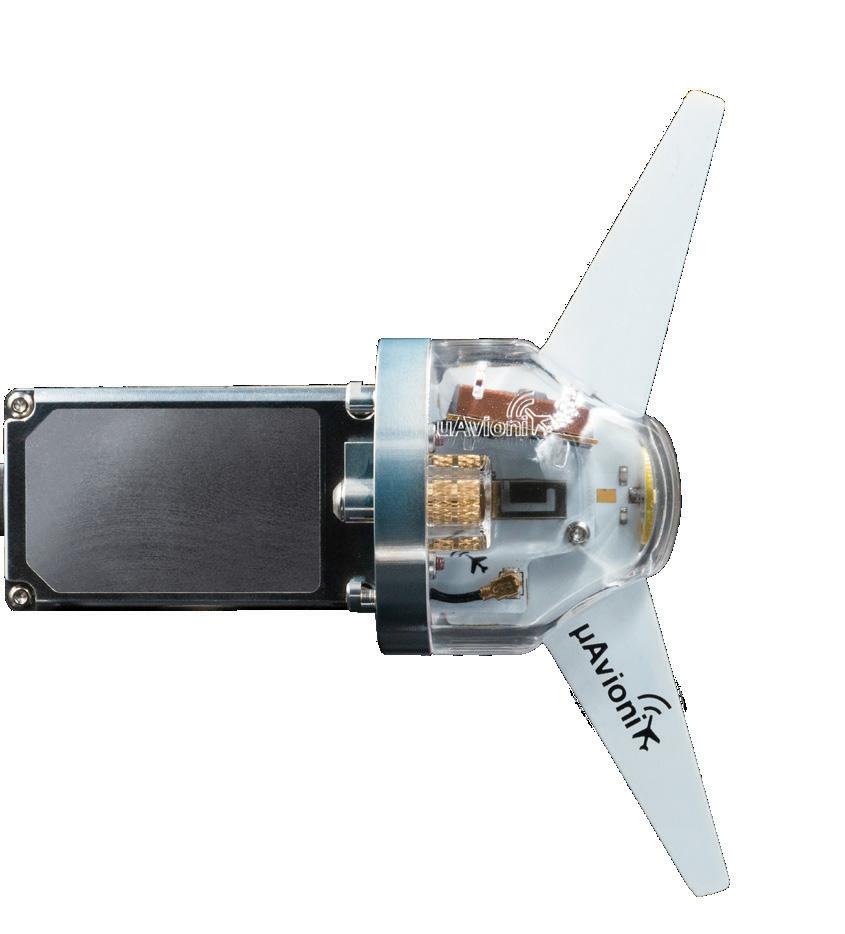

April 2024 LEARN MORE AT UAVIONIX.COM tailBeaconX AV-30 panel display. With seamless integration, advanced features, and reliability at your fingertips, the destinations are limitless. uAvionix—your key to opening the skies. LIMITLESS DESTINATIONS EAA AIRWEEK
SA FLYER 2023. All rights reserved worldwide. No part of this publication may be reproduced, stored in a retrieval system, or transmitted by any means, electronically, mechanically, photocopied, recorded or otherwise without the express permission of the copyright holders.
©



April 2024 8 10 Opening Shot 54 M & N Acoustic Register Review 56 Aero Engineering and Powerplant Aviation Fuel Table 80 Executive Aircraft Refurbishment Events Calender FLIGHTCOM 13 AME Directory 30 ALPI / BILL Flight School Listing 31 Merchant West Charter Directory 32 Skysource AMO Listing 34 Aviation Directory CONTENTS Edition 337 REGULARS FEATURES SA FLYER 30 FLIGHT TEST: PIPER’S COMANCHE 180 53 QUOTE OF THE MONTH 58 EAA AIRWEEK 2024 68 NEWS: SAA TAKATSO SALE CALLED OFF 70 STELLENBOSCH AIR SHOW 81 SAFETY FEATURE 94 NEWS: TRAVOLTA’S CROOKED PILOTS? FLIGHTCOM 14 News - Cameroon – blames Boeing 15 News - Hydrogen powered plane tested 16 ASCA’s Mpumi Mpofu: Ready for Take-off 20 Jeffery Kempson - To Paris for Lunch 25 News - Kenya - SAA Partnership Delay 26 John Bassi - Sacrifice Pt2






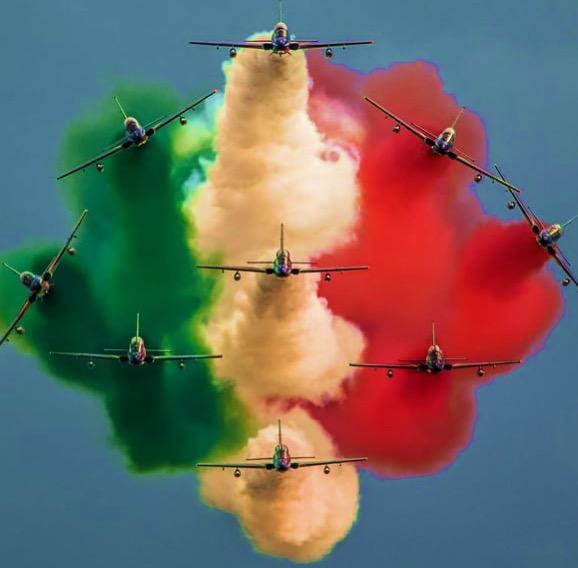
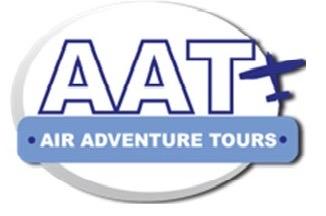
April 2024 9 Greatest Aviation Event! Oshkosh Neil +27 84 674 5674 info@airadventure.co.za www.airadventure.co.za Catered Camping on the Airfield, Tents and Bedding provided MORE INFO Flights from Cape Town & Johannesburg This Year! Canadian Snowbirds & Italian Tricolori Formation Teams

PIPER CUB FERRY
Grant Timms is one of those pilots happy to fly anything anywhere. And thus it was that he got roped into a marathon ferry flight in a Piper J3 Cub, ZS-MXT, from Springs to Morningstar in Cape Town. Day 1 was 8.3 hours to Beaufort West. Day 2 was 3.8 hours.
Grant took this picture at 6.00 am, at the start of the long journey, flying over the open fields near Henley on Klip, south of Joburg. He used his Apple iPhone 15, which produced a 24 MP image and a 1/70 second shutter speed to nicely blur the prop
April 2024 10

April 2024 11 Send your submissions to guy@saflyermag.co.za

Flying Cars A fool and his money…
There is a hoary old adage – that you can fool most of the people most of the time. And that’s enough to raise lots of money for screwball ideas. The Pegasus, a VTOL business jet that is nothing more than a computer graphic comes to mind.
ANOTHER CLASSIC IS THE IDEA of a flying car – or a roadable plane.
People have been hoping for a practical flying car for 100 years. So it’s an easy way to raise money on the bullshit baffles brains principle.
The latest flying car to do this is Alef Aeronautics, a startup backed by Tim Draper, a key SpaceX investor to give it credibility, even if he has only invested a paltry U$ 3 million. Amazingly, Alef claims to have almost 3,000 pre-orders for its $300,000 electric vertical takeoff and landing vehicles (eVTOL)
successfully flown by the company in 2016 and a full-size prototype was first flown in 2019.
It’s two-seater Model A has an unimpressive maximum speed of 40 km/h on land, — but flies at a claimed 170 km/h. (I would like to quote speeds in KTAS but will stick to km/h for the flying cars.) The range in the air is a terrible 117 km and the ground range is 322 km, but that’s a long slow drive.
a long, long line of failed attempts
Alef Aeronautics CEO Jim Dukhovny boasts that since he began taking orders in October 2022, his Model A is “the best-selling aircraft in history, more than Boeing, Airbus, Joby Aviation, and most of the eVTOLs combined.”
Alef began flying car work in 2015 and first flew a prototype in 2019. In October 2022 it unveiled its full-sized sports car model, along with two working full-size technology demonstrator vehicles. Subscale prototypes (i.e. models) were
In July 2023 the FAA gave it a Limited Special Airworthiness Certificate, and Alef says it hopes to have the Model A on the road and in the skies by “next year” – i.e. 2025.
The final Model A production vehicle is planned to be piloted at first and then have autonomous piloting ‘when it becomes available’. Alef sees their eVTOL as a ‘hop vehicle’ so the passengers use it to drive when traffic is flowing freely. And then, when they hit a traffic jam, it just transforms into a flying thing – and flies over the stuck earthlings.
What makes this latest car/plane interesting is that it doesn’t look like it has wings, either fixed
April 2024 12
ATTITUDE FOR ALTITUDE: GUY LEITCH

or rotating, and this makes it easier to drive. Its wingless car size allows it to park in a standard parking space or domestic garage.
To fly it turns into a kind of a biplane. The Model A has eight electric motors and propellers. The top of the aircraft has a mesh grill for keeping people and stuff from being sucked into the props. The bottom is open.
In flight, the vehicle’s big trick is to rotate the car body perpendicularly to the cockpit, which is gimballed to keep the passengers stable during flight. This means that one side of the car’s body becomes the top wing and the other side becomes the bottom wing. In forward flight it transforms into a box-wing biplane.
electricity for the propellers and road wheels which would extend the flight and surface range of the vehicle.
Alef’s Model A may be a clever 21st century transformer, but it’s still just the latest in a long, long line of failed attempts to make flying cars.
one side of the car’s body becomes the top wing
For non-pilots flying in VFR airspace the plane/ car has “detect and avoid technology”. Safety is naturally important, so it has redundancy in all key components. It also has a whole aircraft emergency parachute.
Naturally, Alef says it is also open to hybridelectric power using hydrogen to create the
Perhaps the most successful was Molt Taylor's series of Aerocars. Taylor was a former US Navy pilot and missile engineer. He began building his flying car in the 1940s and it is a tall sided vehicle whose wings and engine bolt on to the back of the car.
As can be seen from the many pictures of it flying, it was reasonably successful, both as a plane and car. As a plane, one was flown by a Portland radio station for traffic reporting. And, as a car, one was purchased by a Chicago hamburger chain owner, whose sons drove it to school every day.
The very first Aerocar is in the EAA Museum in Oshkosh. Taylor made it work by having all the plane parts fold up into a structure that could be towed behind the car, or left behind entirely if
April 2024 13
Jim Dukhovny, reveals the Alef Model A Flying Car.

you did not feel like flying that day.
Another flying car which achieved notoriety, in the absence of success, was the AVE Mizar, a Cessna 337/Ford Pinto mating by Henry Smolinski in 1974. It fatally crashed when a wing strut broke off its car attachment point – but it formed the basis for the Jame Bond movie, The Man with the Golden Gun. In the movie the villain Scaramanga’s AMC Matador does a similar mating trick with a wing and engine assembly that looks something like a Cessna 337 with a jet engine.
Peter Garrison bought the unneeded front engine from Smolinski’s 337 and is still using it fifty years later. He says; “Smolinski must have hoped that a few successful flights would whip up additional investment so he could work out a happy marriage between two machines that were, in engineering terms, natural enemies.”
This last sentence is key as it contains the two conflicting concepts: On the one hand they are a fundamentally unhappy marriage between cars and planes. On the other hand, they are great at creating excitement that can be turned into money for the latest design.
Modifying my opening statement: if the latest flying car is novel/cool enough, you can use it to fool enough of the people enough of the time to part them from a small fortune.
The bottom line is that planes and cars are two different animals that cannot be combined. The best result that can be hoped for is a bad plane and a bad car. That’s particularly true of current fad for eVTOL Urban Mobility Aircraft. Joby’s eVTOL has much shorter range than a light plane, but still features a 38-foot wingspan – not exactly something you can park at the local Pick n Pay.
What has also brought flying cars to the forefront is the new rage for Urban mobility. This has led to a flood of yet more money, with the net result that billions of dollars have been invested over the past decade. If the breathless

April 2024 14
A CGI idea of the Alef in flight. You can see the rotors beneath the mesh body.
Scaramangas' flying Matador escape car.

pressers are to be believed, eVTOL and flying cars will soon be everywhere. Gullible investors, who probably think those sceptical pilots are dull dolts, say that the only limitation thus far has been technological, and those problems are quickly being solved.
But the eVTOL financial failures happen just as inevitably as the flying cars did 50 years earlier. Some of the more prominent ones are Kitty Hawk, which was backed by Google’s Larry Page, (they claim to be redirecting efforts to another project). Another is Uber Elevate, which was supposed to launch in 2020 but instead was sold off as a part of Uber’s ‘right sizing’.
company has raised almost $1 billion and is going public. Uber is also an investor, as part of their deal to sell their Elevate programme to Joby.
flying cars don’t solve a problem
There are some survivors, and three in particular seem to get most of the press these days. EHang, a Chinese drone manufacturer, is flying a prototype and even planning to build a vertiport in Italy. Germany’s Lilium promises a new era of “all-electric regional air mobility” with its sleek VTOL Jet that features 36 ducted fans. It is aiming to fly four passengers at 160 knots for up to an hour.
But the leader of the pack, at least in terms of press coverage, is Joby. This California
A key reality which most of the dreamers who pump money into these things seem to forget is that planes are harder to use than cars. And too many people do a really bad job of driving. If just 10% of American cars became flying cars, we'd have twenty million flying cars. Twenty million flying cars flying 100 hours each annually is a total of 2 billion flight hours. If the world’s safest helicopter today is lost at a rate of 2 per million flight hours, can our industry tolerate 4000 videos of moms not making it home? In the age of YouTube, UAM or flying car failures of this magnitude will not be tolerable.
Here’s another think; in the USA less than 0.3% of drivers have a pilot’s license. So here’s the question: just as I have said in the past that general aviation is a solution looking for a problem, maybe flying cars also don’t solve a problem for most people? j
guy@saflyermag.co.za

April 2024 15
The ill-fated AVE Mizar.

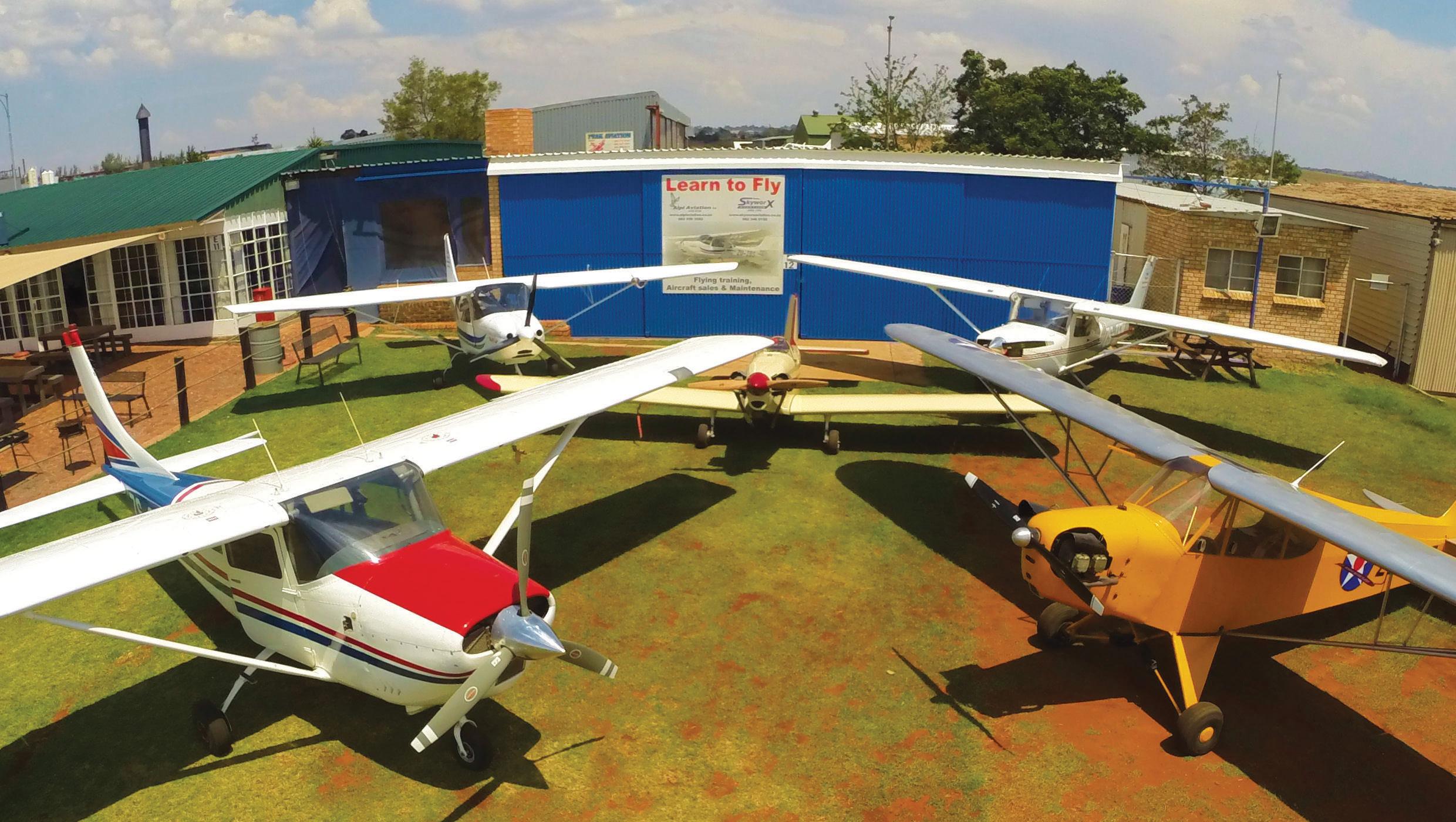

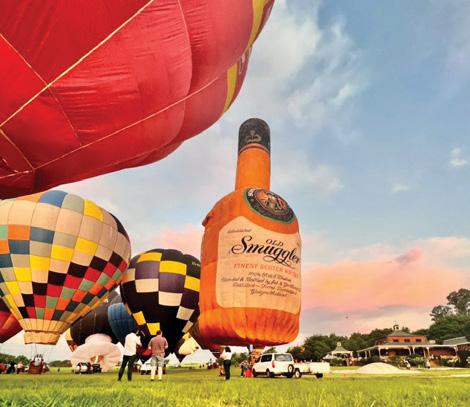




April 2024 16 WE NOW OFFER TAILWHEEL TRAINING www.alpiaviation.co.za Dale de Klerk Cell: +27825563592 Fax: 0866058948 Skype: dale_de_klerk Email: dale@alpiaviation.co.za FROM NPL THROUGH TO CPL LEARN TO FLY WITH US Bill Harrop’s ‘Original’ Balloon Safaris +27 83 457 3402 or +27 83 443 2661 / 2 • email: website@balloon.co.za • www.balloon.co.za Learn to Fly with Us • Magalies River Valley Scenic Balloon Safaris • Game viewing Balloon Safaris at Mabula Private Game Reserve • Private Balloons and Groups Rates • Team Building and Product Launches • We fly from the beautiful Magalies River Valley just west of Hartbeespoort Do it in style!

April 2024 17 YOUR AIRPLANE. READY FOR THE FUTURE. 1Additional hardware equired; sold separately. 2With select makes/models; visit Garmin.com/autopilots for more details. © 2023 Garmin Ltd. or its subsidiaries. HIGH-RESOLUTION TOUCHSCREEN DISPLAYS INTERFACES WITH POPULAR NEW AND EXISTING AVIONICS OPTIONAL ENGINE INDICATIONS WITH DATA LOGGING EASY UPGRADE TO YOUR PANEL COUPLE WITH GFC™ SERIES AUTOPILOT2 EFB FLIGHT PLAN SYNC1 GTN™ Xi NAVIGATORS AND TXi FLIGHT DISPLAYS TO LEARN MORE, VISIT GARMIN.COM/AVIATION
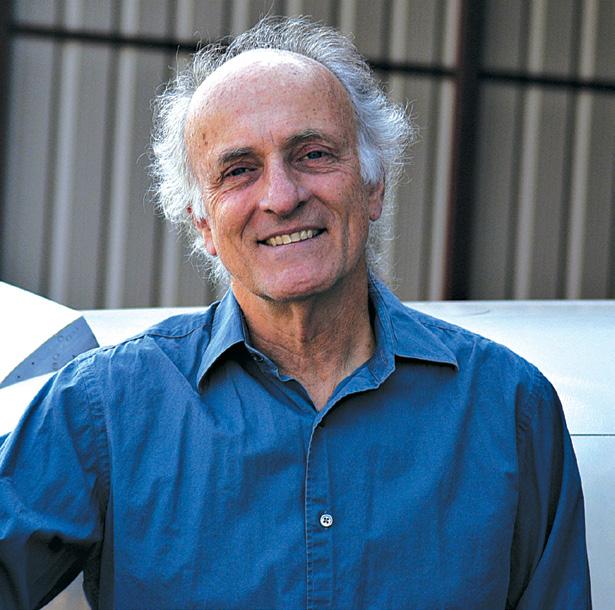
WHY CAN AEROPLANES FLY UPSIDE-DOWN¿
In 1945, the National Advisory Committee for Aeronautics, precursor of NASA and source of much of our knowledge about practical aerodynamics, published a hefty compendium of aerofoil data, NACA Technical Report 824, which later appeared in book form under the title Theory of Wing Sections.
THE NAMES OF THE AUTHORS, Abbott and von Doenhoff, have become household words wherever aerofoils are regularly discussed at the dinner table.
TR 824 presented, in the form of graphs, the characteristics of a great many aerofoils as measured in wind tunnel tests. Aeroplane designers and – perhaps even more numerous – would-be designers would pore over these graphs, alert to subtle differences that might make one aerofoil more suitable for a particular purpose than another.
as a group, what was striking was that, as with people, their similarities were far greater than their differences.
what is a wing, anyway?
To these aficionados of things round in front and pointed in back, aerofoils had distinct personalities: svelte and seductive 64-210, matronly 4418, dutiful and workmanlike 23012, exotic and mysterious 747A315.
But if one could free oneself from infatuation with one profile or family of profiles – “profile” and “aerofoil” are synonymous, by the way –and look with a cold eye on all these characters
If you superimposed all the graphs of lift coefficient against angle of attack upon one another, shifting them right and left as necessary to cancel the effects of camber, you found that they all formed a single slanting line that fanned out at its top and bottom ends into a spray resembling a spent firework. Remarkably, the line was practically straight; an aerofoil gained the same amount of lift when its angle of attack increased from five to six degrees as it did when it increased from one to two.
The fraying at the ends represented the different ways different profiles stalled. Some aerofoils achieved greater maximum lift than others, so that the straight line extended farther before buckling and reversing its direction. Some, on stalling, lost lift suddenly and drastically: The straight line ended in a sharp peak and then plummeted. Others hung on stubbornly as angle
April 2024 18
PETER GARRISON

of attack increased, rounding over gently and giving up lift a little at a time; these were the ones you wanted for STOL aeroplanes.
But if you looked only at the range of angles of attack actually used between climb and top speed – say, from plus eight degrees down to minus one – the lifting properties of all aerofoils were practically the same. Stranger still, you could flip the lines upside down and they still looked the same. In other words, they would behave the same way upside-down as they did right-side-up.
The simple answer is that it doesn’t. We all know that wings without aerofoils – the wings of simple balsa wood gliders, for example, or those of folded-up sheets of paper – fly fine.
So what is a wing, anyway?
the whole magic of aerofoils
How could that be, if the whole magic of aerofoils depended, as so many books and articles said, on their special shape, and, in particular, on the upper surface having more of a hump than the lower?
Basically, it’s a flat plate in a cute outfit. The rounded leading edge delays flow separation and stalling at large angles of attack. Camber, which gives many aerofoils their humped look, is just another way of helping air stick to the surface without separation. Camber also happens to give an aerofoil a top and a bottom: A cambered aerofoil will stall at a lower angle of attack inverted than right side up. For example, the NACA 65-415 laminar-flow aerofoil of the Piper Cherokee series stalls right side up at an angle of attack of 16 degrees and a lift coefficient of 1.35. Upside-down, the numbers are 13
April 2024 19
Gustav Tweers' Grade - that could be flown and landed upside down.
degrees and 1.05. Roughly the same is true of the 23000-series profiles used on a great many Cessna and Beech aeroplanes.
(Lift coefficient is the ratio between the upward force generated by a wing and the impact pressure of moving air. For example, at 100 mph the impact pressure or “dynamic pressure” is about 25 pounds per square foot. A wing with a lift coefficient of 1.2 would generate 1.2 times 25, or 30 pounds of lift per square foot at 100 mph.)
It follows that, camber notwithstanding, it is not a problem for any wing to fly upside-down. Stalling behaviour and drag may change a bit, and so aeroplanes designed for aerobatics use symmetrical aerofoils to eliminate any preference.
inverted flight, but what mainly surprised me, apart from the feeling that no matter how tightly I cinched my seat belt I still felt that I was falling out of my seat, was the amount of forward stick needed to hold the nose up and maintain level flight. To be sure, the aeroplane was, at least initially, trimmed for upright flight; but that ought to affect only the stick force needed to fly inverted, not the stick position.
symmetrical aerofoils to eliminate any preference
Reflecting later on the strange sensation of holding the stick far out in front of me, I realized that it was due to the aeroplane having some builtin nose-up trim, in the form of decalage – a slightly negative incidence of the stabiliser relative to the wing. In upright flight, negative stabiliser incidence lifts the nose; in inverted flight, it makes the aeroplane want to dive, and has to be counteracted by extra “up” –that is, stick forward – elevator.
When I first flew upside-down for any length of time it was in a Pitts Special. Much is made of the fact that turning controls are reversed in
It was not long after people found out how to fly that they found they could fly upside down.
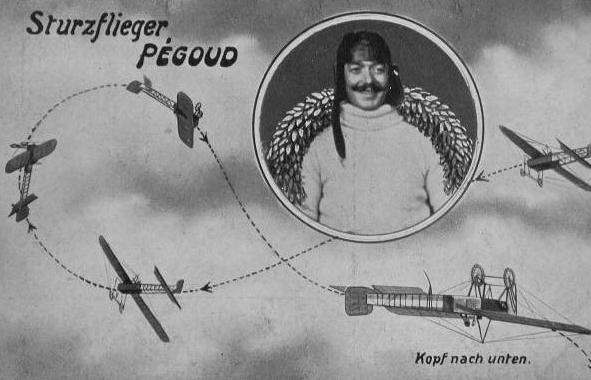
April 2024 20
The first to successfully fly inverted.
The principal activity of pilots prior to World War One was making a spectacle of themselves, and despite the rickety appearance of early aeroplanes, pilots performed many daring stunts in them.
The first pilot to invert an aeroplane was Alphonse Pégoud, who did the trick in 1913 in a Blériot monoplane. This was the same type of aeroplane as Blériot himself had used for the 1909 crossing of the English Channel that made him famous, and it was singularly ill suited for inverted flight, its wing having far more camber than necessary even for upright flight. The Blériot’s wing was so severely cambered that I’m sure it would have been incapable of sustained inverted flight; but it could “loop the loop” because in those manoeuvres lift was always in a positive direction relative to the airframe.
Sustained inverted flight was not far behind, and it reached its reductio ad absurdum only a year later when a German daredevil named Gustav Tweer (pronounced Tvehr), whose specialty was diving straight at the ground and pulling out at the last possible moment, modified a Grade (pronounced GRAHdeh) monoplane by adding a mirror-image of its own landing gear and amused crowds by not only flying, but also landing, upside-down.
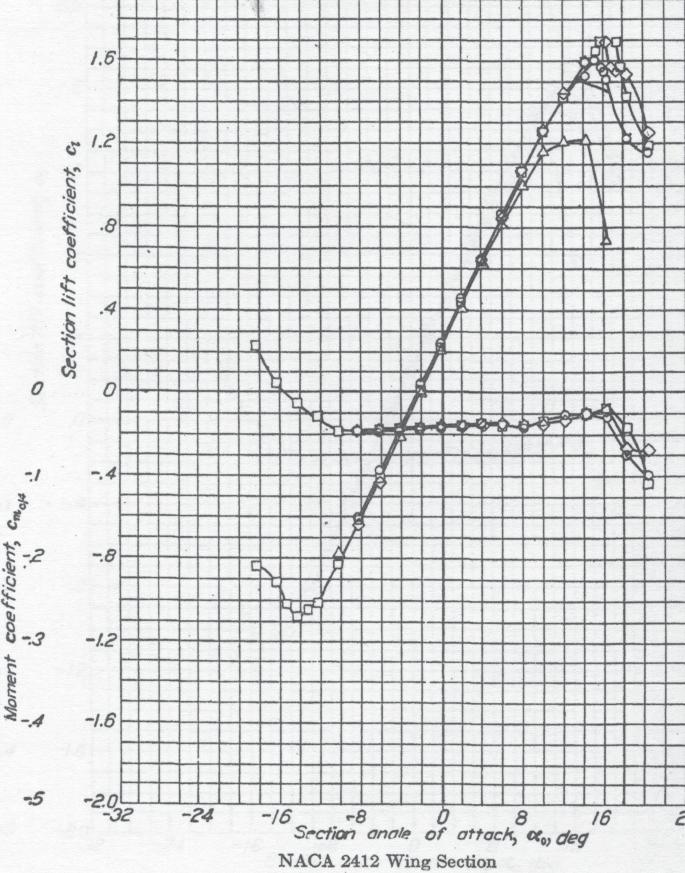
Blériot gave his; in fact, the wing aerofoil of Tweer’s invertible Grade appears to have been symmetrical.
not only flying, but also landing, upside-down
Hans Grade was Germany’s Blériot, and it is apparent from pictures of his aeroplanes that he realized that a wing did not need all the camber
The problem of inverted flight is really not an aerodynamic one at all. Aeroplanes – all aeroplanes – are capable of flying upside-down. It’s engines that are the problem. To keep them running, they need invertible fuel and lubrication systems. These typically involving a weighted hose that drops to whatever happens to be the bottom of the fuel or oil tank at the time. It is, come to think of it, one of the hitherto under-appreciated virtues of electric aircraft that you can fly them upside-down without any modification. Just remember to make your seat belt very, very tight. j
April 2024 21
Typical aerofoil drag curve plotted.
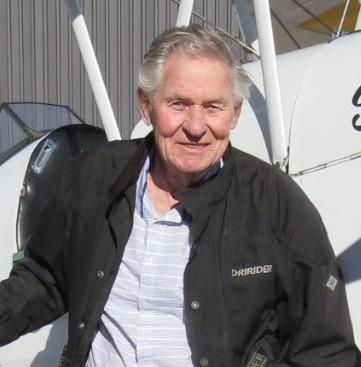
RIGHT SEAT RULES NO. 16
FUEL SYSTEMS WHY SO COMPLICATED?
You know those aggranoying people who say, “Oh I wouldn’t fly in one of those little things – you can’t just pull over and fix it if something goes wrong”? What makes this particularly irritating is that the bastards are right.
PUPES, PILOTS AND INSTRUCTORS lend me your ears. By far the most common reason for aeroplanes to ‘break down’ is because the pilots didn’t understand the fuel system.
There are at least twenty things that you have to know about your aircraft’s plumbing if you plan on a long and healthy future in aviation. I’ll tell you about them in a moment.
Now, let’s see how that compares with a car which has just three that are nice to know:
• Which side the filler is on
And if you don’t get these things right in your car, the worst that can happen is that you have an unplanned stop while you phone the AA.
You really don’t have to understand cars, or your watch, because they just keep working despite your ignorance.
disappear into the grass without a trace
• How to open it while sitting in the car
• It’s still got some gas after it shows ‘E’
You don’t even need to know whether it’s petrol or diesel – the refuelling guy will tell you if you are interested.
Okay cowboy – we are not talking about your boet’s E-type with triple SUs, and we won’t mention Land Rovers – we are thinking of normal little boxy cars that all look the same and don’t break down.
But aeroplanes are not that easy – and they DO give trouble, and phoning the AA won’t increase your life expectancy. So let’s look at those 20 things you need to understand in order to avoid a worrying silence ahead of the firewall.
April 2024 22 PLANE TALK - JIM DAVIS
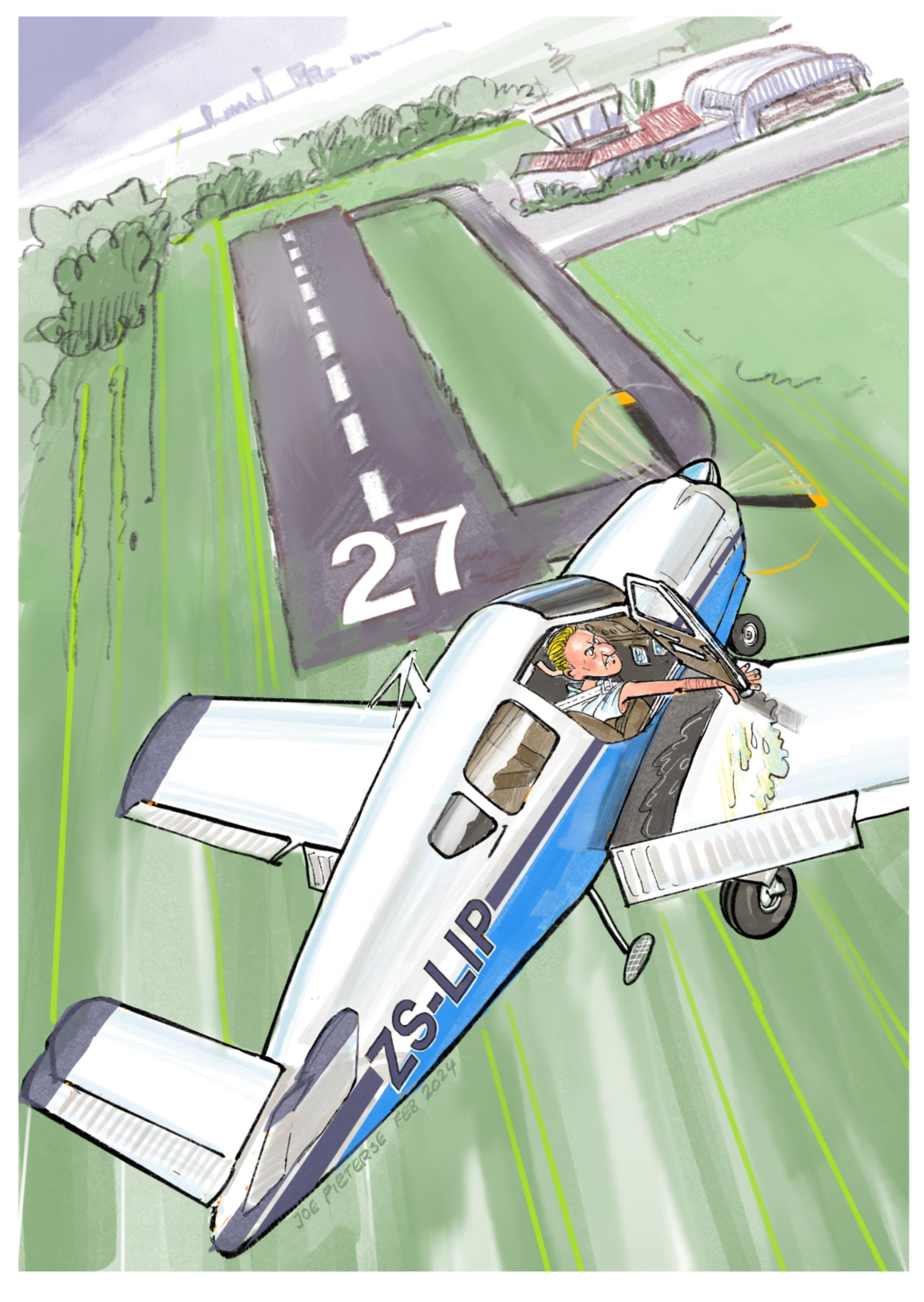



April 2024 24
1) Fuel Gauge
These are NEVER to be trusted. The problem is that wing tanks are often of such a shape that it’s not possible to make gauges that tell the truth under all circumstances. We discussed this at length last time I saw you.
2) Fuel Pressure Gauge
This measures the combined pressure of the mechanical pump and the electric pump which both feed the carburettor. The normal pressure is somewhere between about two and seven psi.
Have a look at the diagram and try to figure what would happen to the fuel pressure if you accidentally left the fuel low-point drain on (#15). No, I’m not going to tell you –this is all part of understanding and being involved
A fuel pump is needed on lowwing aircraft to raise the fuel from the tank to the carburettor. Many small, high-wing aircraft don’t even have a pump – they rely on gravity to do this job.
the fuel goes where the ball goes. So, if you are sideslipping to the left and you are selected to the left tank, it’s possible the engine will starve.
And remember that Madame Beech warns that a rolling takeoff can cause the engine to die. She means if you do a cowboy turn onto the runway – say to the left – then the fuel may slosh away from the outlet on the right tank and cause you some despondency during takeoff.
4) Electric Fuel Pump Switch
Oh boy, this little goody can kill you in seconds if you get it wrong on takeoff or on aircraft propelled by Conti fuel-injection engines.
If there is one switch in the whole aeroplane that should be labelled FFS THINK, it’s this one.
gallons of water in all the tanks
Don’t confuse fuel pressure with fuel flow. We are keeping this simple and just dealing with carburettor engines – not fuel-injected ones that have fuel flow gauges.
However, while we are on the subject, if you are flying a fuel-injected aircraft, fuel flow is absolutely critical. I’ll tell you about it in a minute.
3) Ball Slip-Indicator
Thinks, maybe the vicar has become deranged, I thought we were discussing fuel. Fear not, dear parishioner, we are all singing from the same hymnbook. Those who were paying attention to previous sermons will remember that
This isn’t the place to go into details of how the fuel-injection system on a six-cylinder Continental engine works, but briefly this is what happens. The electric fuel pump switch has three positions: OFF, Hi and Lo. The Hi position is ONLY used to purge the system of vapour locks. If you use it at any other time the engine will stop. It must NEVER be used on takeoff.
Don’t take my word for it – see what the POH says for your particular aircraft.
With the six-cylinder, fuel-injected Conti, the pump must be on, but only in the Lo position.
I keep seeing accident reports, often fatal ones, where a Bonnie or a C210 or a Seneca has crashed and burned on takeoff because the pump was selected to the Hi position.
You have been warned.
While we are on the subject, it’s critical with a fuel-injected engine that you keep a sharp eye
April 2024 25

on any fluctuations in fuel flow during takeoff. The slightest flicker or wandering of the needle calls for an immediate abort. Don’t assume it’s just an air bubble and wait to see what happens – take it as a warning that all is not well.
Finally, a good pilot keeps his finger on the fuel pump switch and watches the pressure, or flow, for a few seconds after switching it off.
5) Fuel Level Step
Piper has got this dead right – it’s a really useful bit of clever design. On the Cherokee range, the main tanks hold 25 US gallons each. If you are on level ground and the fuel is at the step, then you have got 17 gallons which means that the tank is 50 lbs lighter than when full.
To keep it nice and easy – if you tell the fuel guy to fill it to the step, then you know you can carry an extra 100 lbs in the cabin.
April 2024 26
William Piper.
And if you want your 140 or 180 Cherokee to be in the ‘utility’ category for training, then the rule of thumb is no rear seat pax, no luggage and the fuel at or below the step. Easy peasy Cherokeesy.
6) Breather (Cessna only)
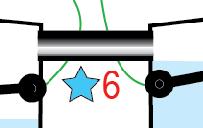
In contrast, this little pipe joining the two tanks on the 100 and 200 series Cessnas is about the worst piece of design I have ever seen. It has been directly responsible for hundreds, perhaps even thousands, of these aircraft running out of fuel.
For reasons no one seems to understand, Clive Cessna decided he only wanted one breather –and he put it under the left wing of these aircraft and connected it to the left tank. Then he ran a troublesome pipe across to the right tank, so it too could breathe.
The purpose of a breather is to allow air into the tank to replace the fuel as it’s used. If the breather gets blocked say by ice, or by a bug making its home in there – and this can happen in a few hours – then one of two things will happen during the flight. Either the fuel will stop flowing after a while, or the rubber fuel cell – if the tank has one – will collapse and scrunch up into a little ball which will hold about two gallons next time you refuel it.
Mr Cessna’s stupid little pipe not only allows air to flow from one tank to the other – but obviously fuel as well. This has all sorts of consequences, but the main one is that if you get say three hours out of the left tank then you would expect the same out of the right tank. It won’t happen – you have probably only got an hour-and-a-half in the right tank because the fuel cross-feeds as you fly.
This is an extremely dangerous, and surprisingly poorly understood, characteristic of the stupid system.
Also, if you fill both tanks in the evening ready for an early departure the next day, they will only stay full as long as you are parked on level ground – and I mean absolutely level. If it’s slightly left wing down – even a soft tyre can cause that – then the right tank will cross-feed into the left one and this will overflow through the breather and disappear into the sand or grass without a trace. And the longer it does this, the lighter the right wing becomes and the more the aircraft will lean to the left.

This is a surprisingly complex bit of engineering. Think what is has to do. It must act as a breather to let air in – but not water, despite being left outside in torrential storms or even flown through TSs. It also has to prevent fuel sloshing out.
April 2024 27
7) Fuel Cap (The Piper fuel cap with breather)
It also needs to be aerodynamically unobtrusive. Ideally, it’s sunk into the top surface of the wing and has a nice smooth cover over it. But hang on, if water gets past the cover then the cap will soon be submerged by the water filling up in the recess. That’s no good, so they put a nice big drain pipe out of the cavity – and we have to make sure that bugs don’t build their condos in there.
Clyde Cessna and Victor Roos bumbled around for 50 years trying to design fuel caps that keep the water out, let the air in, and keep the fuel in. They kept producing modified caps that didn’t really work. Eventually, they decided to hell with aerodynamics, and built a big solid thing that looked like it came from the radiator of a 1932 Fordson tractor. This seemed to work, so they painted it red to let you know you have got the right one at last.
Sorry to harp on about Piper, but the Cherokee caps have never given anyone an ounce of trouble and they cause very little inconvenience to the airflow. You need to look very, very carefully to see how they work. On the photo, the bottom arrow points at a small square section groove that runs above the main gasket and vents into a cavity behind the circular red valve in the centre. This is made from paper-thin red rubber which lifts slightly to allow air in but easily withstands the pressure of fuel sloshing against it. It never lets water in.
8) Float for fuel gauge
9) Fuel tank breather
Enough already – we have discussed breathers ad nauseum. On your Cessna preflight you will find the breather pipe sticking out below the left wing – just behind the strut. It is bent to face forward into the airflow. And the Cherokees have one under each wing near the tank – it sticks down about 15mm and it is cut off at an angle.
It’s also a terrible piece of design because it’s small, and almost impossible to inspect for bugs.
I wouldn’t be surprised to find that many of the Cherokee ones are blocked. Fortunately, the excellent fuel cap breathers probably save the day.
look very, very carefully to see how they work
10) Outlet + coarse filter
The position of the outlet determines how much unusable fuel there is in the tank. Obviously any fuel below the level of the outlet is unusable. Why should we want unusable fuel? Actually we don’t. If we could be sure that all the stuff at the bottom of the tank was nice clean fuel, then we would really like to use it.
The trouble is that dirt and water are likely to go to the bottom, and we don’t want them getting into the system.
These seldom give trouble – and they also seldom give accurate readings. We have discussed this endlessly. The only thing you really need to know is that all fuel gauges are not to be trusted with your life.
The fuel drain is right at the very bottom of the lowest point, so in theory we should be able to get rid of any crud and water by draining it there. But that’s not always the case – we’ll discuss that next.
The coarse filter prevents any large objects –like coins or nuts and bolts, which you might accidentally drop into the tank – from blocking the outlet pipe.
April 2024 28
11) Tank low-point drain
This should be easy – you drain a bit into your little transparent goodie, make sure it has no water or sediment in the bottom, check it’s the right colour for avgas (light blue), confirm it smells like avgas, and dispose of the sample. You do this either by pouring it back in the tank, or chucking it on the concrete where it will evaporate – but not on the tar, because it eats tar.
But what if the tank doesn’t really have a low point because the aircraft is parked one wing low? Or because it’s parked nose down, or has a soft nose oleo? Or because the floor of the tank has slight ripples in it – particularly bladder tanks?
All these are common problems – particularly on high-wing aircraft with little dihedral.
lost it. He hurled his slide rule to the floor in desperation, and sent us all a letter saying, just make sure the wings are level and rock the aircraft from side to side to clear little dams of water. And, if necessary, get someone to hold the tail down so the water goes to the drains at the back
If you didn’t get his letter, don’t take it personally, but just do as he says.
which you might accidentally drop into the tank
On the 100 and 200 series Cessnas, the original one drain point per tank was found to be insufficient. The drains were positioned at the rear end of the inboard sides of the tanks. This was because these aircraft have very slight dihedral and normally sit slightly nose up. So everything is fine as long as you do your preflight on perfectly level ground – and you hope the tank has no wrinkles in the bottom which could contain little dams of water.
It took a few years for Clyde and his mates to realise there was a problem, but when they did, they rushed forward with a mod which pretty much sorted it out. They got everyone to fit two – or sometimes three – more drain points per tank. So some Cessnas have eight drain points, which sorts out the pitch problem.
Jawellnofine. But that still left the wing-down and wrinkle problems. At this stage, Clyde Cessna
Now it’s Pug Piper’s turn to catch it in the neck. Briefly, he caused me to lose both engines in an Aztec because, when I thought I was draining from the low points on the tanks, I was actually draining the fuel in the pipes that travel from the low points to the remote drains below the engines. There were gallons of water in all the tanks, it’s just that I wasn’t draining the tanks – I was simply draining fuel from the pipes.
Even worse is Piper’s stupid system that lets you drain all the tanks from within the cockpit. It’s impossible to see the colour properly through a yellowing plastic pipe. Equally, you can’t smell the fuel, or spot water or sediment. This is on the Comanches and Saratoga series.
Just past halfway on our 20 point fuel system. The rest at evensong. j
April 2024 29

PIPER’S COMANCHE 180
- IT TICKS ALL THE BOXES
April 2024 30 FLIGHT TEST: PIPER’S COMANCHE 180

April 2024 31
The 'baby' Comanche 180 is still a very capable performer - with great range.
The Comanche is a fabulous plane – that was frankly just too good to be a Piper.
THE COMANCHE WAS DESIGNED by Howard “Pug” Piper, the son of company founder Bill Piper. It featured advanced design features such as a tapered laminar flow wing and an all moving stabilator in place of the more common fixed horizontal stabiliser and elevator.
The Comanche’s innovative, but labour-intensive design features, made it expensive to build. Then, when Hurricane Agnes flooded Piper’s Lock Haven, Pennsylvania, production facility in 1972— it was all the excuse Piper needed to end Comanche production and replace it with the cheaper and easier to build PA-28 Cherokees.
the Comanche, Piper’s top-of-the-line singleengine model was the fixed-gear, boxy-looking, rag and tube, PA-22 Tri-Pacer.
tip tanks add a very useful 200 lbs
The Comanche was Piper’s first modern aircraft. In 1957, just the year before the introduction of
It is noteworthy that, after decades of churning out high-wing planes, Piper chose a low-wing for its first all-metal plane. One explanation is that Al Mooney, the founder of Mooney Aircraft, was flying an early M-20 prototype and landed at Lock Haven because of bad weather. Pug Piper found room in a Piper hangar for the llow wing plane and promised to keep it safe while Mooney continued his trip. It’s said that Piper engineers went over the Mooney with a fine-toothed comb – and that’s why the Comanche as the first all-metal Piper, looks a lot like a Mooney, but without the Mooney’s iconic ‘backwards’ empennage.
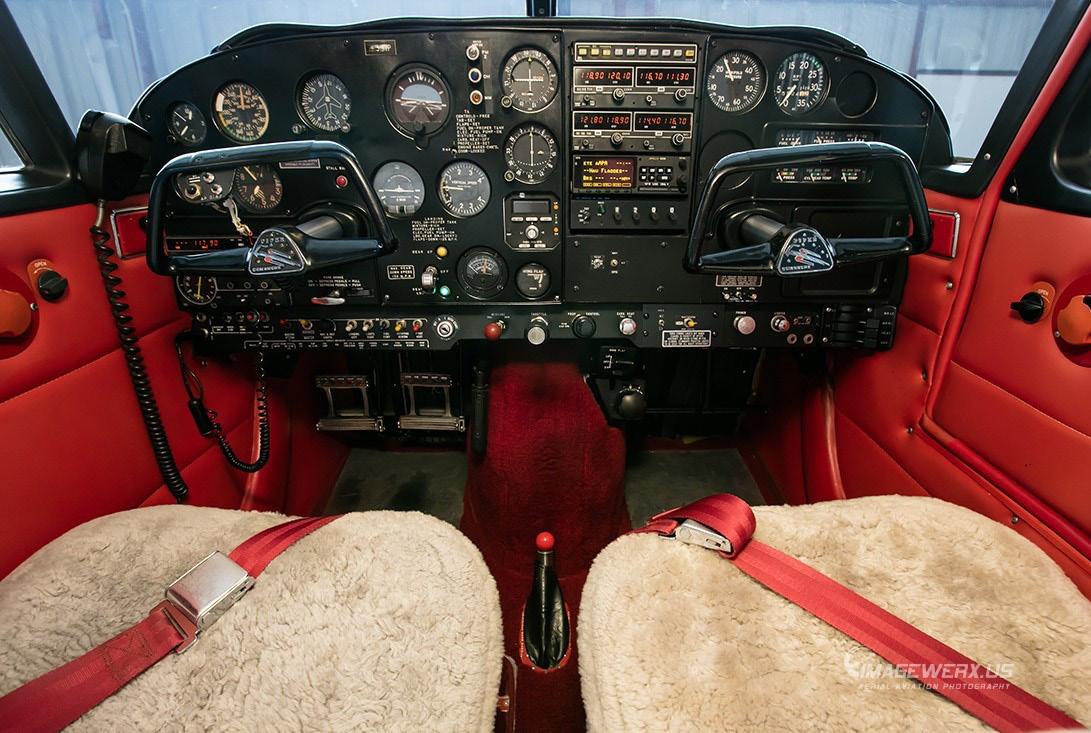
April 2024 32
than earlier models.
The post 1961 panel layout is more conventional
Under- appreciated
The subject of our review is the ‘baby Comanche’ – the 180 hp model. Some considered it underpowered, particularly compared to the hot-rod 400 hp version which we reviewed last year, but the humble Comanche 180 has proven itself to be a remarkably capable plane in its own right. It deservedly sold well, with 1,184 Comanches 180s being produced from 1958 to 1964.
strong a following as the V-tail Bonanza, nor is it as common as Piper’s retractable Arrows and Lances. But pilots seeking an economical, comfortable, and durable plane that looks as good today as it did when it was first introduced in 1958, should give a baby Comanche a look.
A lot of bang for the buck
On 24 November 1959, Max Conrad landed a 180 hp Comanche in El Paso, Texas after having flown non-stop across the Atlantic, from Casablanca on a record-setting 6,966-nm flight. Conrad’s numerous feats of endurance put the Comanches on the map.
Today, the Comanche 180 may not have as
What they will find is a four-place plane that cruises at 135 to 140 knots, burns 9.5 to 10 gallons of fuel per hour, has beautifully balanced handling, is capable of 700-nm legs, and can pack 650 pounds of payload (2 adult men and 2 children), after the tanks are filled with 60 gallons of fuel.
On the ground
The plane sits low on the ground – like a sportscar. The wing is easy to strep up onto, and thus getting into the cockpit is easier than a Bonanza. A notable feature is that all three

April 2024 33
Beautifully smooth laminar flow wing with neat hatches for fuel fillers.
wheels are the same size, which makes dealing with tyres and punctures easier, although the nosewheel looks strangely big. But this makes it reassuringly sturdy and able to handle the bumps and holes in gravel farm airstrips.
The Comanche fuselage, wing structure, and tail are common for the 180-, 250-, and 260-hp variations. Owners of 180s are reassured that the same structure that is limited to a 2,550-pound maximum takeoff weight (MTOW) in their plane is also strong enough for the 3,200-pound MTOW of the 260-hp version.
Another reassuring design feature is that, even though Comanches are low-wing planes, the bottom of the spar is well protected. Rarely does the load-bearing portion of the wing, such as the main spar, get damaged in a wheels-up landing. That’s good news for pilots and owners, especially considering that the majority of Comanche accident reports involve the landinggear.
Excellent handling qualities
The wing is built around a hefty I-beam main spar. Since the thickest section of laminar flow aerofoils is farther aft in the chord of the wing than non-laminar flow wings, the inner ends of both spars bolt together under the rear passenger seat. This permits a flat cabin floor, much appreciated by owners.
In 1977 the FAA decided that the landing gear failure rate was so abysmal that it incorporated an entire section on landing gear maintenance from the aircraft service manual into a repetitive airworthiness directive (AD 77-13-21). This AD requires inspections and refurbishment of landing gear wear points every 1,000-hours.
The landing gear uses a single bi-directional electric motor controlled by the landing gear switch. There are two flexible conduits to
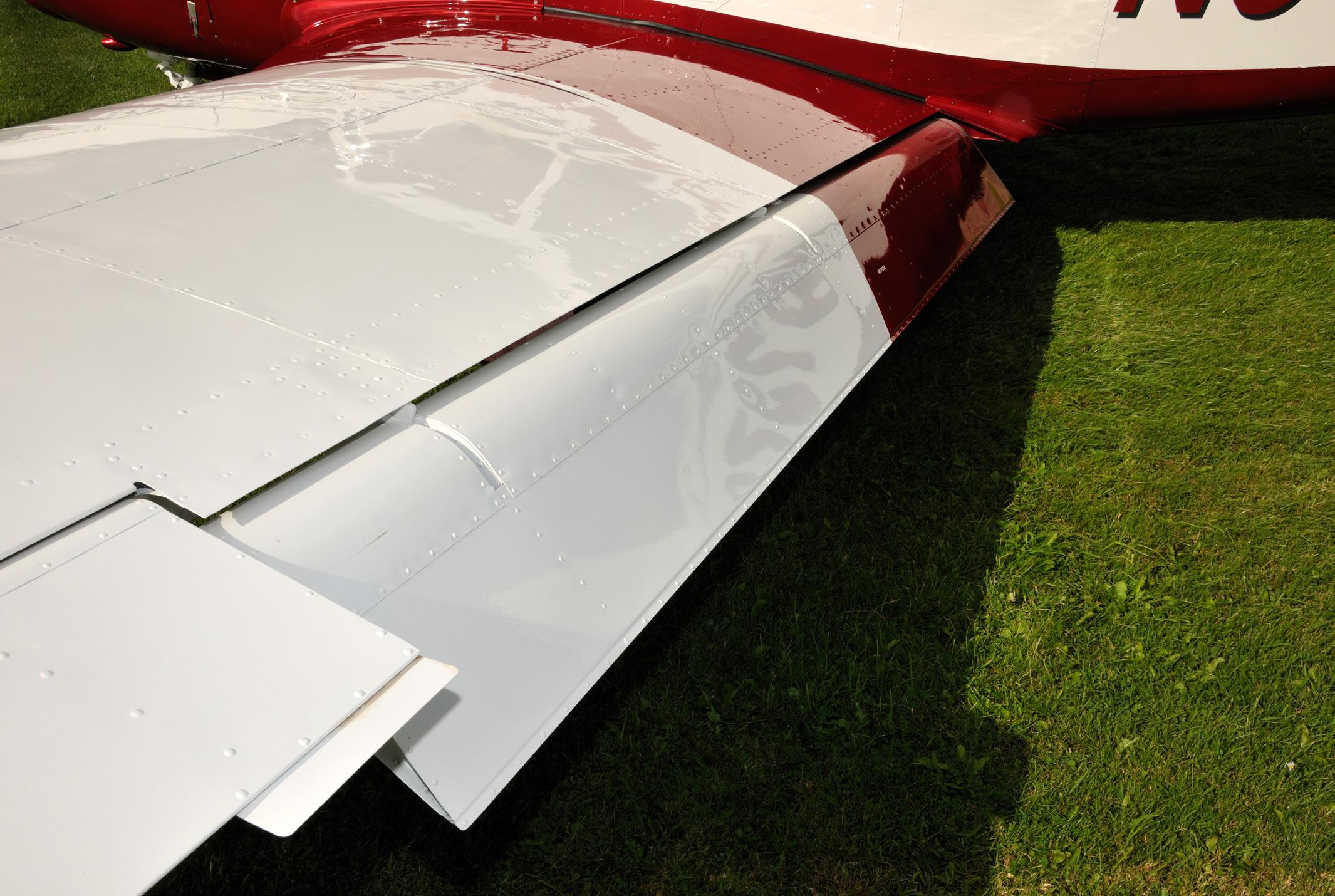
April 2024 34
Wide simple flaps provide decent stall speed for a 'hot ship'.

April 2024 35
Smooth finish continued to all moving horizontal stabilator.
transmit motion from a cross-shaft to the main landing gear actuating linkages in each wheel well.
There are a lot of moving parts in the gear system, but when properly maintained, it’s strong and reliable. A mechanic experienced with the Comanche landing gear system is indispensable to owners.
The Cabin and Cockpit
The subject of our review is ZS-CXH, a remarkably low time 1962 Comanche 180, that has just 2340 hours total time – and 283 hours since the engine’s only major overhaul.
The average Comanche PA24-180 weighed 1,535 to 1,550 pounds when it left the factory. Standard maximum takeoff weight is 2,550, but as will be seen, the tip tank modification adds a further very useful 200 lbs to the max all up weight.
The cabin, in true Piper and Beechcraft single-engine fashion, is accessed by climbing up on the right wing. Then you step down to the floor on the co-pilot’s side and slide across to the left seat.
Large nosewheel matches main wheels and gives good rough field capability.

pounds). The baggage compartment is large enough to accommodate 2 children’s seats in the same sized Twin Comanche and Comanche 260, making it a 4 plus 2 seater.
The cabin is comfortable andwide, measuring 45 inches across by 47 inches tall. The windows and windscreen are low, like a 1950s hot rod. Although some claim poor visibility, Comanche pilots don’t seem to notice. Knots2U, manufactures STC-approved Arapaho windscreens, which gives better ahead and vertical visibility.
The baggage compartment is large and is located behind the rear seat. It is accessible through a 20-inch by 20-inch door and can handle 200 pounds (except for serial numbers 24-1 through 24-102, which are limited to 100
For the early models the flaps were manually actuated to: 9, 18, and 27 degrees down, by a large floor-mounted lever. In 1962 this ‘Armstrong’ system was replaced by electric flaps. Similarly, in early models both main wheel brakes were simultaneously applied by a single pull-type lever immediately below the throttle knob, until 1961 when toe brakes became standard. The nosewheel steering only covers a 40 degree arc, which creates quite a large turning radius.
Pre-1961 instrument panels are non-standard—
April 2024 36
there’s room for avionics on the extreme left and right, while the middle is occupied by a shock-mounted floating panel with a scattering of instruments anchored by a pair of huge gyros. From 1961 the panel was updated to include a centre-stack avionics rack and a conventional six-pack grouping. Being a 1962 model, ZS-CXH has a standard six-pack panel.
pitch trim knob to relieve pitch pressures, which are moderated by an anti-servo tab. Once trimmed in cruise, well-rigged Comanches move along as if on rails.”
Flying the Comanche 180
An AOPA review notes that, “Every Comanche 180 owner praised the plane’s flying qualities. All control surfaces are well balanced, and normal flight ops rarely require anything more than fingertip pressures. That said, it’s important to realize that the stabilator is powerful, and Comanche pilots soon learn to carefully turn the ceiling-mounted
quite a large turning radius.
Some have tagged the Comanche 180 as a “ground-hugger” because the laminar flow wing trades low-speed lift for less drag in cruise. Yet the handbook cites a good 1,370 feet to takeoff and climb over a 50-foot obstacle at sea-level at MAUW. Once you reach Vy, the best rate-of-climb speed, of 96 mph (83 knots) with the gear up, gives 910 fpm.
The Comanche airframe is slippery, and if pushed, the humble 180 can scoot along at up to 145 KTAS at a typical FL65 with the ‘balls to the wall’. This slipperiness requires Comanche pilots to plan descents as the airspeed can quickly slide into the yellow arc. Fortunately the

April 2024 37
'Donkey dong' emergency gear extension lever behind large bulge for the full size nosewheel.

bulletproof Lycoming O-360 four-pot banger is not particularly vulnerable to shock cooling.
The wheels can be extended at up to 150 mph (130 knots) to reduce speed and keep the power up during descent, although most Comanche owners try slow to 120 mph (104 knots) to reduce wear on the gear doors and actuating system.
ZS-CXH has 2 x 15 USG tip tanks, which are a popular option, especially for those who want to only use Avgas, whose suppliers may be few and far between.
As noted, having tip tanks increases the Comanche’s max all up weight by 200 lbs. A commentator on the Comanche Forum writes; “There is no downside to tip tanks on a Comanche other than changing a landing light.
I installed Osborn tip tanks about 10 years ago and love them. When full, the tanks weigh 200
lbs and the tanks’ STC ups the gross weight by the 200 lbs. Fly a tip tank Comanche with empty tips and you have an extra 200 lbs. useful load. The extra weight and drag of the tanks is offset by the winglet effect of the tanks and the plane actually goes 1-3 mph faster.”
Installing tip tanks is also a good reason to switch to LED landing lights. “The bulbs should outlive me. The biggest speed increase comes from not spending an hour making a fuel stop. Each tank holds 15 gallons, so your endurance is increased by nearly 3 hours.”
Much has been written about Comanches being hard to land smoothly as they tend to unexpectedly stop flying and drop out the sky. The combination of a laminar-flow aerofoil that stops flying abruptly, the wing having a positive angle of incidence, and a large nose wheel, result in a plane that gets light on the gear during takeoff. Most of the problems with hard
April 2024 38
Reat seat space is good - but you need to leave some fuel behind if you want to put adults in the back.
landings are caused by poor speed control and failing to add enough nose-up trim on short final.
A common view is that the baby Comanche is easier to land than the larger-engined, latermodel Comanches because of the lower weight of the four-cylinder engine.
Owning a Comanche 180
The baby Comanche is powered by Lycoming’s tried and tested four-cylinder, 180-horsepower O-360 A1A engine with a genuine TBO of 2,000 hours. This engine is renowned for its durability, and in the USA, when flown ‘on condition’ it is not uncommon for these engines to still be running strong at 3,000 hours if well maintained and flown regularly. Parts are plentiful, and the systems are simple.
The original prop was a two-blade Hartzell, which has been subject to a couple of expensive airworthiness directives. These propellers are subject to a recurring 500-hour inspection. McCauley sells a replacement two-blade propeller with a 2,000-hour TBO for a little over $7,000. Three-blade props are readily available.
a great value plane to buy and own
At first glance there seems to be an almost endless list of airworthiness directives (ADs) that apply to Comanches, but this is misleading. Only a few still apply. In addition to the 1,000-hour landing gear AD already mentioned, there is also an AD requiring the replacement of two bungee cords (rubber bands) on the undercarriage every three years or 500 hours, whichever comes first.

ZS-CXH has the optional tip tanks which weigh 200 lbs full and increase the MAUW by 200 lbs.
April 2024 39
Conclusion
The Comanche is a great value plane to buy and own. Compared to more modern light four place singles, such as the Mooney, Cessna’s Cutlass RG and Cardinal RG, and the Piper Arrow, the Comanche 180 is the lowest-priced. Yet because of its great build quality and strong structure, and because of Piper’s decision to apply primer paint on all the aluminium airframe parts before final construction, PA-24 airframes have resisted corrosion well.
The combination of great looks, sportscar-like handling, moderate operating costs, an easyto-maintain engine, and good point-to-point speeds, tick all the key boxes and make the baby Comanche a very desirable plane for pilots seeking a thoroughbred from the days when beauty and shape were wisely combined with form and function.
ZS-CXH is for sale - contact Nick on +27 (0)82 688 0578
The short nose Comanche 180 is still very capable. j

Comanche 180: Hits and Misses:
Hits
• Economical to operate
• Sturdy airframe
• Simple systems
• A lot of bang for the buck
• Excellent handling qualities
• Good support and owners’ club
Misses
• Not easy to get into and out of
• Visibility somewhat limited
• Landing gear maintenance needs experience
• Limited high altitude performance when fully loaded
April 2024 40

PIPER COMANCHE 180
and
Specifications
Performance
SPECIFICATIONS Engine Lycoming O-360 A1A Recommended TBO 2,000 hr Propeller Hartzell or McCauley Length 24.7 ft Height 7.3 ft Wingspan 36 ft Wing area 178 sq ft Wing loading 14.3 lb/sq ft Power loading 14.2 lb/hp Seats 4 Empty weight 1,455 lb Max gross weight 2,550 lb Useful load 1,095 lb Fuel capacity, std 50 gal Fuel capacity, w/opt tanks 90 gal Baggage capacity 200 lb PERFORMANCE Takeoff distance, ground roll 750 ft Rate of climb, sea level 910 fpm Max level speed, sea level 167 mph Cruise speed 160 mph/ Fuel flow @ 75% power 10 gal/hr Service ceiling 18,500 ft Absolute ceiling 21,000 ft Landing distance, ground roll 600 ft LIMITING AND RECOMMENDED AIRSPEEDS V Y (best rate of climb) 96 mph V FE (max flap extended) 125 mph V LO (max gear operating) 150 mph V S1 (stall, clean) 66 mph V SO (stall landing config.) 61 mph


PA-24
Airframe:
Prop:Hartzell HC-C2YR-1BF
Avionics: Standard six pack
Viewing: Worcester FAWC


Airframe:
Engine:

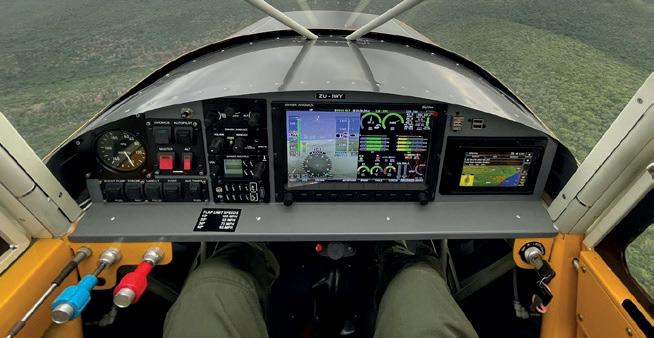
April 2024 42 FOR SALE
Comanche PA-24
Piper
–
hp: 1962. ZS-CXH. Fantastic cruiser
builder
180
and hour
.
2440. Lycoming O-360-A1D
FOR SALE Tucano Replica Price: R950K excluding VAT
25 hours. ZU-TUC.
Flygas Supercharged Rotax 912 uls 141 hp. 300 hours since new Propeller: Elitest carbon fibre electric variable pitch propellor – 25 hours
Mostly MGL but too many to list R2 million (replacement kit would cost over R2.8 million before building) FOR SALE Bearhawk Patrol 2022 2022 ZU-IWY. A Super Cub on steroids. A bigger, more powerful and faster bush plane
45 hours. Engine: Titan IO-360 180 hp
Hartzell HC-C2YR-INX
Dynon Skyview with autopilot and Aera 600 GPS
Worcester R3.5 million Contact Nick Wilkinson: +27 (0)82 688 0578. Email: info@riolargo.co.za
Instruments:
Airframe:
Prop:
Avionics:
Viewing:
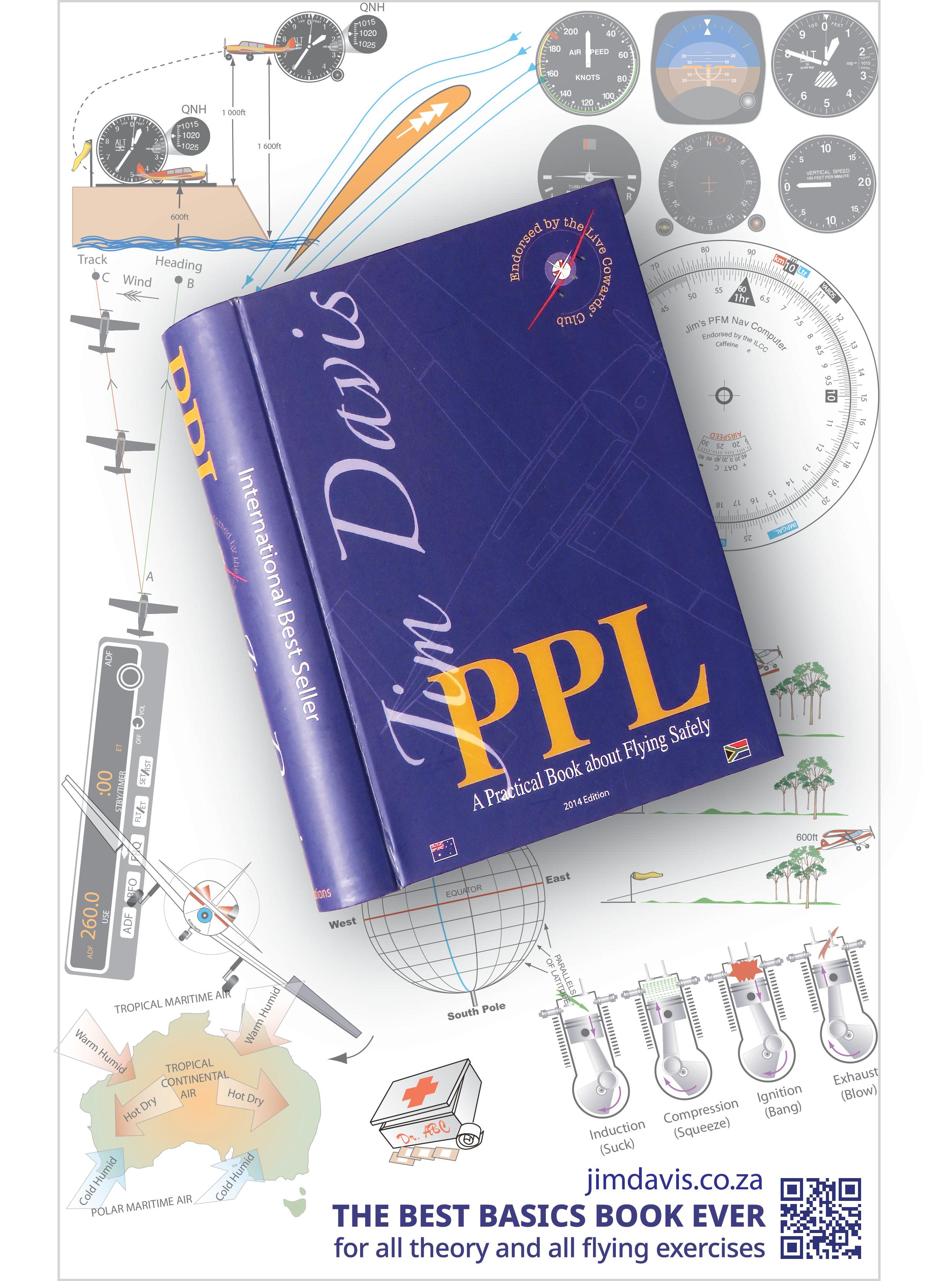
April 2024
CHEROKEE 235 UPHILL TAKEOFF
- LISTEN TO THE LOCALS
Date and Time of Accident: 15 September 2013 1030Z
Aircraft Registration: ZS-DWJ
Type of Aircraft: Piper Cherokee 235
Name of Operator: A J Fourie
Type of Operation: Private
PIC License Type: Private Pilot
Age: 55
License Valid: Yes
PIC Total Flying: 465.5 Hours
Hours on Type: 450.6
• This discussion is to promote safety and not to establish liability.
• CAA’s report contains padding and repetition, so in the interest of clarity, I have paraphrased extensively.
History of Flight:
Last point of departure: Mabalingwe (FAMA), Limpopo
Place of intended landing: Vryburg (FAVB), North West
Airfield elevation: 3850’
Density altitude: 6750’
Location of the accident: 150 m NW of extended C/L of 04
Met: 350°/10KT, viz: 10 km, 35°C, no clouds
Number of people on board: 1+3
Number of people injured: 1+1
Number of people killed: 0
THE AIRCRAFT TOOK OFF from Runway 04 on a VFR private flight with four occupants on board. The pilot indicated he used a longer takeoff distance than normal to get airborne. Immediately after takeoff he experienced turbulence and the stall warning sounded. He then selected 25° of flap (initially 0° flap setting) and turned slightly to the left to position the aircraft into wind. During the turn the stall warning sounded and the pilot experienced excessive turbulence. The aircraft could not maintain flight and collided with trees and thereafter with the ground.
The aircraft sustained substantial damage. Minor damage was also caused to surrounding grass, and the ground was contaminated by Avgas and oil.
Weight of the aircraft: 729 kg
Pilot: 96 kg
Passengers: 185 kg
Fuel: (63 Gal) 190 kg
Baggage: 15 kg
Total: 1215 kg
This is 100 kg below the maximum take-off mass of 1315 kg.
Runway Dimensions: 1000m x 5m
Runway Surface: Asphalt
April 2024 44
JIM DAVIS
The POH calls for 0° of flap for a normal takeoff. 25° of flap should be selected for obstacle clearance, however this should be done before takeoff.
Additional Information
Eye witness report:
According to an eyewitness who was standing at the end of the runway, the aircraft used approximately three quarters of the runway before it got airborne. The witness also reported the aircraft was drifting to the right of the runway after takeoff. He then saw the nose of the aircraft briefly lowered before it pitched up again and entered into a turn to the left and loosing height before it hit trees to the left of the runway.

Runway 04 was used for the takeoff. The slope on Runway 04 was calculated to be a +1% slope. (33’ over 1000m)
Aircraft performance was reduced by three critical factors:
• High density altitude.
• High take-off weight.
• The upslope runway that was used for the take-off.
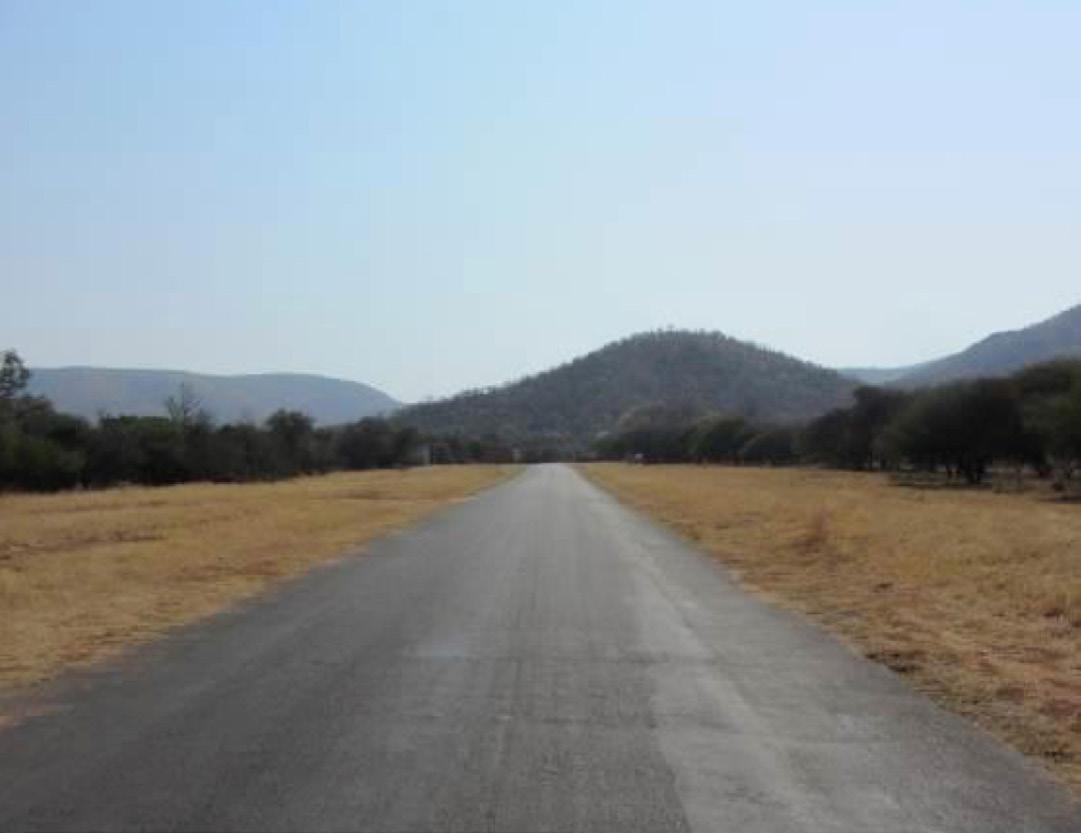
The takeoff direction was in a 040 degree direction and towards a mountain on the extended centerline of Runway 04. Several pilots were interviewed who regularly use the runway at Mabalingwe and all of them agreed they never depart from Runway 04 due to the up-slope of the runway and the mountain at the end of the runway.
During an interview with the pilot after the accident, he admitted to not performing weight and balance calculation before the flight. The pilot also mentioned that he could hear the stall warning several times after rotation. He stated that he could not give any explanation for his decision to takeoffon the up-slope runway. The pilot also admitted he did not get any surface data for the area before take-off and that he could feel the decreased performance of the aircraft during the takeoff ground roll.
It is possible that the mountain was not clearly visible to the pilot directly after takeoff due to the higher nose attitude. This might have caused him to pull the nose higher than he would normally to avoid the mountain which he knew was in front of him but was perhaps unable to see.
April 2024 45
A tailwind and uphill runway can beat most piston singles.
The runway faced hills.
Strangely, this accident, and many others, have a lot to do with listening to the locals. It sounds like Meneer AJ Fourie either didn’t sidle up to the elders to discuss the takeoff, or scorned their unanimous opinion that the uphill strategy bordered on suicidal.
Bear with me because the point is crucial – and can be life-saving.
You need to be a bit of a psychologist to get the best info from the parishioners. Even though you may never have met your advisor, his station in life should give you an indication of whether he or she (damnit I am being bullied into conforming with this ridiculous pronoun nonsense)…. where was I? Ah yes, we have to decide whether your informant speaks with forked tongue.
A couple of examples may help.
A while ago I was going from Kimberley to Kakamas or Kenhardt, or one of those gawdhelpus little places in the desert of the Northern Cape. As a new commercial pilot, I played by the rule-book, which told me that I was required to obtain all available weather info for the proposed flight. The met man, Comrade
Olsweski, showed me the synoptic chart which vaguely indicated the possibility of a front in the area. So I phoned the destination police station for an onsite evaluation of prevailing conditions. I was put through to Sergeant van der Westhuizen.
“Man you won’t believe the beautiful weather we are having here today.”
“Ah, thanks man, that’s great. No clouds?”
“What do you mean no clouds? It’s pissing down – we haven’t had rain like this for five years.”
Or if you phone the manager of one of those remote hotels on the Wild-Coast, he’ll tell you that the runway is in magnificent condition, and no – they never get fog there in the late afternoon. He wants your business, so you would be wise to consult a less biased citizen.
We actually looked at a very similar accident recently with a 180 Cherokee taking off uphill at Volksrus – again all the natives agreed they never took off that way because of the slope and the wires you need to clear after takeoff.
It’s interesting to note that both aircraft crashed to the left of the runway. I can’t emphasize enough how much right rudder you need at

April 2024 46
COMMENTS
JIM’S
The bush absorbed most of the impact.
low speed and high power – it’s close to FULL rudder. If you don’t use enough rudder then you have to compensate by using right aileron. This means that you are sideslipping – no wonder the poor aircraft can’t climb.
The 235 is a very capable load carrier and I suspect they would have made it easily if the pilot had used enough right rudder, and not pulled it off the ground too early – that’s a sure way of destroying takeoff and initial climb performance.
It’s very tempting to raise the nose early when you have a short runway and obstacles to clear. Rather let the aircraft accelerate to rotate speed in a level attitude, and then as soon as you leave the ground, level the nose and accelerate to Vx (obstacle clearance speed) in ground effect.
Many aeroplanes will never get off the ground at all if you rotate too early and too steeply. It’s known as being on the back of the drag curve.
As a matter of interest ZS-DWJ was one of the early 235s that could carry more than their own weight. They had an empty weight of 1440 lbs and a gross of 3000 lbs. There are almost no production aircraft in the world that can do this –regardless of size or type.
The report criticizes the pilot for not using the second notch of flap until he is airborne. I don’t agree – you accelerate better flapless and you can bang on flap when you are ready to fly. And while we are on the subject – the POHs for the entire Cherokee range, call for zero flap on normal takeoffs. I have found that they all come off the ground more smoothly and willingly when you use one notch. Don’t you love those manual flaps?
The 1% slope mentioned means that you climb 1m in every 100m travelled horizontally. In this case the runway climbs 33’ in its entire length of 3300’. Not a lot, but it can certainly make the
difference between flying and crashing when you are faced with heavy loads and high-density altitudes.
Finally, there is no mention in the report of the pilot leaning the mixture to allow for a density altitude of nearly 7000’. Those big Lycoming love to be leaned. Horsey people will understand this simile: leaning is like turning your steed for home – there’s a wonderful boost of extra energy.
The POH says he needed an extra 500’ of takeoff run to allow for the 35°C temperature which pushed the density altitude up from an elevation of 3850’ to a density altitude 6750’. That’s an increase of nearly 3000’. Even toughies like the 235 and the C182 battle under these conditions.
• Ignore density altitude at your peril. j he could hear the stall warning several times
Take home stuff
• Listen to the locals – except if they are the constabulary at Kakamas, or the proprietor of an establishment that stands to profit from your visit.
• Hauling the stick back seldom improves the takeoff.
• If you can’t see obstacles over the nose –either sit on a cushion, lower the nose or turn a bit to keep them in sight.
• On takeoff the chances are you are not using enough right rudder.
• Use the POH technique for short field takeoff an obstacle clearance climb.
• Leaning makes a hell of a difference.
April 2024 47
FEBRUARY 2023
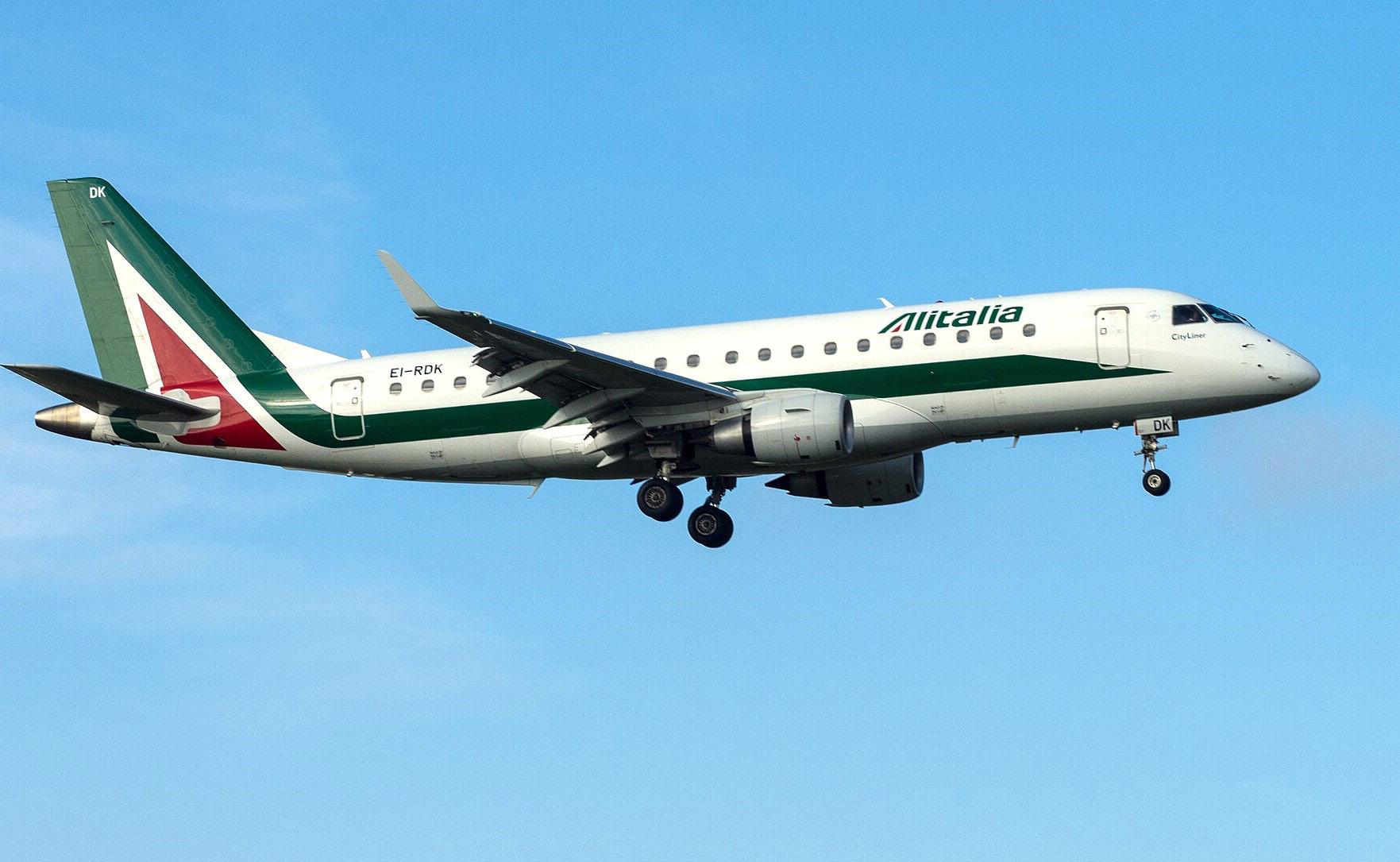
THERE ARE SOME LATE ADDITIONS
included from January in this month’s updates that were not included in the previous month’s updates. The exports and deletions similarly show three entries from January.
February has shown steady growth in the number of aircraft registered. Four fixed wing and one helicopter were added while the non-type certified (NTCA) register grew by seven. strong growth
It would seem there is not a month that passes where Airlink is not registering at least one new plane! This is testament to the carrier’s strong growth and sound leadership. Another of the carrier’s recently-acquired Embraer 175s has been registered, this one as ZS-YBF. The jet was delivered to Alitalia in 2012, registered EI-RDK and named ‘Parco Nazionale del Gargano’. It operated regional flights for the carrier until being withdrawn from use in April 2020 during the early part of the COVID pandemic.
Cemair too shows steady growth, with a CRJ200 returning to the carrier’s fleet after a lease in Sudan. ZS-CEM was delivered to Comair in August 1999 as N785CA and was operated on behalf of Delta Connect until being withdrawn from use and placed in storage in 2007. The aircraft was acquired by Cemair in 2012 and allocated the registration ZS-CMR. In 2019 the plane was transferred to Blue Bird Aviation Sudan and allocated the registration ST-BBA and is now reinstated on the local register, but as ZS-CEM, as its previous registration has since been allocated to a CRJ900 also operated by Cemair.
The cancelation of the registration of a former SA Express operated CRJ200 regional jet, ZS-NMJ, is a bit of a mystery as the updates give the c/n as 7169 while all other sources claim this jet was c/n 7161. Perhaps this is just some “finger trouble” while entering the data?
48 April 2024
REGISTER REVIEW: MORNE BOOIJ-LIEWES
EI-RDK is a former Alitalia Embraer ERJ-175 - now with Airlink.

ABOVE King Air 350i ZS-LIZ, seen here at the Wonderboom Aero Expo in 2023, has been exported. BELOW: ZS-HHX is a Sikorsky S-76C+ which has returned to the South African register from Brazil.

49 April 2024

ABOVE: ZS-SMJ was a former SA Express CRJ-200, then with Maluti Air - but now scrapped.
BELOW: ZU-COB is the latest Orion Cub - for well known owner Avroy Shlain.

50 April 2024
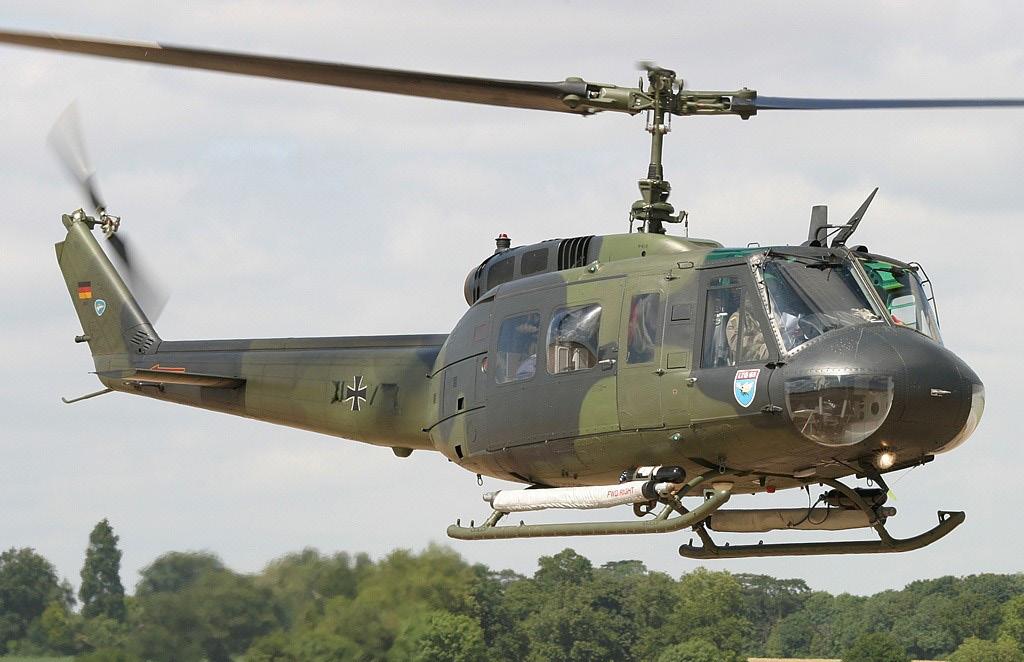
ABOVE: No, its not a Bell Huey, it_s a Dornier UH-1D of the Luftwaffe - one of which is now registered as ZU-RIR.
BELOW: Cessna C210 ZS-MAS - seen here far from home in 2006 in the UK, has been exported to Zimbabwe. Photo Martin Rendall.

51 April 2024
This jet was delivered new off the production line to the now defunct regional carrier SA Express in September 1997 and served with the company until 2012 when it was acquired (along with sister ship ZS-NMK) by Lesotho’s Maluti Sky for scheduled services, until the carrier’s demise in July 2017. The plane was then parked up at OR Tambo International Airport from May 2018 and eventually scrapped.
Two popular types imported include a new Cessna Caravan and a new Robinson R44.
Two rather interesting helicopters added to the register include a Sikorsky S-76C+ and a NTCcategory registered ‘Huey’.
The Sikorsky S-76C+ ZS-HHX returns to the local registry after a stint on the Brazilian civil aircraft register as PS-CDS, operating for Costa do Sol Táxi Aéreo. This 2003-built helicopter was delivered new to Angola’s SonAir Serviço Aéreo, SA (SonAir Airline Services) where it operated in support of their offshore oil industry before it was sold to Titan Helicopter Group of South Africa in November 2011. It is not clear when the helicopter was exported to Brazil, but it is assumed it returns to once again fly in support of South Africa’s growing offshore gas field industry.
NTC fixed wing planes additions include one each of the following popular types: a four-seat Jabiru J430, a Savanna Aircraft Africa, Savanna S, a Micro Aviation SA Bat Hawk R, Kit Planes for Africa Bushbaby Explorer and an Orion Cub. Notably there has been no new South African Sling Registered – perhaps a reflection of how the Sling is achieving high value international sales at the expense of the local market.
A very interesting new addition is Dirk Booysen’s full-scale replica Nieuport 28. The Nieuport 28 was a World War I French biplane fighter designed by Gustave Delage. It is hoped that we will see this unique type at some of the airshows and fly-ins in the coming months.
Exports are equally a mixed bag. One of AirTec Global’s Let-410UVPE20s has been registered in Mauritius. The company is domiciled in this island nation so the change in registration may just be an internal transfer.
Exports are equally a mixed bag
The Huey, ZU-RIR, is a Dornier-manufactured Bell UH-1D (D= Deutschland). Dornier licence built 352 of these helicopters in West Germany between 1967 and 1981 for the German Airforce and Army. The German Armed Forces retired the last UH-1D in June 2001 when the last German Army UH-1D helicopter performed its final flight and flew to Bückeburg Helicopter Museum. This airframe flew with the German Air force as 70+46. It was last noted at Clark Airforce base in the Philippines in 2015 awaiting handover for service with the Philippine Airforce but it’s unclear if it ever did join the air arm’s fleet, but now takes up residence in South Africa.
A DHL-operated ReimsCessna Caravan II has taken up Mozambican registration, no doubt related to its contract work for the global parcel giant. A former Comair B737-400 ZS-OAR has joined the fleet of Daallo Airlines, a Somali-owned carrier based in Dubai and taken up the new Kenyan registration 5Y-FQC. It was repainted in the carrier’s eyecatching livery at OR Tambo prior to delivery to Kenya on 17 February. A King Air 350i, ZS-LIZ was recently sold to a Kenyan client and has now been transferred to the Kenyan civil register.
On the lighter side, a Cessna T210M has been exported to Zimbabwe and a 182Q to the USA. The final export is a Savanna Aircraft Africa, Savanna S, that has been delivered to a Zimbabwean owner who has placed it on the Zimbabwean register. j
52 April 2024
QUOTE OF THE MONTH
Duncan Gillespie
QOM
Talking about one of the many bad aviation decisions made by African governments. FlyAfrica’s Duncan Gillespie said,
“African Aviation - DeColonising the Continent. Step by Step.”
BOOKS
by Peter Garrison




53 April 2024

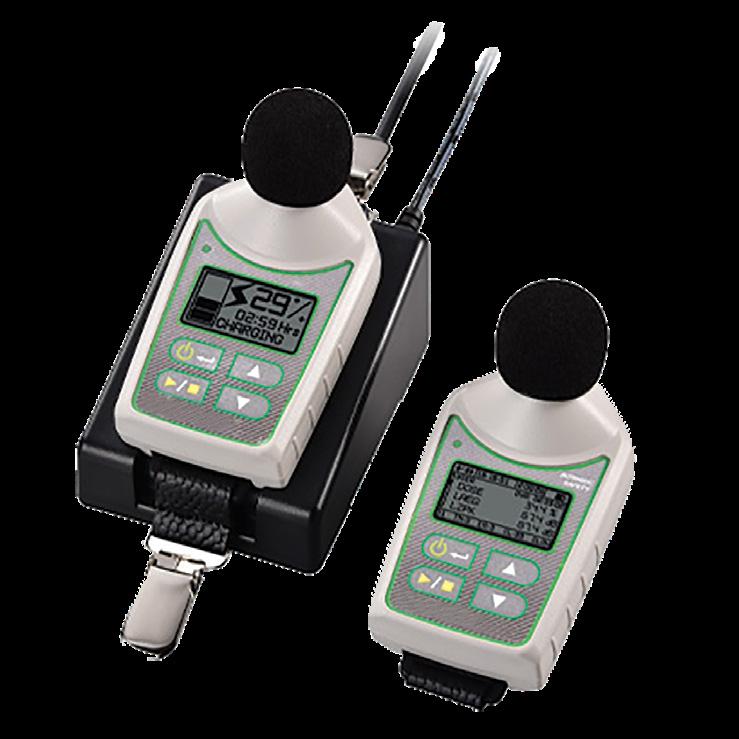


M & N Acoustic Services (Pty) Ltd REGISTER REVIEW FEBRUARY 2024 Tel: 012 689 2008 I Cell: 076 920 3070 We perform SANAS certifications on all your: Electrical DC/LF Equipment – inhouse or on site (eg. Fluke Multimeters, Insulation Testers) SANAS Accredited Laboratory REG MANUFACTURER TYPE NAME SERIAL NUMBER PREVIOUS IDENTITY / EXPORT COUNTRY New Registrations ZSZS-YBF Embraer ERJ170-200 STD 17000345 ZS-CEM Bombardier Inc. CL-600-2B19 7326 ZS-HHX Sikorsky Aircraft S-76C 760543 ZS-BCJ Textron Aviation Inc. 208B 20800703 New Registrations ZTZT-RHK Robinson Helicopter Company R44 14700 New Registrations ZUZU-IZV Savannah Aircraft Africa Savannah S 22-10-54-0907 ZU-IZY Micro Aviation SA Bat Hawk R 0117 ZU-RIR Dornier UH-1D 8106 ZU-IZZ Jabiru J430 1012 ZU-COB Avroy Shlain Orion Cub 22-02 ZU-MXK Kit Planes for Africa Bushbaby Explorer 022-D-23 EXUL ZU-IZX Dirk Johan Booysen Nieuport 28 Full Scale 061119 Aircraft deleted ZSZS-ATJ Aircraft Industries A.S L410 UVP-E20 062636 Mauritius ZS-DHL Reims Aviation S.A F406 F406-0062 Mozambique ZS-OAR Boeing 737-476 28152 Kenya ZS-MAS Cessna Aircraft Company T210M 210-62385 Zimbabwe ZS-LIZ Beechcraft Corporation B300 FL-1012 Kenya ZS-KTF Piper Aircraft Corporation PA-32R-301 32R-8013136 United Kingdom ZS-EBP Piper Aircraft Corporation PA-28-235 28-10537 Madagascar ZS-SVA Cessna Aircraft Company 182Q 18267402 USA ZS-NMJ Bombardier Inc. CL-600-2B19 7169 Scrapped Aircraft deleted ZUZU-PLM Savannah Aircraft Africa
We
Acoustics ( eg. CEL 350 )
Vibration ( eg. Rion VA -11)
Human Vibration ( eg. Quest Hav Pro)
Electrical DC/LF Equipment – inhouse or on site (eg. Fluke Multimeters, Insulation Testers)




& N Acoustic Services (Pty)
QUOTATIONS ON REQUEST
M
Ltd
perform
on
SANAS certifications
all your:
Contact: Marianka Naude Tel: 012 689 2008 I Cell: 076 920 3070 Email: admin@mnacoustics.co.za
Accredited
& 148
SANAS
Laboratory 1302
Fuel Prices as at 17/11/2023
Prices include VAT but exclude any service fees
Fuel Prices as at 23/02/2024
Prices include VAT but exclude any service fees
Baragwanath
Heidelberg - FAHG
Hoedspruit Civil - FAHT R30,76 R27,90

Fuel Prices as at 13/12/2023
Prices include VAT but exclude any service fees
Fuel Prices as at 22/03/2024
Prices include VAT but exclude any service fees

Port
Civil - FAHT R30,56 R27,90
Secunda
Stellenbosch -
Swellendam - FASX R32,70 R22,50
Tempe - FATP R31,88 R23,26
Thabazimbi - FATI R30,41 R20,96
Upington - FAUP R35,19 R29,79
Vryburg
Warmbaths
Welkom - FAWM
Wings Park EL R31,00 R23,50
Witbank - FAWI R33,00
Wonderboom
Worcester
Secunda
Stellenbosch - FASH R36,50
Swellendam - FASX R31,50 R23,00
Tempe - FATP R31,60 R22,91
Thabazimbi - FATI R31,51 R22,59
Upington - FAUP R35,19 R26,50
Welkom - FAWM R33,06 R23,38
Wings Park EL R31,00 R23,50
Witbank - FAWI R33,00
Wonderboom - FAWB R29,27 R20,35
Worcester
Fuel prices may change with every new delivery. Fuel prices updated courtesy of AviationDirect – Andrea & Kelly. Fuel prices and contact details can also be found in their products: EasyPlan and EasyCockpit – https://aviationdirect.co.za/

56 April 2024 Airfield Avgas Jet A1 Airfield Avgas Jet A1 Baragwanath - FASY R34,00 Baragwanath - FASY R34,00 Beaufort West - FABW R32,25 R 25,85 Beaufort West - FABW R32,25 R 25,85 Bloemfontein - FABL R32,00 R20,30 Bloemfontein - FABL R32,00 R20,30 Brakpan - FABB R32,50 Brakpan - FABB R32,50 Brits - FABS R28,70 Brits - FABS R29,55 Cape Town - FACT R32,41 R19,41 Cape Town - FACT R32,20 R19,96 Cape Winelands - FAWN R33,00 Cape Winelands - FAWN R33,00 Eagle's Creek R30,00 Eagle's Creek R30,50 East London - FAEL R35,84 R20,37 East London - FAEL R36,31 R20,55 Ermelo - FAEO R30,93 R24,73 Ermelo - FAEO R30,93 R24,73 Gariep Dam - FAHV R33,00 R23,00 Gariep Dam - FAHV R33,00 R23,00 George - FAGG R36,52 R20,22 George - FAGG R36,97 R19,88 Grand Central - FAGC R33,47 R23,81 Grand Central - FAGC R34,85 R24,55 Heidelberg - FAHG R30,00 R23,50 Heidelberg - FAHG R30,00 R23,50 Hoedspruit Civil - FAHT R30,76 R27,90 Hoedspruit Civil - FAHT R30,56 R27,90 Kimberley - FAKM R30,59 R21,67 Kimberley - FAKM NO FUEL R21,90 Kitty Hawk - FAKT R33,60 Kitty Hawk - FAKT R33,80 Klerksdorp - FAKD R34,33 R27,53 Klerksdorp - FAKD R31,66 R27,99 Kroondal / Airspan R29,91 Kroondal / Airspan R31,02 Kroonstad - FAKS R32,32 Kroonstad - FAKS R31,95 Kruger Mpumalanga Intl -FAKN R33,95 R26,47 Kruger Mpumalanga Intl -FAKN R33,95 R26,47 Krugersdorp - FAKR R30,00 Krugersdorp - FAKR R30,75 Lanseria - FALA R31,97 R22,77 Lanseria - FALA R32,78 R23,35 Margate - FAMG NO FUEL NO FUEL Margate - FAMG NO FUEL NO FUEL Middelburg - FAMB R31,85 R25,99 Middelburg - FAMB R31,86 R25,99 Morningstar R30,95 Morningstar R31,90 Mosselbay - FAMO R34,50 R24,50 Mosselbay - FAMO R34,50 R24,50 Nelspruit - FANS R33,41 R26,14 Nelspruit - FANS R33,41 R26,14 Oudtshoorn - FAOH R35,19 R23,10 Oudtshoorn - FAOH R35,19 R23,10 Parys - FAPY R29,91 R20,46 Parys - FAPY R31,59 R22,67 Pietermaritzburg - FAPM R30,50 R26,30 Pietermaritzburg - FAPM R30,50 R26,30 Pietersburg Civil - FAPI R29,90 R24,10 Pietersburg Civil - FAPI R30,50 R24,70 Plettenberg Bay - FAPG NO FUEL R28,75 Plettenberg Bay - FAPG NO FUEL R28,75 Port Alfred - FAPA R33,50 Port Alfred - FAPA R33,50 Port Elizabeth - FAPE R33,47 R23,58 Port Elizabeth - FAPE R34,39 R23,35 Potchefstroom - FAPS R29,91 R20,46 Potchefstroom - FAPS R31,01 R22,09 Rand - FAGM R35,75 R27,50 Rand - FAGM R35,75 R27,50 Robertson - FARS R30,90 Robertson - FARS R30,90 Rustenburg - FARG R31,00 R23,65 Rustenburg - FARG R31,00 R23,65 Secunda - FASC R31,05 R23,58 Secunda - FASC R31,05 R25,88 Skeerpoort *Customer to collect R27,67 R18,21 Skeerpoort *Customer to collect R28,77 R19,85 Springbok - FASB R29,50 R23,50 Springbok - FASB R30,00 R23,50 Springs - FASI R29,50 Springs - FASI R30,00 Stellenbosch - FASH R34,00 Stellenbosch - FASH R36,50 Swellendam - FASX R32,70 R22,50 Swellendam - FASX R31,50 R23,00 Tempe - FATP R31,88 R23,26 Tempe - FATP R31,60 R22,91 Thabazimbi - FATI R30,41 R20,96 Thabazimbi - FATI R31,51 R22,59 Upington - FAUP R35,19 R29,79 Upington - FAUP R35,19 R26,50 Virginia - FAVG R33,24 R23,58 Virginia - FAVG R33,93 R23,92 Vryburg - FAVB R31,07 R21,21 Vryburg - FAVB R32,17 R22,85 Warmbaths - FAWA R30,00 Vryheid - FAVY R31,01 Welkom - FAWM R31,88 R23,26 Warmbaths - FAWA R32,00 Wings Park EL R31,00 R23,50 Welkom - FAWM R33,06 R23,38 Witbank - FAWI R33,00 Wings Park EL R31,00 R23,50 Wonderboom - FAWB R28,17 R18,71 Witbank - FAWI R33,00 Worcester - FAWC R29,50 Wonderboom - FAWB R29,27 R20,35 Worcester - FAWC R29,50 Fuel Prices as at 23/02/2024 Prices include VAT but exclude any service fees Fuel Prices as at 22/03/2024 Prices include VAT but exclude any service fees aeroeng@iafrica.com (012) 543 0948/51 AMO No: 227 Hangar no 4, Won derboom Airport, Pretoria FLIGHT SAFETY THROUGH MAINTENANCE
Engineering and Powerplant FUEL TABLE Airfield Avgas Jet A1 Airfield Avgas Jet A1 Baragwanath R32,50 Baragwanath - FASY R33,00 Beaufort West FABW R32,25 R 26,70 Beaufort West - FABW R32,25 R 25,85 Bloemfontein R33,53 R20,86 Bloemfontein - FABL R32,00 R20,30 Brakpan R35,00 Brakpan - FABB R34,00 Brits R30,45 Brits - FABS R29,20 Cape Town R34,04 R21,39 Cape Town - FACT R33,35 R19,50 Cape Winelands FAWN R33,00 Cape Winelands - FAWN R34,00 Eagles Creek R33,00 Eagle's Creek R30,50 East London R32,41 R21,37 East London - FAEL R35,84 R20,37 Ermelo R31,51 R25,18 Ermelo - FAEO R30,94 R24,73 Gariep Dam R33,50 R23,00 Gariep Dam - FAHV R35,50 R23,00 George R33,08 R20,69 George - FAGG R36,31 R19,49 Grand Central R33,98 R21,78 Grand Central - FAGC R33,98 R24,67 Heidelberg R34,50 Heidelberg - FAHG R31,00 R21,50 Hoedspruit R33,04 R23,44 Hoedspruit Civil - FAHT R31,66 R27,90 Kimberley R33,40 R15,65 Kimberley - FAKM R31,95 R19,22 Kitty Hawk R37,70 Kitty Hawk - FAKT R34,80 Klerksdorp R32,86 R24,22 Klerksdorp - FAKD R31,65 R28,09 Kroonstad R34,04 Kroonstad - FAKS R32,32 Kruger Intl Nelspruit R33,95 R25,15 Kruger Mpumalanga Intl -FAKN R33,95 R28,37 Krugersdorp R32,50 Krugersdorp - FAKR R30,00 Lanseria R34,04 R23,00 Lanseria - FALA R34,73 R24,84 Margate R34,04 R23,06 Margate - FAMG NO FUEL NO FUEL Middelburg R37,95 R23,00 Middelburg - FAMB R33,00 R25,99 Morningstar R34,56 Morningstar R32,25 Mosselbay R37,50 R20,50 Mosselbay - FAMO R37,50 R23,00 Nelspruit R32,32 R28,44 Nelspruit - FANS R33,41 R26,14 Oudtshoorn FAOH R35,19 R23,10 Oudtshoorn - FAOH R35,19 R23,10 Parys POA POA Parys - FAPY R28,99 R22,23 Pietermaritzburg R37,70 R24,32 Pietermaritzburg - FAPM R34,00 R28,10 Pietersburg Civil R31,80 R23,70 Pietersburg Civil - FAPI R29,95 R24,45 Plettenberg Bay R34,60 R25,00 Plettenberg Bay - FAPG NO FUEL R25,00 Port Alfred R33,50 Port Alfred - FAPA R33,50 Port Elizabeth R35,19 R24,84 Port Elizabeth - FAPE R33,47 R23,46 Potchefstroom POA POA Potchefstroom - FAPS R28,99 R22,23 Rand R34,10 R23,98 Rand - FAGM R35,75 R27,50 Robertson FARS R33,00 Robertson - FARS R32,00 Rustenberg FARG R31,30 R23,65 Rustenburg - FARG R31,00 R23,65 Secunda R33,00 R25,88 Secunda - FASC R33,07 R25,88 Skeerpoort *Customer to collect POA POA Skeerpoort *Customer to collect R26,75 R19,99 Springbok POA POA Springbok - FASB R33,93 R27,03 Springs R33,70 Springs - FASI R28,00 Stellenbosch R33,20 Stellenbosch - FASH R35,00 Swellendam FASX R33,80 R22,50 Swellendam - FASX R32,70 R22,50 Tempe R34,04 R25,33 Tempe - FATP R31,88 R23,69 Thabazimbe POA POA Thabazimbi - FATI R29,49 R22,73 Upington R34,00 R24,00 Upington - FAUP R35,19 R25,99 Virginia R35,19 R23,12 Virginia - FAVG R33,24 R23,58 Vryburg POA POA Vryburg - FAVB R30,15 R22,99 Warmbaths FAWA R30,30 Warmbaths - FAWA R29,00 Welkom R34,04 R25,33 Welkom - FAWM R32,09 R23,69 Wings Park EL R33,50 R23,50 Wings Park EL R33,50 R23,50 Witbank FAWI R33,00 R25,33 Witbank - FAWI R33,00 Wonderboom POA POA Wonderboom - FAWB R27,25 R20,49 Worcester R34,31 Worcester - FAWC R29,50
Aero
Airfield Avgas Jet A1 Airfield Avgas Jet A1
- FASY R34,00
- FASY R34,00 Beaufort West - FABW R32,25 R 25,85 Beaufort West - FABW R32,25 R 25,85 Bloemfontein - FABL R32,00 R20,30 Bloemfontein - FABL R32,00 R20,30 Brakpan - FABB R32,50 Brakpan - FABB R32,50 Brits - FABS R28,70 Brits - FABS R29,55 Cape Town - FACT R32,41 R19,41 Cape Town - FACT R32,20 R19,96 Cape Winelands - FAWN R33,00 Cape Winelands - FAWN R33,00 Eagle's Creek R30,00 Eagle's Creek R30,50 East London - FAEL R35,84 R20,37 East London - FAEL R36,31 R20,55 Ermelo - FAEO R30,93 R24,73 Ermelo - FAEO R30,93 R24,73 Gariep Dam - FAHV R33,00 R23,00 Gariep Dam -
Baragwanath
FAHV R33,00 R23,00
R36,52
R33,47 R23,81 Grand
R34,85 R24,55
George - FAGG
R20,22 George - FAGG R36,97 R19,88 Grand Central - FAGC
Central - FAGC
R30,00
R23,50 Heidelberg - FAHG R30,00 R23,50
Kimberley - FAKM R30,59 R21,67 Kimberley - FAKM NO FUEL R21,90 Kitty Hawk - FAKT R33,60 Kitty Hawk - FAKT R33,80 Klerksdorp - FAKD R34,33 R27,53 Klerksdorp - FAKD R31,66 R27,99 Kroondal / Airspan R29,91 Kroondal / Airspan R31,02
- FAKS R32,32 Kroonstad - FAKS R31,95
Mpumalanga Intl -FAKN R33,95 R26,47 Kruger Mpumalanga Intl -FAKN R33,95 R26,47 Krugersdorp - FAKR R30,00 Krugersdorp - FAKR R30,75 Lanseria - FALA R31,97 R22,77 Lanseria - FALA R32,78 R23,35 Margate - FAMG NO FUEL NO FUEL Margate - FAMG NO FUEL NO FUEL Middelburg - FAMB R31,85 R25,99 Middelburg - FAMB R31,86 R25,99 Morningstar R30,95 Morningstar R31,90 Mosselbay - FAMO R34,50 R24,50 Mosselbay - FAMO R34,50 R24,50 Nelspruit - FANS R33,41 R26,14 Nelspruit - FANS R33,41 R26,14 Oudtshoorn - FAOH R35,19 R23,10 Oudtshoorn - FAOH R35,19 R23,10 Parys - FAPY R29,91 R20,46 Parys - FAPY R31,59 R22,67 Pietermaritzburg - FAPM R30,50 R26,30 Pietermaritzburg - FAPM R30,50 R26,30 Pietersburg Civil - FAPI R29,90 R24,10 Pietersburg Civil - FAPI R30,50 R24,70 Plettenberg Bay - FAPG NO FUEL R28,75 Plettenberg Bay - FAPG NO FUEL R28,75 Port Alfred - FAPA R33,50
Hoedspruit
Kroonstad
Kruger
Alfred - FAPA R33,50
Elizabeth - FAPE R33,47 R23,58
Elizabeth - FAPE R34,39 R23,35 Potchefstroom - FAPS R29,91 R20,46 Potchefstroom - FAPS R31,01 R22,09 Rand - FAGM R35,75 R27,50 Rand - FAGM R35,75 R27,50 Robertson - FARS R30,90 Robertson - FARS R30,90
- FARG R31,00 R23,65 Rustenburg - FARG R31,00 R23,65
Port
Port
Rustenburg
- FASC R31,05 R23,58
- FASC R31,05 R25,88
*Customer to collect R27,67 R18,21
*Customer to collect R28,77 R19,85
- FASB R29,50 R23,50 Springbok - FASB R30,00 R23,50
- FASI R29,50
- FASI R30,00
Skeerpoort
Skeerpoort
Springbok
Springs
Springs
FASH R34,00
R33,24
Virginia - FAVG
R23,58 Virginia - FAVG R33,93 R23,92
R31,07
R32,17
- FAVB
R21,21 Vryburg - FAVB
R22,85
- FAWA R30,00
Vryheid - FAVY R31,01
R31,88
R23,26
Warmbaths - FAWA R32,00
- FAWB R28,17 R18,71
- FAWC R29,50
- FAWC R29,50






57 April 2024 Overhaul / Shockload / Repair of Continental and Lycoming Aircraft engines Overhaul Engine Components Overhaul and supply of Hartzell / McCauley and Fix pitch Propellers FLIGHT SAFETY THROUGH MAINTENANCE Hangar no 4, Wonderboom Airport, Pretoria PO Box 17699, Pretoria North, 0116 Tel: (012) 543 0948/51, Fax: (012) 543 9447, email: aeroeng@iafrica.com AMO 227
EAA AIRWEEK 2024
Having attended Oshkosh in 2023, I was looking forward to our own, miniature version in Middelburg, Mpumalanga.

58 April 2024
AIRWEEK
Text and photos- Laura McDermid Networking - Goitse Diale,
and
shelter from the scorching sun.
Iaan
Tarryn Myburgh and Adrienne Visser take
THIS YEAR THE EAA combined their annual convention with the Aeroclub Airweek, which meant that I was privy to the organizing. Rob Jonkers, chairman of the Aeroclub, and his efficient team, had the unenviable task of coordinating and managing this process.
In order to literally get this event off the ground, Rob had been crossing t’s and dotting i’s with the likes of the CAA, the local police and the fire department, as well as the critical role-players in Middelburg and at FAMB.
Back at EAA headquarters, chairman Neil Bowden, was instrumental in sourcing promotional materials, sound systems, printers, gazebos and other paraphernalia needed for the event.
the Air Nav Rally was won by allgirl team
On Friday afternoon, Nigel Musgrave’s familiar voice guided ZU-MJB safely onto runway 32. Marshals on quad bikes were on hand to show us where to park, and we got straight to the task of locating the tent provided by Camp Tent Hire, which was to be our home for the weekend.
As the sun slid below the horizon, it bathed 50 aircraft of various shapes and sizes, plus a handful of cars and trailers, in a soft orange glow. Smoke wafted


59 April 2024
EAA Chairman Neil Bowden with grandson Jesse admiring the Mustang replica
A classic S-1 Pitts Special flown by Jason Beamish.
through the campsite, reminding everyone that it was time to braai.
As with most gatherings where passions are shared, friends were catching up over icecold beers, regaling one another with flying exploits.
The following morning, I was awakened by the angry buzzing of wasps.
I looked around the tent. Seamus our Flying Dog was still sleeping peacefully at the foot of the stretcher. It took me a moment to work out that the noise I was hearing was coming from outside. I peered through the tent flap and saw half a dozen powered paragliders and a couple of hot-air balloons taking advantage of the perfect earlymorning conditions.
questions were thoughtprovoking
Now fully awake, I went in search of coffee to help kick-start the day. I wound my way through various food vendors, who despite the early hour, were already preparing for the long day ahead.
I joined Rob and air-traffic-controller Karen Mathews at the mobile coffee station and we chatted about the day’s proceedings over a delicious double espresso.
Aircraft began to arrive and the dozen exhibitors began dressing their stands. Neil was setting up the microphone and speakers on the upstair’s deck which would serve as the makeshift ‘studio’ for walking aviation encyclopaedia, Karl Jensen.


60 April 2024
Radio Jensen kept the information and announcements flowing
There was a selection of delicious food.
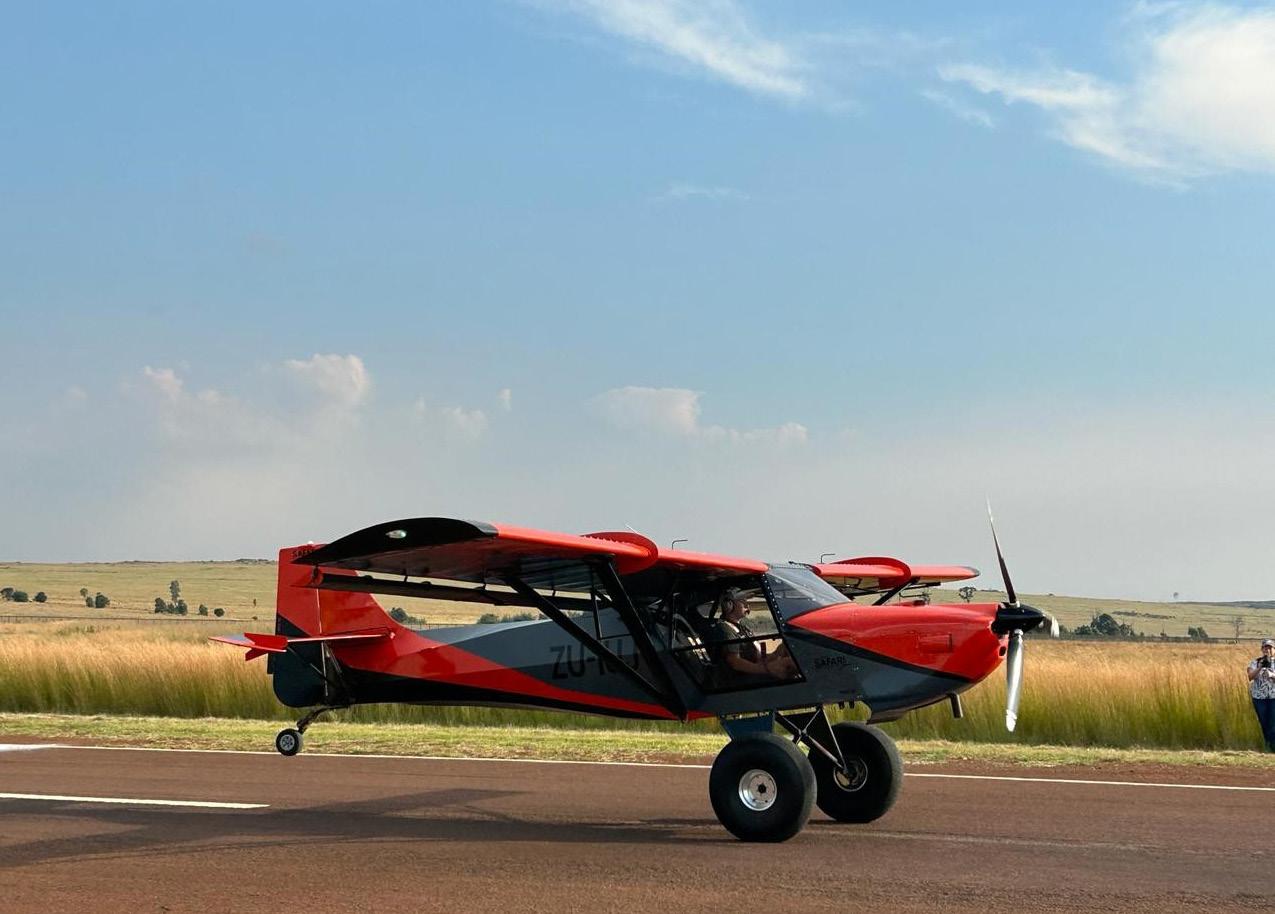

61 April 2024
A KFA Safari participates in the STOL event.
An unsuspecting spectator gets dusted by the Caravan II.
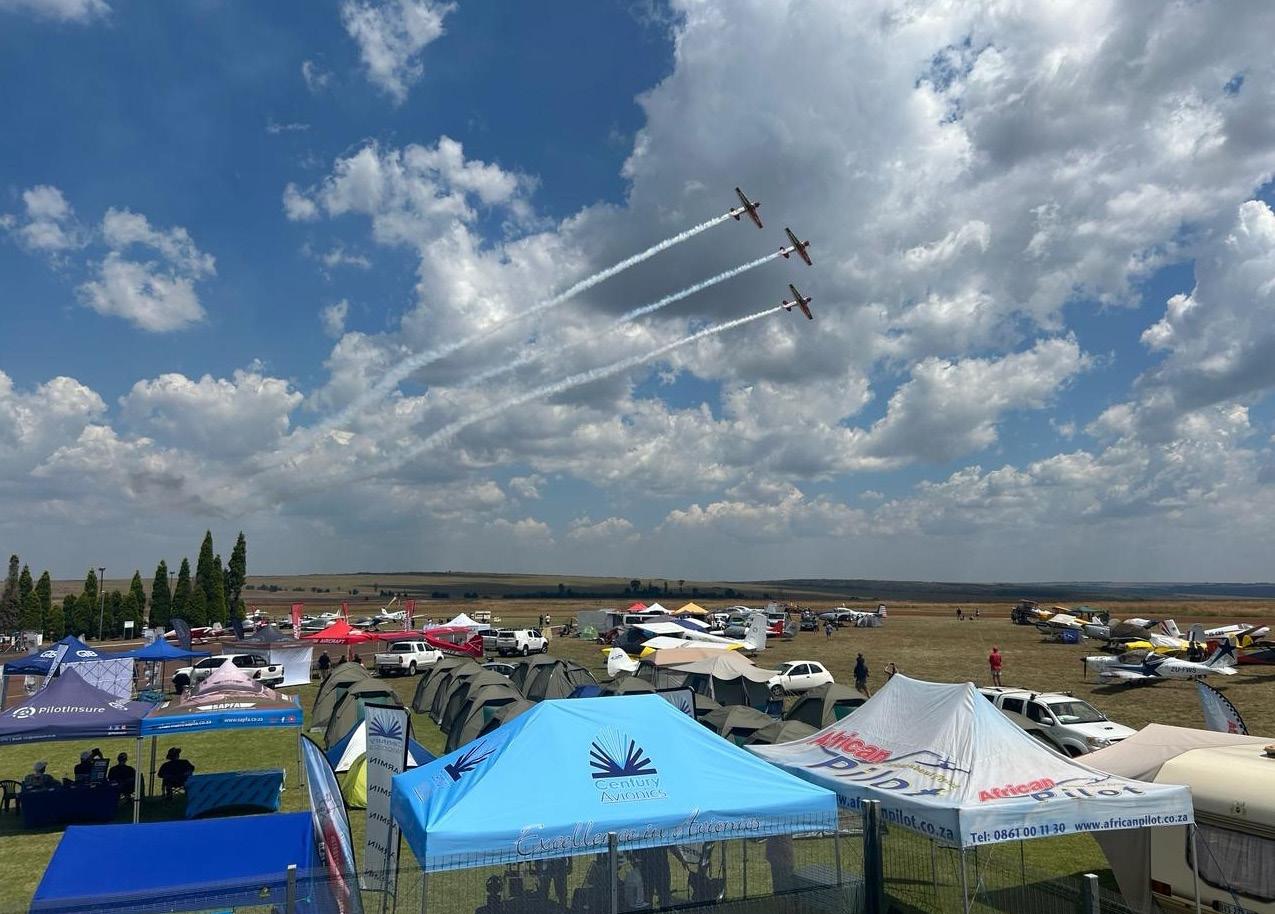

62 April 2024
The Flying Lions.
Karl Jensen takes some of the Kenyan delegation for a flip in the ‘Unpainted one’.
As is often the case with electronic equipment, not a sound emanated from the loud speakers despite Neil having checked and verified that they were working the previous day. Stuart McDermid offered to lend a hand, and after randomly tweaking knobs on the mixer, the speakers screeched to life, setting the adrenalin coursing through my veins for the second time that morning.
Next, I helped Niren Chitoki from Comet Aviation set up for the first of the morning’s talks. The topic was on Rotax engines, a subject Niren was very familiar with. Being an owner of a plane that has a 912ULS, I often had more questions than answers.
Over the years, I have come across a few AMOs and self proclaimed avionics ‘experts’ who’s lack of understanding have shaved many years off my life. I realized that if I wanted answers, I’d need to educate myself.
Niren and CJ have been very helpful and the Rotax talk I attended at Oshkosh last year inspired me. We have a vast array of South African designed and built planes that make use of these capable engines, and the thought struck me that it would be great if the representative for Rotax SA would deliver a talk at Airweek.
I had expected a dozen or so people to attend, but was blown away when 50 people arrived. Niren’s presentation hit the spot and the questions from the audience were intelligent and thought-provoking.
At mid-day the skies came alive with aerobatics featuring the mean green machine, Rihn DR-107 One Design, together with Jason Beamish in the Pitts Special and Warren Eva in the Yak 55M. These energetic displays were followed by the perfectly synchronized display of the Puma Flying Lions.
During the course of the day, an Air Nav Rally hosted by SAPFA saw 11 teams tackle the

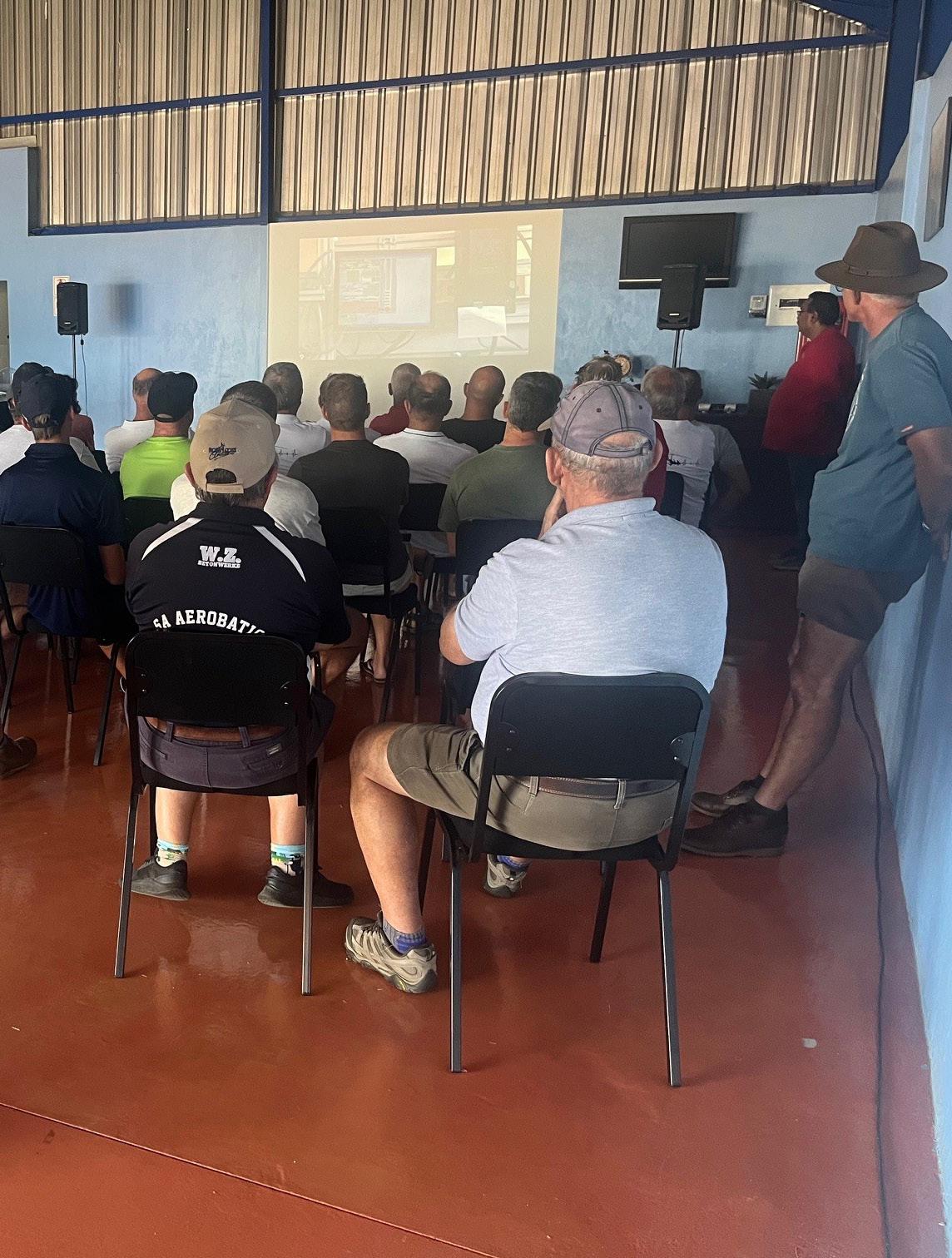
63 April 2024
Rob Jonkers and Karen Matthews enjoying the morning coffee.
The Rotax talk was well attended.


64 April 2024
Seamus the Flying Dog and ZU-MJB admiring the sunset.
Rihn DR-107 One Design.
30 nm route, which was won by all-girl team Adrienne Visser and Tarryn Myburgh.
That afternoon, Ian Beaton and Theo Arrenbrecht delivered their talk on fuel vaporization, keeping the audience engaged with a practical demonstration of how, depending on the fuel flow configuration and design in various aircraft, fuel could vaporise before it reached the fuel pump.
This duo also won the 2024 EAA Convention Grand Champion award and the best Kit Built aircraft, with their striking red and blue RV-10 ZU-ITT.
As the heat of the day began to dissipate, the Short Take Off and Landing (STOL) and spot landing events got under way. First and second place for the STOL went to the KFA Safaris, ZU-IZU and ZU-IUJ flown by Stefan Coetzee and Regardt Coetzee respectively.
The winner of the spot landing was Dale de Klerk in the Orion Cub ZU-IVS, with Regardt Coetzee in his KFA Safari taking second place, highlighting the amazing capabilities of these proudly South African designs.
valued services at no cost
That evening, Karl presented the EAA highlights of the previous year, followed by an informal ‘awards’ ceremony where certificates were issued in acknowledgement of various categories such as the best restored aircraft, best Rotax-powered aircraft, best Warbird, best vintage aircraft and best LSA.
The Kenyan delegation were acknowledged for traveling the longest distance and former EAA chairman, Dr Mike Brown, now residing in Cape Town, won the prize for the longest flight in his pristine Globe Fury ZS-BCE (which also won the best vintage aircraft award).
It was the perfect day to go fly a kite.

The day proved too long for many folk, who attacked the buffet before the last of the certificates were handed out. Frank Persson swapped his stethoscope for his guitar, enlivening the mood and providing entertainment for the rest of the evening.
A total of 150 aircraft had flown in to FAMB over the two days, and Nigel and his assistants had recorded in excess of 200 movements on Saturday, a very encouraging number.
There were comments about the lack of ATC on Sunday. Besides the fact that the CAA have unrealistic expectations of what is required of ATC at ‘unregistered’ airfields, it’s important to note that most folk assisting at these events are volunteers and provide their valued services at no cost.
This holds true not only for ATC, but also for people at the Aeroclub, the EAA and SAPFA, together with the locals at FAMB, who generously offer up their time, resources and their hangars.
65 April 2024
Despite having undergone surgery earlier that week, Richardt Lovett made an appearance on Saturday, a testament to his and wife Irene’s dedication to the event.
There is enormous scope for this event. Combining the various organisations and clubs
is definitely the way to go. Securing broader involvement within the aviation sector and its affiliates are crucial to growing this event and I can’t wait to see Airweek blossom into its full potential. j

A perfect end to the day.
66 April 2024


BUMPPPFFF:

The Rotax 916 iS equipped Sling TSi.
The Rotax 916 iS equipped Sling TSi. Our preferred “Search Engine”... Our preferred “Search Engine”...
This Easter, where will your Sling search take you?
This Easter, where will your Sling search take you?
Boeing is the butt of endless jokes
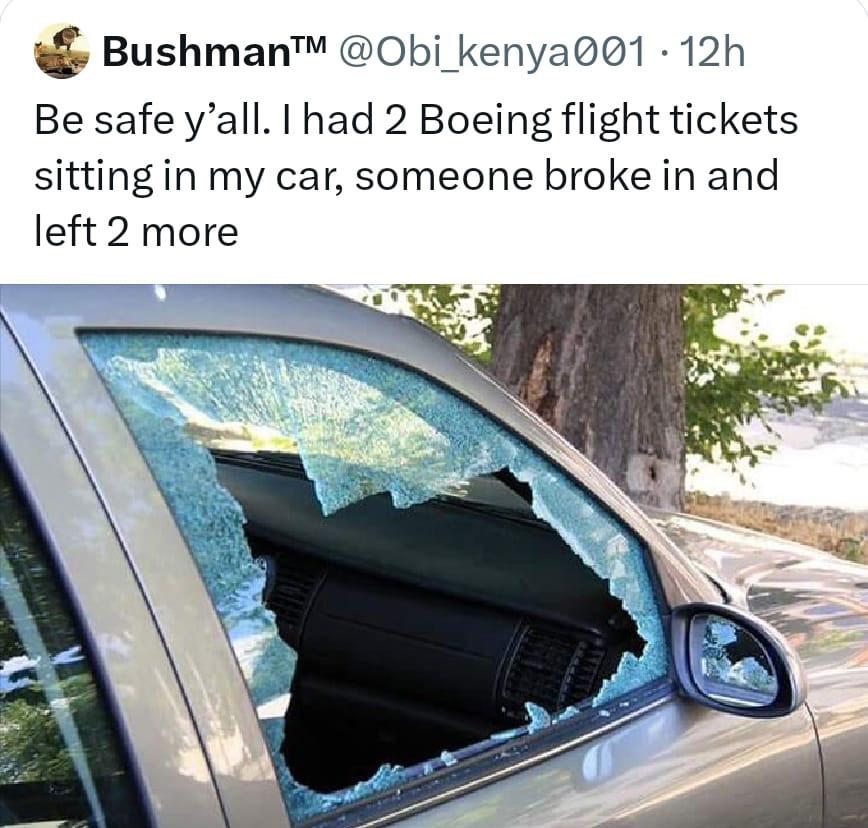

67 April 2024
+27 (0) 11 948 9898 | www slingaircraft com | sales@slingaircraft com | AMO 1264 | Manufacturing Organisation M677
A Boeing whistleblower apparently committed suicide.
This interior shot of a B-24H illustrates the extreme complexity which went into just one plane...and at peak production Willow Run was producing 25 planes a day
SAA TAKATSO SALE CALLED OFF
SOUTH AFRICA’S Public Enterprises Minister Pravin Gordhan has announced that the sale of a 51% stake in South African Airways (SAA) to the Takatso Consortium has been cancelled.
This comes almost three years after the consortium was announced as the preferred bidder to acquire the airline for R51 – implying a total valuation of R100. Takatso was expected to inject R3 billion into the business, but that has not yet happened.
Gordhan explained that the original deal was done in the aftermath of the Covid-19 pandemic when SAA had just come out of business rescue and was not flying at the time.
SAA remains fully state-owned, but Gordhan said future operations will not be funded by taxpayers. The airline will look at various other funding options for the expansion of its operations, including expanding its route network. He said SAA can sustain itself for the next year to 18 months and there are various other ways to get immediate financing, “but at no stage in the course of the months to come, will SAA get money from the fiscus”.

68 April 2024 NEWS
Without Takatso is it back to SAA Version 1 j
THE DIFFERENCE IS HEAR TBEAT

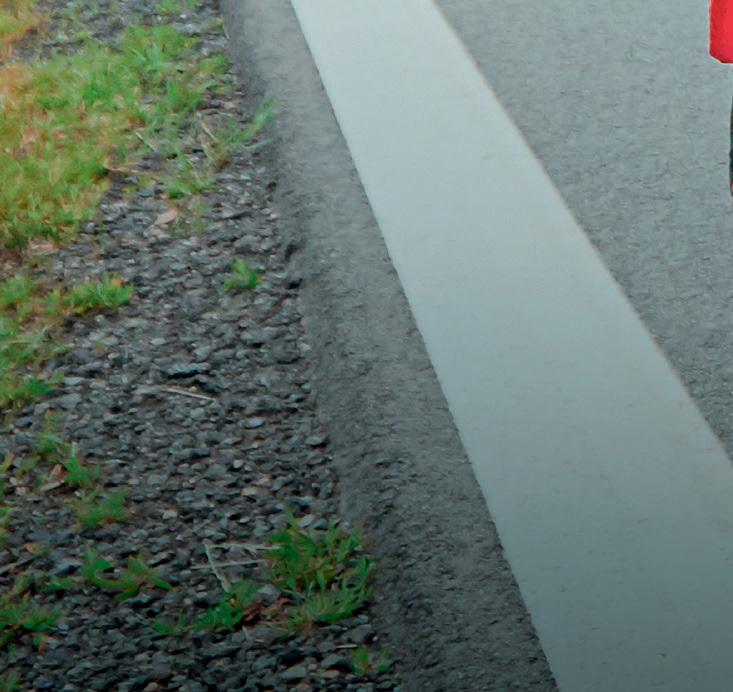
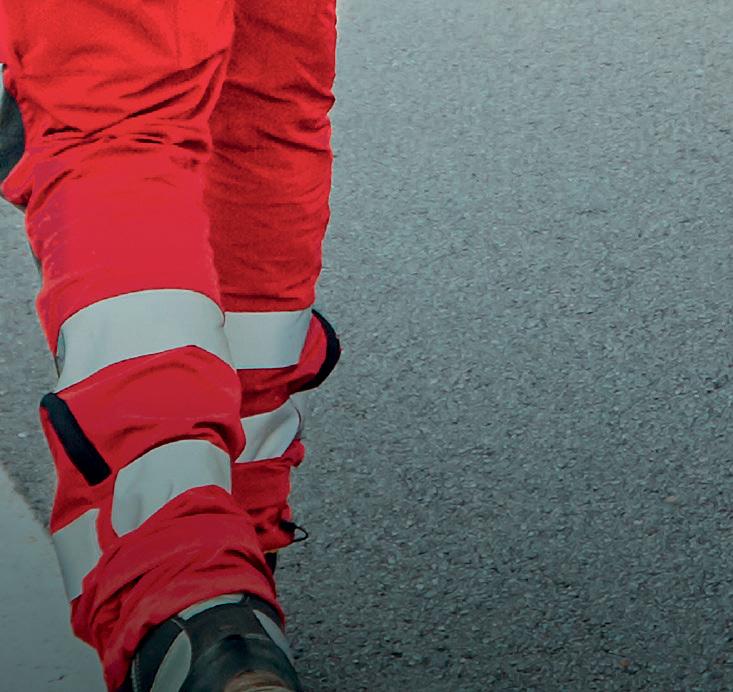

Seconds count when lives are on the line. It’s why every feature of the Airbus H135 has been designed for safe, effective, and fast operations. With easy patient loading, state-of-the-art avionics to reduce pilot workload and a safer working area on the ground, the H135 ensures people get the medical care they need as fast as possible. All of this has made the H135 the emergency medical services market leader around the globe – helping people every single day and making sure the world remains a beautiful place.
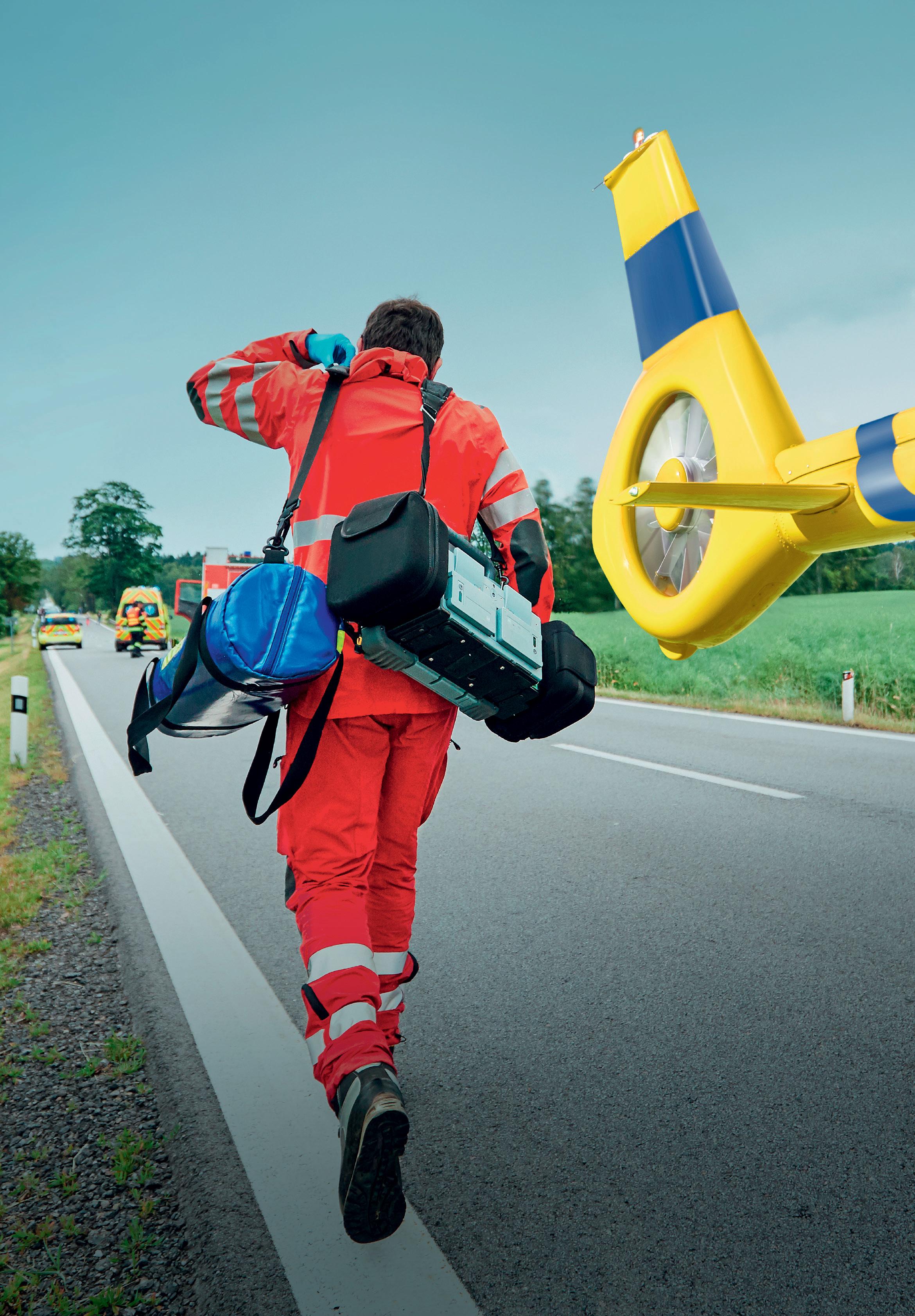

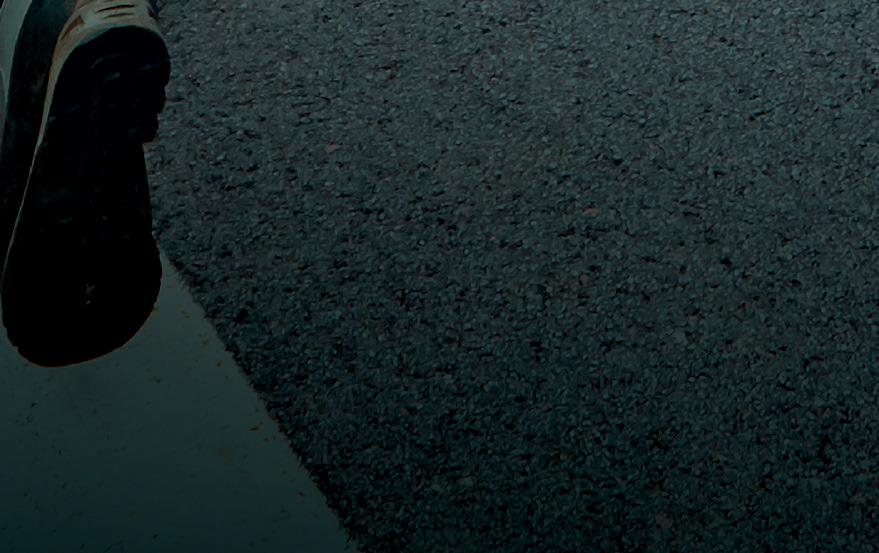

airbus.com
Images – Trevor Cohen
STELLENBOSCH AIR SHOW
The Western Cape does not get as many airshows as the Joburg area – which is a shame as it has great airshow performers and one of the best venues in the world for a flying club airshow.

70 April 2024
AIRSHOW
The Flying Lions did their sunset performance to live music from an orchestra..
THIS YEAR’S AIR SHOW was held over the Friday and Saturday preceding the Easter weekend.
A unique first on the Friday featured a Flying Lions’ sunset show flown to live music from the whole tutti of the Stellenbosch Philharmonic Orchestra. They performed many well-known aviation movie themes, including Nini Rosso’s very moving - Il Silenzio. There was many a damp eye wiped on a sleeve. https://www. youtube.com/watch?v=_s5-0cUCQOQ
the evergreen drunk pilot
morning there was rain and low-lying mist. This lifted to become a solid cloud base at around 1000 ft, which meant all the aerobatic performances had to be ‘flat’. Other Cape air shows have had to contend with 30 knot winds, most notably the SAAF airshow at Langebaan a few years ago.
The biggest drawback of hosting an airshow in the Cape is fickle weather. On the Saturday
The Cape is increasingly blessed with great air show performers basing themselves away from the catastrophe that is Johannesburg and the “Big Smoke.” Notable is the Marksmen aerobatic team, led by Mark Hensman, with Johnie Smith on his wing, (who comes all the way from Hoedspruit), Gary Glasson and Eugene Du Preez. This team has achieved a world class

Juba Joubert flew the Alouette III from Gauteng and demonstrated it spectacularly.
71 April 2024


72 April 2024
Maximum crowd effect was cahieved by Alewyn Burger flying a 'veteran pilot stunt' here having collected a 'washing line'.
Alewyn Burger in the lumbering An-2.
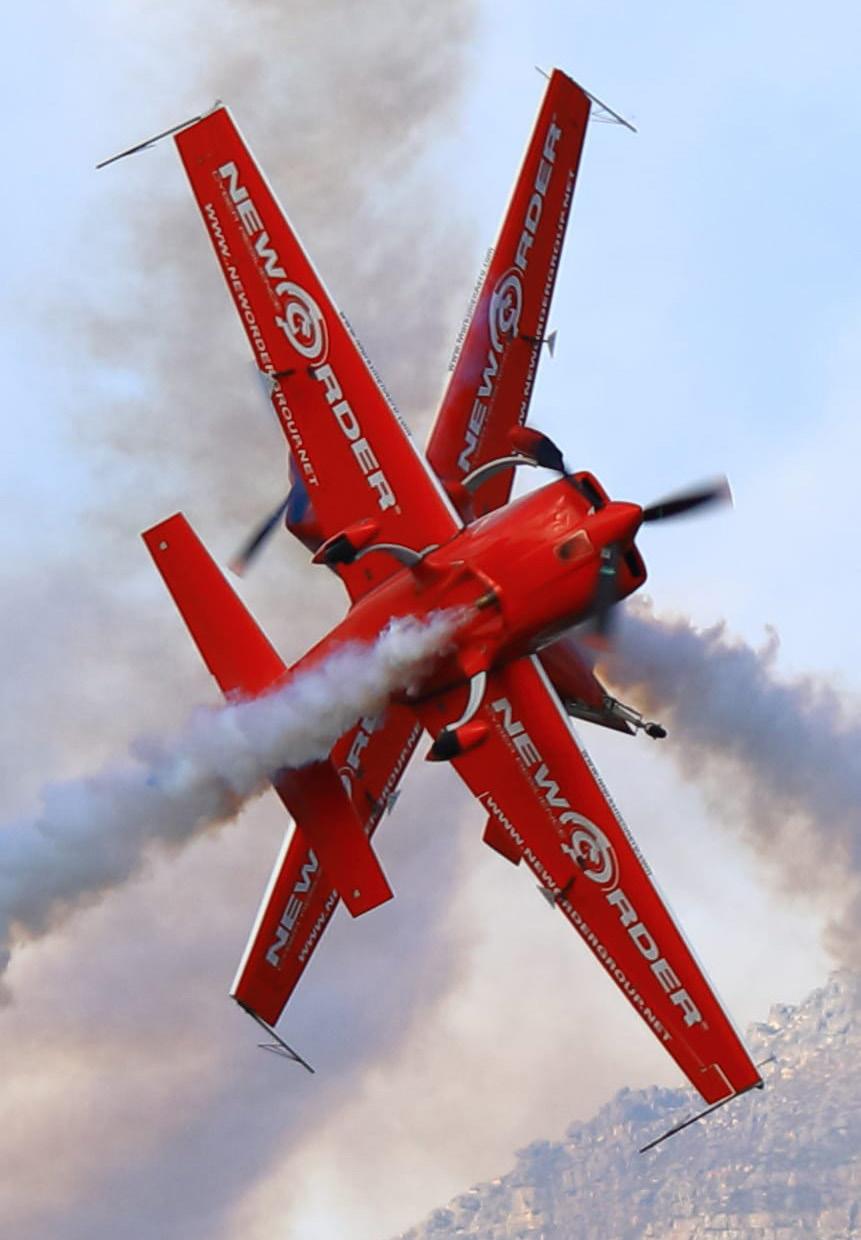
73 April 2024
The Marksmen flew a hugely impressive precision perfomance inclusiding this switchblade cross.
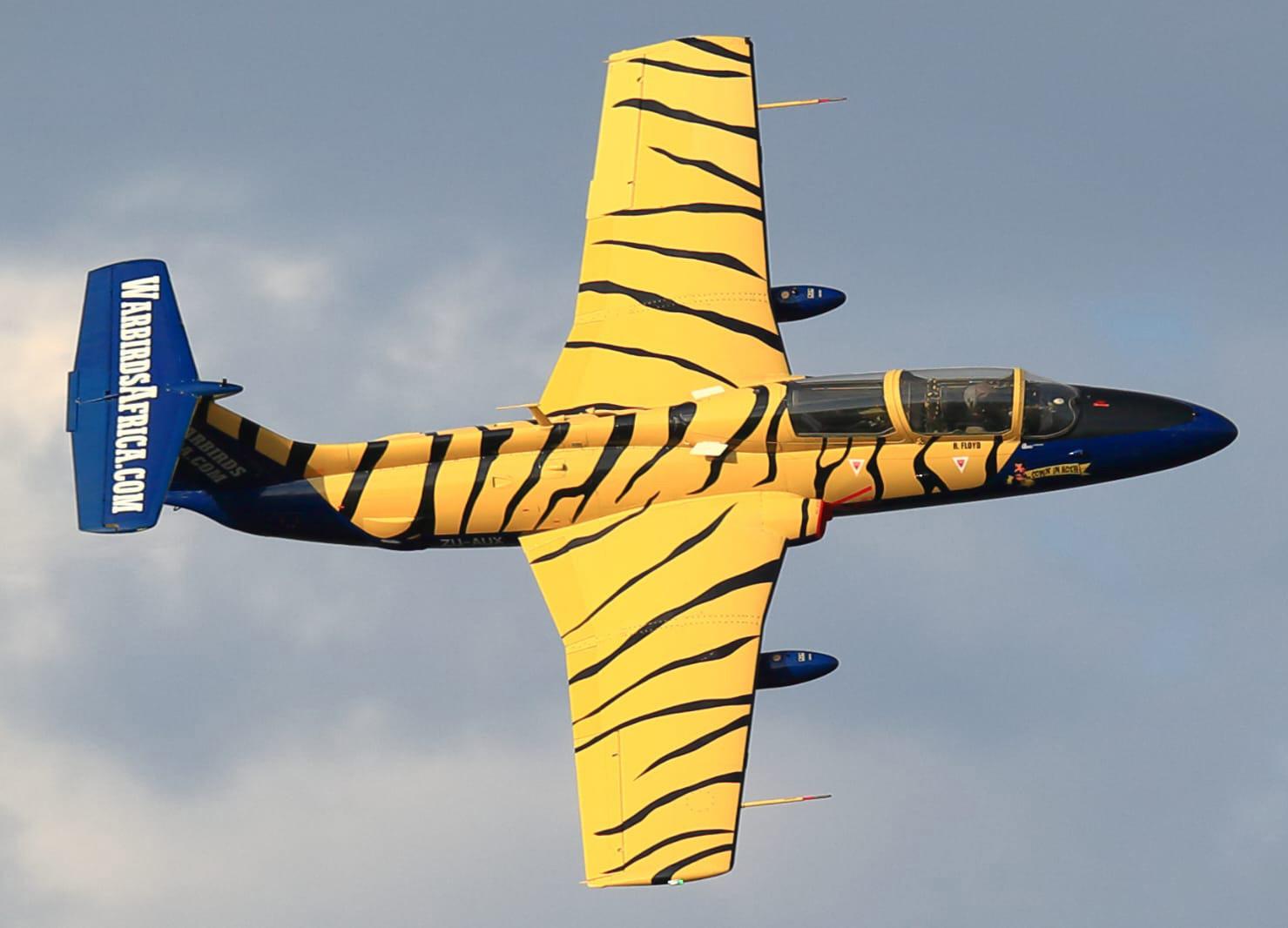

The airshow was held on a Friday and Saturday.
74 April 2024
Grant Timms demonstrated the L-29, basing it at Cape Town International.

level of polish, despite the challenge of flying unmatched aircraft, being a mix of Extras, an XtremeAir XA42 and an MX2.
The most remarkable feat of flying to get to the show was Juba Joubert, who flew the Alouette III all the way from Hartbeespoort Dam and back. Three of the Puma Flying Lions, namely Arnie Meneghelli, Ellis Levin and Sean Thackwray, flew their Harvards from Rand Airport. (It’s a good thing they’re sponsored by fuel company Puma). Also from Gauteng was Andrew Blackwood Murray in his Extra, who always impresses with his solo precision aerobatics display.
a narrowly averted crisis
Arguably the most impressive act in terms of crowd impact was the evergreen ‘drunk or old pilot’ performance. Alewyn Burger dressed up as a 90-year old veteran and flew heart-stopping manoeuvres in a Piper Cub, including having hooked someone’s washing line with his wheels. Amazingly, a large part of the crowd fell for the old pilot story and were completely caught up in the drama.
Stellenbosch in the summer is home to the busy Working on Fire team. Two Bell Huey’s, and two Air Tractor 802 water bombers, plus the Cessna 206 spotter, spectacularly demonstrated how much water could be dumped within just a few minutes.
Grant Timms flew the Hangar-51 L-29 Delfin the 350 nm from Gqeberha (PE) to operate it from Cape Town’s long runways, and Patrick Davidson brought his Gamebird from its base at Seaview Aerobatics – also at PE.
Leading Edge Helicopter’s thundering Sikorsky Blackhawk, which is based in Nelspruit in the winter, showed its power to the crowd in a very impressive fly-past with their two Hueys.
75 April 2024
Andrew Blackwood Murray gets inverted in his Extra.


76 April 2024
Part of the large team who made it all happen. - Image Dean Wingrin.
A Cesssna C210 does a high speed fly-by.

A novel airshow performance was given by local company Sky Messaging, who used their Piper Super Cub to tow a banner from a standing start on the runway.
Helicopter supremo Juba Joubert stunned all who know about helicopters with his performance in an Alouette III.
Another Stellenbosch based performance was by Derek Lord, who put their ex-SAAF Bosbok through its paces.
pilot) pulled out just a few days before the show, and an injured Brian Emmenis had to step into the gap – and bridge a vast understanding and experience chasm. In the absence of formal ATC, Derek Lord provided an advisory service.
completely caught up in the drama
Stellenbosch Flying Club also provided Cessna 210 and Piper Aerostar performances, which displayed these two aircraft to best effect.
There was a narrowly averted crisis when the agreed announcer (a former Silver Falcons
The show was hosted and arranged by the Stellenbosch Flying Club under the leadership of Chairman Stuart Burgess. It requires a massive effort to organise a show of this magnitude and full credit must go to Flying Display Director, Rikus Erasmus and his daughter Anneke, who was the Programme Compiler. Safety Director was Francois Hanekom and Brett Warren and Thys Eloff managed the very demanding ramp.
77 April 2024
Stellenbosch chairman Stuart Burgess with the club's GM Anton Theart.
j


Where romance meets nature
Located in South Africa’s Safari hub of Hoedspruit, Safari Moon is a boutique base from which to discover the wonders of South Africa’s Lowveld region. Explore a range of nearby attractions from the famed Kruger National park to the scenic Panorama Route, or simply chose to relax and unwind in nature, making the most of your private piece of Wildlife Estate wilderness.
78 April 2024 FlightCom Magazine 35
CONTACT: bookings@safarimoon.co.za 083 449 5868

Hangar to Rent

Hangar available in White River area:
T-hangar available for rent at a secure private farm airstrip near White River. No landing fees. Power available. R2200/m. Contact Jeremy (064 931 1642).
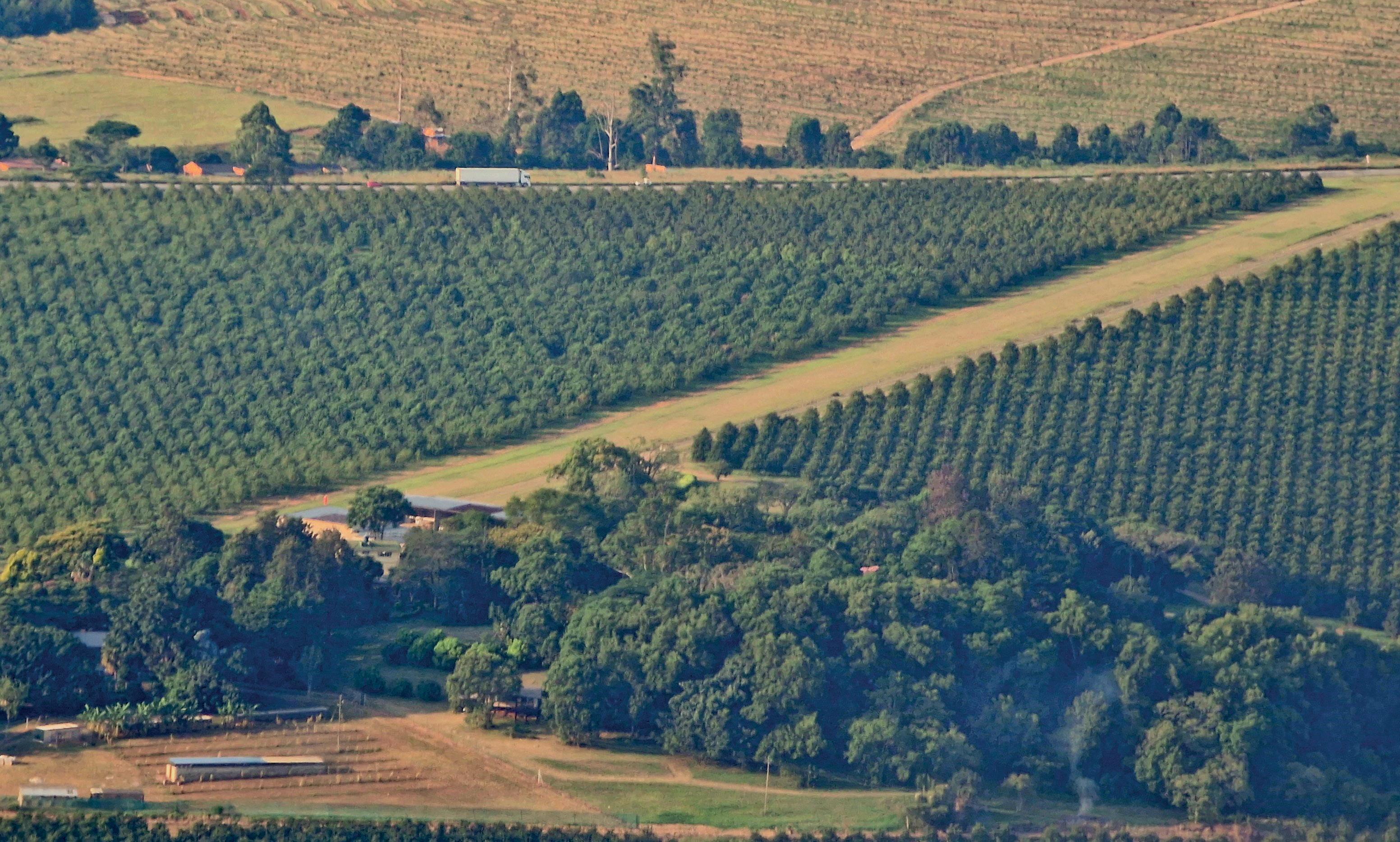


20 April
Wonderboom
BILL HARROP’S DINOSAUR DERBY NIGHT GLOW
27 April
Bill Harrop’s
Jacquie Pastor
Cell: 083 443 2662
SAAF MUSEUM AIRSHOW
4 May
AFB Zwartkops
Major Michael Church
E-mail: mike.church172@gmail.com
Cell: 072 720 0700
LOWVELD
11 May Nelspruit
Contact:
willemein.hodgkinson@kishugu.com

E-mail: jacquie@balloon.co.za
AIR FINANCE AFRICA
21 to 23 May
Sandton Convention Centre
Nick Fadugba
Email: nickfadugba@africanaviation.com
TEMPE AIRSHOW
25 May
Bloemfontein
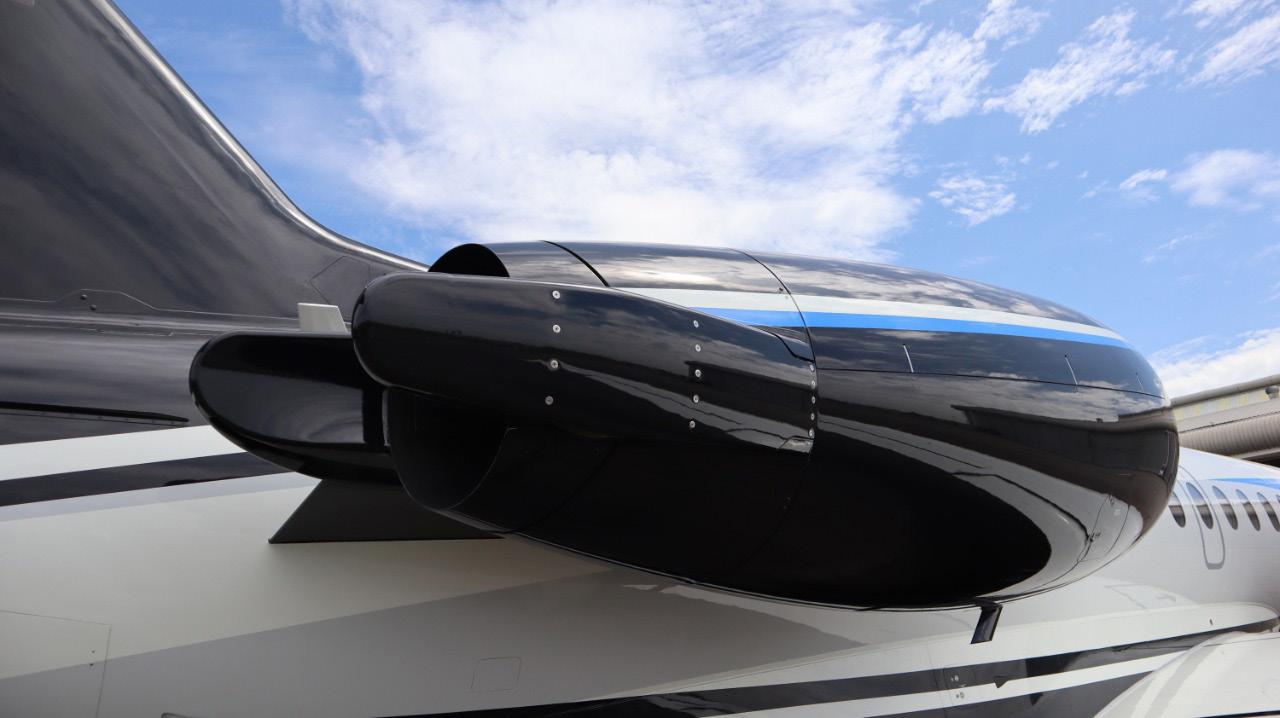
Conrad Botha
E-mail: rowco24cc@mailbox.co.za Cell 082 465 4045
EAA SOUTH AFRICA YOUNG EAGLES DAY
8 June
Lanseria International Airport
Neil Bowden
E-mail: airadventuresa@gmail.com
AERO SOUTH AFRICA
3 -5 July
Wonderboom National Airport
Website: www.aerosouthafrica.com

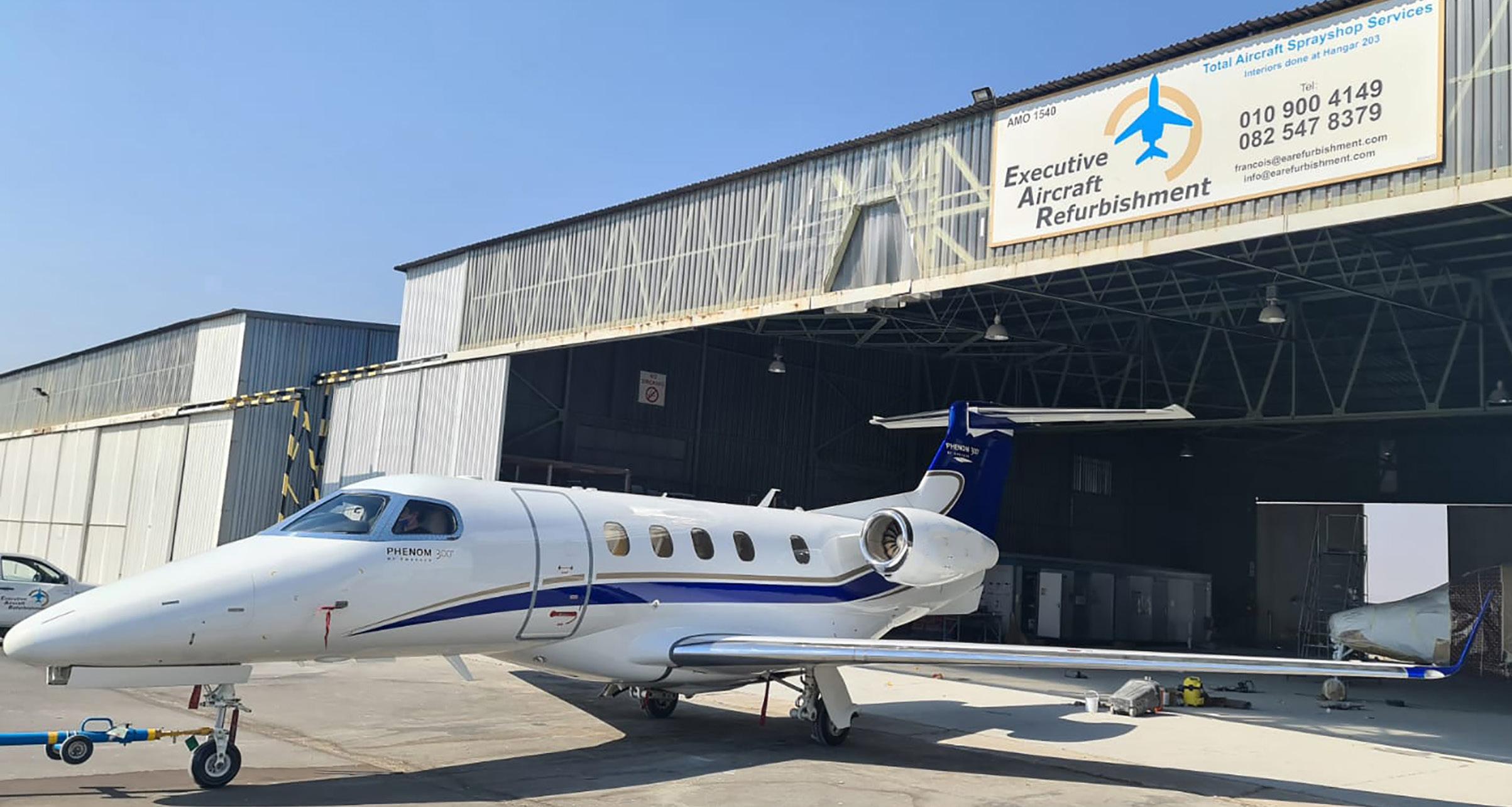

1 June
Newcastle
Johan Pieters
E-mail: Johan@champ.co.za
Cell: 082 923 0078
MAPUTO AIRSHOW
15 June
Maputo
Gavin Neil
E-mail: gavin@haps.co.mz

23

EAA AIRVENTURE OSHKOSH
22 - 28 July
Wisconsin, USA
Airfield camping contact Neil Bowden
E-mail: airadventuresa@gmail.com
6 - 10 June Zimbabwe
E-mail: zimairrally@gmail.com
Website: www.zimairrally.com
EAA TAILDRAGGERS FLY-IN
28 -30 June
Warmbaths Airfield
Richard Nicholson
Richard.nicholson1963@gmail.com
Cell: 082 490 6227

VIRGINIA AIRSHOW
27 July
Durban
Chris Theodosi
E-mail: chris@creativespacemedia.co.za
Cell: 071 220 1245
80 April 2024 Tel: +27 (0)10 900 4149 | Mobile: +27 (0)82 547 8379 Info@earefurbishment.com | Francois@earefurbishment.com Hangar 24 (Interior Shop) and Hangar 31 (Paint Shop). Lanseria International Airport, South Africa, Gate 5 North Side. EVENTS CALENDAR
WONDERBOOM AIRSHOW
Cell: 071 220 1245
Chris Theodosi: E-mail: chris@creativespacemedia.co.za
AIRSHOW
SAPFA PRESIDENT’S TROPHY AIR RACE
to 25
• 073 338 5200 race@sapfa.co.za • 082 449 2531
May Louis Trichardt David@pilotinsure.co.za
AIR RALLY
ZIMBABWE
(50 YEARS)
NEWCASTLE AIRSHOW



SAFETY FEATURE

SAFETY FEATURE
General aviation hides behind the safety record of its big brother – the airline industry.
THE AIRLINE INDUSTRY HAS ACHIEVED the incredible feat of being the safest mode of travel. It is far safer than riding a bicycle – or even walking. But general aviation (GA) is lagging far behind.
The good news is that, thanks to safety management, GA is getting safer, despite the exposure every minor incident gets on social media.
Social media
Flying is freedom
AOPA argues that the “proliferation of general aviation accident analysis through social media distorts GA’s safety performance, resulting in more attention being focused on fewer accidents. More people are more aware than ever of our accidents, so it feels like we’re experiencing more. We’re not.
“People are less aware of the 26 million hours a year we fly safely. That’s more than 30 million

82 April 2024
Introduction
Guy Leitch
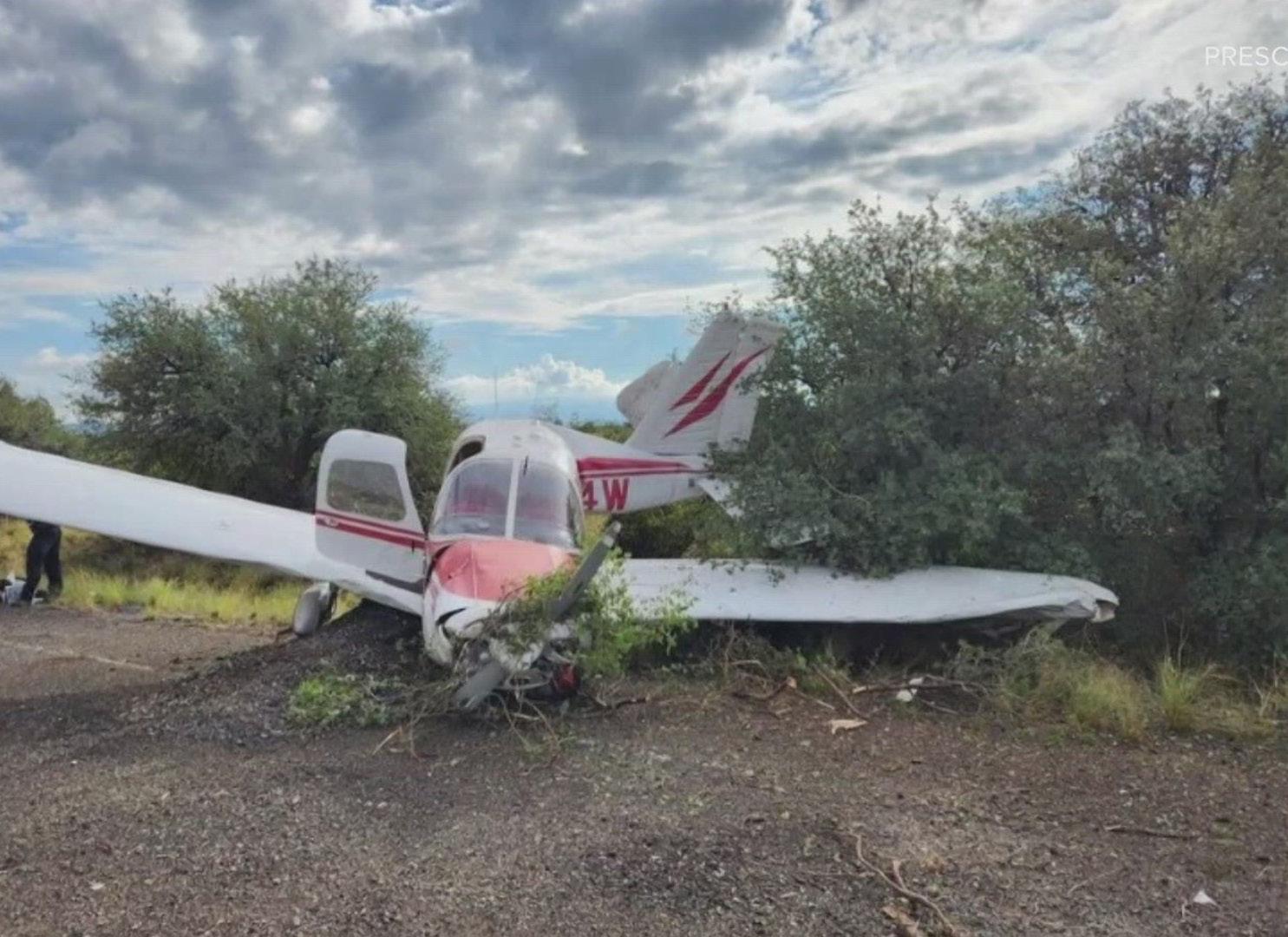
safe takeoffs and landings. There’s no news, no dramatic analysis over non-events. Routine doesn’t drive clicks—those defibrillators in constant demand to resuscitate social media channels.”
“The AOPA Air Safety Institute reluctantly entered the social media analysis arena…. out of frustration with the growing popularity of inchoate analysis by self-appointed doyens hunting “clicks” and prioritizing drama over fact. In some cases, the speculation from these analyses was flat out wrong and bordered on the absurd, but the posts drew clicks.
access the exceptional training and the freedom in this country to fly GA. Foreign governments send their most critical pilots here for training to fly their most precious dignitaries and fill their militaries.”
GA is getting safer
AOPA presents interesting numbers on GA from the USA – it points out that GA is tied to $247 billion in economic activity and 1.2 million jobs. GA is a vital pipeline for skillsets of all types in military and airline aviation, but especially so for pilots. People travel from around the world to
GA encompasses a broad segment of activity. If it’s not military or airline flight activity, it falls into the general aviation category, which includes everything from light sport aircraft to Boeing Business Jets in activities ranging from international, transoceanic travel to local flights in and out of unprepared fields.
Fatal accidents must be assessed in context of the amount and diverse types of GA activity. Much of GA flying is recreational. Pilots flying to remote bush strips only accessible by GA aircraft; or pilots flying to a small airport just to drop into a café for the famous $100 dollar hamburger.
83 April 2024

Why Fly?
Often pilots fly just to be airborne, pootling about, with no particular destination in mind. Flying is freedom to most GA pilots, the sensation of flight rejuvenates them mentally and emotionally in ways indescribable to those not enraptured by the experience.

AOPA points out that GA’s safety performance over the last several decades is impressive. “We’ve dropped our fatal accident rate (the traditional measuring stick) to 0.73 per 100,000 flight hours, a historic record. That’s less than half of what it was in the mid-’90s. All evidence points to an ongoing, steady decline in the rate and fewer accidents amid more GA activity in the future.
Analysts have compared GA safety to that of riding a motorcycle. Both are about skill, proficiency, and management of risk by the individual operator. If you are deficient in any of these areas, the consequences can be severe. The saying about no old bold pilots can also be said about maniac motorcyclists. If you are skilled, proficient and take risk and safety seriously, you will be safe.
The Safety Feature
This is the basis for this Safety Feature. We use it as an opportunity to showcase the key safety solution providers. Specialist companies like Flight safety Africa and Litson and Associates are doing excellent work in key fields such as aviation safety training, providing an advisory service for aviation safety, and quality advice to aircraft and airport operators, and software solutions.
Safety Management Systems (SMS) are the heart of a safe culture simply because if an operator has a fully functional SMS, the risk in flight operations will be reduced to As Low As Reasonably Practicable (ALARP). This is an attainable goal that will transform the GA industry.
j
84 April 2024
Introduction
FLIGHT SAFETY AFRICA
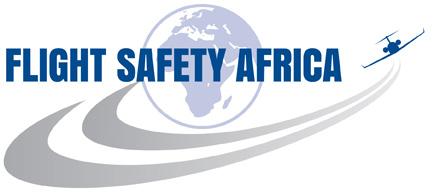
The Flight Safety Group provides global, fully certified, Fixed Wing
and rotary aviation audit and Risk Management Services.
AS PART OF THE global Flight Safety Group, Flight Safety Africa provides an extensive range of auditing, training and inspection services and advice to offshore and onshore operators across the African continent and beyond.
Flight Safety Africa adheres to International Quality Standards and is ISO9001:2015 Approved by Lloyds Register.
The company specialises in Aviation Safety and Compliance auditing. The audit scope covers both operators and air worthiness.
After 20 years in the aviation safety business, Flight Safety has incomparable experience and expertise. Services include:
• Aviation Safety Audits (fixed-wing and rotary)
• Risk Management
• Risk Assessment
• Systems Analysis
• Accident and incident investigation
Offshore and onshore crew training is a further speciality. As required by the International Organisation for Gas and Petroleum (IOGP), Report 690, the compoany’s offshore courses are OPITO Equivalent – following the OPITO Standard for HDA and HLO.
Flight Safety Africa offers training at the client’s facility, or Cape Town, South Africa. Courses are also available on line:
• Helideck Inspector Awareness (HIAT)
• Helideck Operations Initial training (HOIT
• Helicopter Emergency Response Team Member (HERTM)
• Helicopter Emergency Response Team Leader (HERTL)
• Helicopter Refuelling
• Helicopter Landing Site Officer (HLSO)
• Offshore Meteorological Weather Interpretation (OMWIT)
For further information or to book and audit or crew training: visit: www.flightsafteyafrica.com email: info@flightsafetyafrica.com or call: +27 83 263 4439

85 April 2024
FLIGHT SAFETY GROUP
j
‘Vision’ is a hard thing to define...
- Mike Litson

LITSON & ASSOCIATES
Litson & Associates is an independent Aviation Safety advisory & Quality auditing, training and software systems company based in Somerset West, South Africa We recently asked Mike Litson to share what inspired his interest in Aviation Safety...
In 2007 Mike and Karen Litson started Litson & Associates (L&A) and shortly after Litson & Associates Risk Management Services (RMS) from offices situated at the Cape Town International Airport
What inspired your interest in aviation safety?
ML: My interest in Aviation Safety was not because of any one ‘eureka’ moment, but rather a progressive interest during my career This started way back during my young days as a pilot in the Rhodesian Air Force, when I was the Squadron ‘Safety Officer’ and aviation safety was important for two reasons - to save lives, of course and to save aircraft, which we could not replace.
In 1985, my wife Karen and I moved to settle in Cape Town and in 1989 I joined the Court Helicopters Group as Safety Manager. I held this position for 9 years, then moving to manage Court Flight Operations for the next three years Based on this experience I was offered a position as Safety Manager for the Royal Flight Oman, which position I held for five years based in Muscat, Oman
Prior to returning to Cape Town, which had always been our intention, we spent one year in the UK, where I worked as an Aviation Safety Auditor, carrying out audits for the Oil & Gas sector worldwide

86 April 2024
Aviation Safety Specialists
Risk Management Systems
F R O M P L A N N I N G T O L A N D I N G

What was your vision for the company when you started L&A and RMS?
ML: ‘Vision’ is a hard thing to define. We knew we wanted to help save lives in aviation, as do the thousands of guys & girls working in the ‘aviation safety’ space worldwide.
After our return to Cape Town, it seemed logical to fall back on my experience over the last 30 years and contribute by identifying the gaps in Aviation Standards. My aim was to encourage aircraft operators used by our Clients to ‘step up’ and begin to implement the requirements in the OGP Aircraft Management Guidelines of that time
So, to be honest, the ‘vision’ was just to do as much as we could, for whoever we could and wherever we could, to enhance ‘Aviation Safety’ worldwide To do this, we registered our company, Litson & Associates in 2007, and took our first steps as a tiny company in Somerset West to add our efforts to those already involved in enhancing safety in aviation
There were three watershed moments in our first four years of operation. The Resource Sector created the embryonic Basic Aviation Risk Standard (BARS) hosted by the eminent Flight Safety Foundation, out of their Melbourne office.
I was kindly invited as one of two ‘foreign’ Aviation Safety Auditors to attend the BETA workshop on the concept, before it was rolled out and immediately realised the potential of BARS to create a truly global Aviation Standard for the Resource Sector, and I hoped, also, for the Oil & Gas sector
However, the latter has still not materialised, broadly due to each Oil & Gas Company continuing to operate to its own Aviation Standards, but BARS has gone from strength to strength for the Resource Sector Litson & Associates carried out the very first BARS audit in the world in 2012 in Johannesburg, South Africa L&A then later carried out the first BARS audit in South America as well.
In my opinion, there are too many ‘Aviation Standards’, which can be at the very least confusing, time-consuming and labour-intensive for aircraft operators to satisfy the different Standards required by different Oil, Gas and Mining Sector Clients. BARS has at least ‘flattened the curve’ for the mining sector with one global Standard used by all BARS Member Organisations and BARS Audit Companies
The next watershed moment was because ICAO had rolled out SMS (Safety Management Systems) to the Aviation Industry in the late 90's, and in principle, it was a very positive step However, it was required to be implemented in four years and at many small aircraft charter operators I visited, it was seen as a ‘four-year monster’ descending on their shoulders
I realised this was not the case and decided to do something to assist its implementation. We created L&A Risk Management Services (RMS), a sister company to L&A. RMS developed a new, simple software programme called “Electronic Safety Management System–Simplified” - eSMS-S™.
eSMS-S™ enabled an ‘SMS’ to be implemented simply and in a short period of time, as each of the required eleven ICAO SMS Elements (there are now twelve Elements) could be implemented through this system

87 April 2024
F R O M P L A N N I N G T O L A N D I N G
In addition to creating eSMS-S™, our software developers created our eREP-S™ (known as eREPORT) auditing system, which L&A and its Clients use to this day, to audit and compile reports for our Clients I am proud to say that L&A RMS now have eight software programmes, all being used in different ways to enhance the safety of flight.
The third watershed moment was when L&A was invited to bid for a Global Oil Company ‘Aviation Safety Advisory Services’ Tender, and L&A won that contract in 2013. We are proud to say that this oil company is still a client today, 11 years later.
Equally, L&A’s very first Oil Company and its first Resource / Mining Company Client remain Clients today, 15 years later
What are some of the key safety protocols and procedures that airlines or aviation authorities should have in place?
ML: Safety protocols and procedures are linked to either National Civil Aviation regulations or most often, Client-based Aviation Safety Standards. Whilst BARS has done a great job of reducing the accident and incident rate in the Resource Sector, it is only one industry sector.
There are other ‘sectors’ which have created Aviation Standards such as IATA IOSA for airlines, IS-BAO for the business aviation community, IOGP Aircraft Management Guidelines for the Oil & Gas sector and the Air Charter Safety Foundation for business and general aviation, for example There are also very specific Aviation Standards for geophysical surveys, air ambulance operations, offshore helicopter operations and others
Broadly, all of the above-mentioned Aviation Standards set the bar above the National Civil Aviation Regulations requirements, by targeting areas that each industry sector considers requiring enhancement for its operations. Thus, acting as a buffer between the minimum National Civil Aviation Regulations requirements to remain legal and safe and the sector’s higher Standards to ensure that safety is not impacted by any momentary drop in ‘Standards’.
Founded on the principle that the security and well-being of every passenger, crew and aviation professional is paramount, L&A continues to build a reputation as the trusted partner in the Aviation Industry, bringing a wealth of knowledge and experience to all aspects of their operation, and with an unwavering commitment to Aviation Safety.

Litson & Associates - dedicated to ensuring the sky remains the safest place on Earth.

F R O M P L A N N I N G T O L A N D I N G
www litson co za safety@litson co za Contact Us: + 2 7 2 1 8 5 1 7 1 8 7 M05 building, Bakers Square De Beers Avenue, Paardevlei Somerset West, 7130 Cape Town South Africa

Aviation Advisory Services:
L&A provides a comprehensive range of Aviation Safety Advisory specialist services to their Clients. This includes the identification of suitable Aircraft Operators, precontract audits, ITT preparation, bid evaluation, pre-contract start-up oversight and ongoing Operator operational reviews

The Company’s IOGP (Oil & Gas) and Flight Safety Foundation BARS (Resource Sector) Aviation Advisors/Auditors are a highly experienced and qualified team Their experience and skillsets include a SA CAA designated examiner, helicopter (on and offshore) pilots, fixed wing (airline, turboprop and corporate jet) pilots and maintenance, emergency response, aerodrome and airport specialists
L&A recommend annual aircraft operator Operational Reviews, to ensure the maintenance of a Client’s required Aviation Standards. These can include guidance on airfields, on and offshore helideck inspections and the training of client ground personnel (Aviation Coordinators).
Aviation Safety Reviews (audits) of scheduled airlines and non-scheduled (charter) aircraft operators, both fixed-wing and rotary-wing, are carried out on behalf of Clients who are, or are considering using particular charter aircraft operators and airlines

L&A Risk Management Services have developed a software programme eREVIEW (eREV-S), which enables comprehensive ‘virtual’ Safety Reviews to be conducted remotely when it is not possible/unsafe to do in person at a particular time
Safety Reviews (audits)
Scheduled airlines, non-scheduled charter aircraft operators both fixed-wing and rotary-wing (on and offshore) and RPAS / UAV / drone operators

Inspections
craft: fixed-wing/rotary-wing AS (Drones) rodromes and airfields shore helipads/ Offshore helidecks
Advisory services
Including Risk Assessments
Incident & Accident investigation and reviews
Airline Safety Assessments
Creating and/or updating Client Aviation Standards and Policies
Aviation (Journey) Management Plans management

89 April 2024
F R O M P L A N N I N G T O L A N D I N G

Celebrating Safety consistency
The L&A Aviation Safety Award (ASA)
“It is just a genuine ‘thank you’ from a company totally dedicated to enhancing the safety of flight anywhere L&A visits”
- Mike Litson
In 2017, Litson & Associates introduced the Aviation Safety Award (ASA) This Global Aviation Safety Standards Award has been created using a combination of best practices, policies & procedures from internationally recognised Standards in the airline and aircraft charter industry.
The ASA is awarded annually to companies worldwide that have been audited by L&A within the preceding twelve months and have achieved a consistently higher-thanaverage standard of Safety in flight and maintenance operations. These Companies include airlines, non-scheduled aircraft and RPAS operators.
In recent years, the scope of the ASAs has been extended to include airfields and on/offshore helidecks
Companies that have specifically requested an L&A ASA Safety Review and have successfully addressed and closed out any and all Findings under the terms and conditions of the L&A ASA scheme, can also be eligible Additionally, these Operators will also have consistently met L&A’s required Standards over a two or more-year period of annu
The purpose o
incere ‘Thank you’ to aircraf ion Standards over a period ment of every organisation est means of transportation
A Bronze Awa eview and the first level of t the Gold and Diamond Awa



90 April 2024
F R O M P L A N N I N G T O L A N D I N G
Aviation Safety & Quality Training
‘Training’ applies across the board in aviation for Ground Crew, Engineers, Quality Controllers, Quality Assurance and Aviation Safety specialists, as well as to Pilots and Cabin Crew Every discipline in aviation has bespoke training for that speciality
Indeed, each role is a ‘speciality’ and requires training that equips the individual to ‘do the job’, not tick-a-box training, just for the certificate.”
- Mike Litson
From learning to leading, Litson & Associates offers assistance in your Aviation Safety Training journey.
Litson & Associates is a SA CAA ATO*. They provide professional, outcomes-based Aviation Safety & Quality Training courses, presented by facilitators who have spent their careers specialising in the field of aviation, as senior aircrew, engineers and aviation accident investigators
Online or corporate in-house training
Currently, the majority of our courses are held online throughout the year, thus making it convenient and cost effective to attend from anywhere in the world without airline and accommodation expenses
L&A specialise in providing in-house training, both locally and abroad All our open training courses can also be presented as in-house corporate training Corporate (inhouse) training can allow the course content to be tailored to a clients’ specific environment L&A is committed to ensuring that delegates depart their courses with the knowledge and understanding to enable them to ‘do the job’
Most importantly - L&A’s training courses are tailored specifically to aviation industry personnel who already have a minimum of two years of aviation experience.
Visit our website to view our available 2024 training courses.

Core training courses include:

*SA CAA ATO SACAA/1119/ATO
• Quality Management System & Auditing (QMSA) *
• Safety Management System incl. RPAS (SMS) *
• Lead Auditor (LA)*
• Occurrence Investigation (OI)
• Co-ordinator Occupational Health & Safety (COHS)
• Safety Emergency Procedures Training (SEPT) *
• Crew Resource Management (CRM) *
91 April 2024
FROM LEARNING TO LEADING


L&A



Systems currently under development:





Flight
monitoring system
Airline assessment tool
accident and incident database ITT tendering system
Auditing & report writing system Aircraft
questionnaire
Virtual Safety Review (audit)
hosting site
Bespoke online learning software system Aviation Safety Management System program
e S Y S T E M S - S S o f t w a r e
provides Aviation
Trusted Aviation Digital Companion L&A RMS eSYSTEMS-S Contact us for a live demonstration or to request a quotation esms@litson.co.za
your Digital Flightpath Through Safety Excellence
Risk Management Systems
Safety Management supporting software programmes including eSMS-S™ Premium/Plus and other safety-related ‘eSystems’ primarily to the aviation industry. Your
Elevating

HELIDECK CERTIFICATION - AFRICA
HELIDECK CERTIFICATION-AFRICA provides a local solution for a global requirement. Certification of helidecks is a legal requirement to ensure safety of all vessel and air crew.
Certification reduces the risk of potential liability and ensures validity of insurance. Helideck Certification-Africa is ISO9001:2015. Approved by Lloyds Register and adheres to this Quality Management System.
Helideck Certification-Africa bases its inspections on the UKCAA CAP 437, which is a recognized global standard, assuring the highest level of safety for offshore helicopter operations.
A key competency is precision friction testing: The company employs the Findlay Irvine Microgrip friction tester, which is the only friction tester approved by the UKCAA CAP 437.
Helideck Certification-Africa’s comprehensive inspections cover:
• Helideck markings and obstacle-free sectors
• Identification of operational Helideck limitations
• Competence of Helideck Crew
• Communication procedures
• Firefighting and rescue equipment
• Emergency Response Planning
• Helicopter operational procedures
Safety is non-negotiable. Helideck certificationAfrica provides peace of mind and compliance with global safety standards.
For further Information or to book an inspection visit:
www.helideckcertification.com
email: info@helideckcertification.com or call: +27(0) 83 263 4439



93 April 2024
j FLIGHT SAFETY GROUP
TRAVOLTA’S CROOKED PILOTS?
TWO PILOTS ARE CHARGED with embezzling close to $800,000 from John Travolta.
The Marion County (Florida) Sheriff’s Department has confirmed that Jean Paul Lacruz-Romero is in custody, charged with fraud, theft, and money laundering. The second pilot, identified as Jorden David Coursey, is being sought for similar charges.
Travolta operates a pair of Dassault Falcon business jets as well as an Eclipse jet and other aircraft from his home at the Jumbolair aviation community near Ocala, Florida. The Falcons and other aircraft are used for travel associated with Travolta’s business interests, as well as personal transportation.
According to the police reports, Lacruz-Romero and Coursey used a third-party company, Lux Fuels LLC, to bill Constellation for the aircraft’s fuel and other charges. But that company, which they presented as a discount fuel broker, is licensed under Lacruz-Romero’s wife’s name.
An audit of fuel charges between October 2021 and July 2023 revealed overcharging in the amount of $785,050, which included “administrative fees” paid to Lux Fuels. According to the police report, Lacruz-Romero received $382,166 “in fraudulent funds” from Lux Fuels and Coursey received $305,231. j
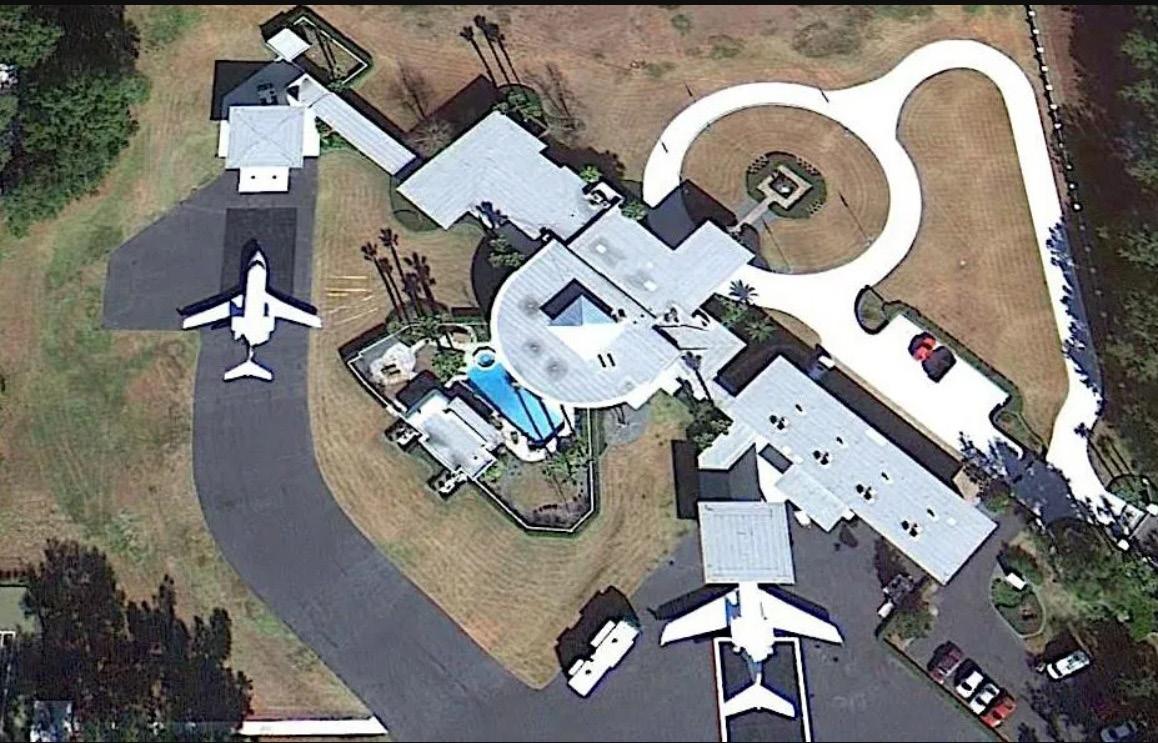
94 April 2024 NEWS
John Travolta's Jumbolair home with two Falcons.
FlightCm
Afr ican Commercial Aviation
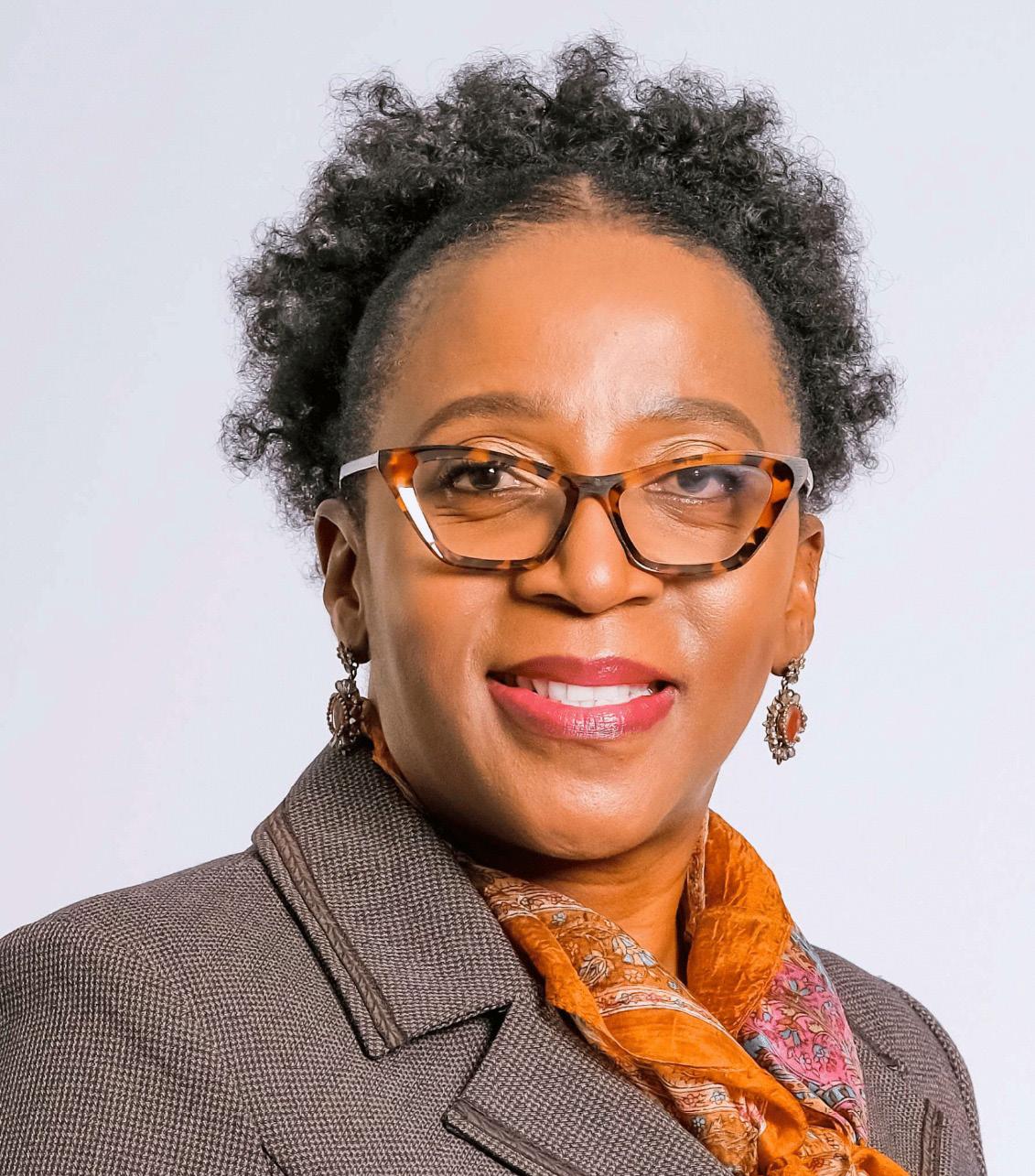
ACSA's Mpumi Mpofu –tells all.
Flying in Somalia
The sacrifices of Flying
Edition 183 | April 2024
Leitch on State Owned airlines
Cover: ACSA
Guy

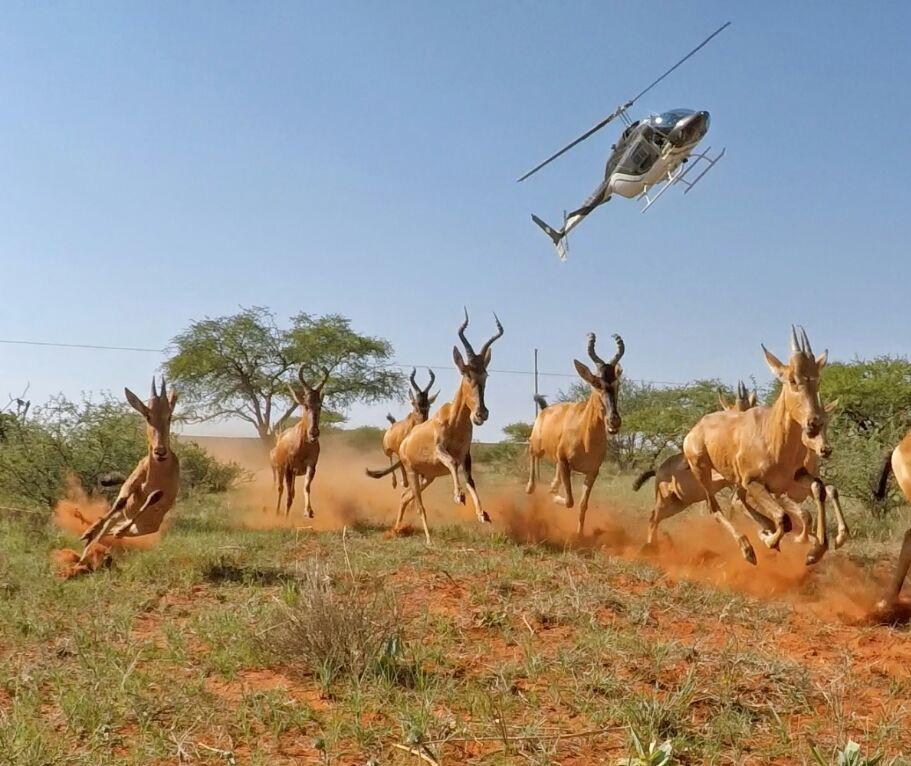

APRIL 2024 EDITION 183 TABLE OF CONTENTS
(0)83 607 2335
(0)81 039
(0)15 793
Publisher Flyer and Aviation Publications cc Managing Editor
Leitch guy@flightcommag.com
Sales
Long sales@saflyermag.co.za
& Design
Imagenuity cc Contributors
Bassi
McDermid
Jeffery Kempson © FlightCom 2023. All rights reserved worldwide. No part of this publication may be reproduced, stored in a retrieval system, or transmitted by any means, electronically, mechanically, photocopied, recorded or otherwise without the express permission of the copyright holders. John Bassi - Sacrifice Pt2 04 08 13 14 15 16 20 25 26 30 31 32 34
Mpumi Mpofu: Ready for Take-off
+27
+27
0595 +27
0708 ACCOUNTS: ADMIN: TRAFFIC:
Guy
Advertising
Howard
076 499 6358 Layout
Patrick Tillman:
John
Laura
Darren Olivier
ASCA’s
News - Cameroon – blames Boeing
Teleportation
Aviation SA: Flight School Directory
West Charter Directory
AMO Listing Backpage Directory
Directory
Kempson
To Paris
Lunch
Hydrogen powered plane
SAA Partnership Delay
Hugh Pryor -
Pt1 Alpi
Merchant
Skysource
AME
Jeffery
-
for
News -
tested News - Kenya -
Laura McDermid - Iris goes to Somalia
A NOTE FROM THE EDITOR:
I OFTEN GET ASKED
WHY Ethiopian Airlines is so successful compared to all other African stateowned airlines.
The reasons fall into two broad categories: First, a strong policy of non-interference by the Ethiopian government. Second, the government vigorously protects its airline from competition.
The Ethiopian story is so good that it is exporting it to other African countries that also want a flag carrier. There are now three Ethiopian run airlines: in Malawi, Togo and Zambia, and all are either profitable, or at breakeven, and growing. Togo’s ASKY added two 737 Maxes to its 737 fleet and has grown its route network. Malawi Airlines has added a 737-800 and Zambia Airways has acquired a Boeing 737-800.
and failures of policy, management and finance. Air Senegal’s much vaunted alliance with Air Cote D’Ivoire has been a misbegotten marriage of two delinquents that is painful to watch.
The Nigerian government continues to demonstrate zero ability in airline management, although they have the money to disguise their failures. Nigeria Air, the Nigerian flag carrier, painted an Ethiopian Airlines 737 Max in Nigeria Air colours. This led ‘experts’ to claim that Ethiopian was dumping its ‘dangerous Boeing Maxes’ on Nigeria.
The lesson remains clear
The Ethiopian management of these previously basketcase airlines is making all the difference. As the African aviation industry recovers from Covid, the well-run airlines are doing even better, but the badly run ones are sinking even faster.
South African airlines are an excellent example of this. The industry is significantly lagging the rest of the world in its recovery from the pandemic, particularly as the bankruptcies of SA Express, Mango and Comair have reduced seat supply by over 30%. South Africa’s privately owned airlines are in a race to step into the void left by the closure of these airlines. FlySafair, Airlink and CemAir are adding to their fleets and routes almost daily, and FlySafair has expanded crossborder for the first time.
In west Africa, the record of governments running airlines remains abysmal, due to unrealistic goals
Nigeria’s Air Peace continues to fail on every international route they try. The shambles continues.
In east Africa, the Kenya Airways public-private partnership has managed to make an operating profit but is still drowning in debt. Uganda Airlines continues to blunder on without capable management. Air Tanzania keeps randomly buying new planes, presumably for backhanders, as though having nice new planes makes an airline. The government’s throwing money at its state-owned airline has all but killed the privately owned, Fastjet.
The lesson remains clear. Unless the government behind a state-owned airline provides strong protection against private sector competition and has a strict handsoff policy, the usual African malaise of corruption and appointing incompetent cronies into management will doom every attempt to start a flag carrier.
And thus do the poor, who need financial support, subsidise rich airline users.
BUSH PILOT HUGH PRYOR

PART 1
TELEPORTATION
One of the best clients for whom I ever flew was BP, the British oil giant. I was with them in Algeria for about seven years, from the very start of their large gas projects, right in the heart of the Sahara Desert, near the small towns of In Amenas and In Salah.
OIL PROSPECTING TENDS to bring out the more original characters, which makes life interesting. But the actual corporate attitude of BP was also very easy to live with. And this was in part responsible for allowing some fine leaders to rise to the top of the pile, people it was a pleasure to work with and for.
If only one could say the same about the aviation industry, the vast majority of which, sadly, is now run by egotistical incompetents, who are nannied by bureaucrats whose only skills appear to be in the generation of mountains of paperwork at hallucinatory prices.
As far as flying was concerned, we were out of the sight and the mind of the authorities. We were so far away from anywhere that we could not even talk to the powers that be on HF radio most of the time.
Of the ten destinations in the BP concession, only two had airstrips. At all the other places the pilots just looked for a suitable piece of desert, as close as possible to where the passengers wanted to go, and landed. After all, we were flying Twin Otters and the Twin otter just aches for that sort of challenge.
aviation is now run by egotistical incompetents
The BP projects started in the era before Health, Safety and the Environment (HSE), the industrial world’s new religion which has condemned the great sins of originality, instinct and enjoyment, saving countless lives and injuries in the process.
I am ashamed to admit that, when the new culture was introduced, I was one of the cardinal sinners.
Fun like that is banned nowadays.
The pilots on the BP project were interesting as well. In fact we carried out our duties with such obvious enjoyment and enthusiasm that our bosses decided that our tours of duty should be increased from ‘Month-on-month-off’ to ‘Two-months-on-onemonth-off’. This hardly affected morale at all, so our bosses, in a fit of pique, went one step further. Because we were doing two and one, we theoretically had the opportunity to earn more field allowances than
4 FlightCom: April 2024

our unfortunate colleagues, who were on month-onmonth-off duty rotations. So?...obvious solution?... That’s it!...Cut the Field Allowances of the BP pilots, who work for eight months of the year and redistribute the money among the poor guys who only work for six.
Of course, it was never really the intention of the bosses to redistribute the cut allowances among the other pilots. The savings, on duty pay and travel expenses went, in fact, into substantial salary hikes for the office wallahs back in the ivory tower. The only salary adjustment I received in the last seven years I spent with the company was a fourteen percent pay cut...take it – or leave.
This little subterfuge backfired nicely though, and led me to believe, however fleetingly, that Right is occasionally Might. BP’s clients didn’t like their pilots being penalised for working on the BP contract and they said so... loudly...to our management. The reply from our bosses was terse to the point of arrogance and I was asked to read it by our enraged client:
if nincompoops of this calibre can rise to the top and become millionaires, then there’s hope for all of us! Most of the pilots continued on the contract with the next company to take up the BP baton, and one of those pilots was Andrew, who was to become a great friend.
Andrew was a large and colourful character who bore himself with that quietly good-humoured urbanity which comes with large size and a broadly experienced and well educated intellect. He had a small dot of beard on the point of his chin, just to prove that he could. Another highly commendable characteristic of this gentle giant was his inability to suffer foolish management gladly.
Andrew was a Captain on a Beech 1900D, an ungainly looking 19-passenger aircraft which had surprisingly sprightly field performance and operating economics which could even bring a smile to the face of an accountant.
a stunning blonde girl, called Chris
”Sir,” it started. “In reply to your letter, we would like to point out that we do not tell you how to run your company and therefore we do not expect you to tell us how to run ours.”
It was signed by our Managing Director.
BP terminated our contract with due notice and our company was asked not to submit further tenders for BP contracts in the future. Thus, with one blinding piece of self-gratification, our lords and masters lost a contract for three aircraft, which continues to this day.
Little wonder that the company no longer exists. The surprising thing is that it managed to survive for over thirty years with such people running it. The plus side of all this, if there possibly could be one, is that
The 1900 used to come down twice a week, to our desert camp at Teguentour, 74 miles north of In Salah, to carry out crew changes. Andrew was often the captain. From time to time, his first officer was a stunning blonde girl, called Chris, who was later to become a Boeing 747 pilot with South African Airways. Andrew confidentially assured us that Chris had a tattoo, and its location was a constant source of debate amongst the virtually exclusively male denizens of Teguentour.
Soon after six every evening, when the day’s work had wound down, beers were served in the little open-air bar, outside the main office block.
Teguentour became famous for its relaxed and convivial evenings. The dialogue was spiced with broad-reaching and often humorous exchanges, both political, spiritual and cultural, with Chris’s tattoo to fall back on if the conversation flagged.
6 FlightCom: April 2024
HUGH
PRYOR
When Andrew was due down for a night stop, the evening’s entertainment was livened up by the choice of a ‘Subject for Discussion’, which often provoked a lively debate, after the vocal chords had been loosened by the amber nectar.
Global Warming, for example, was on the programme one evening, Those in Favour, Those Against. Andrew and I were In Favour and everybody else was, probably quite rightly, Against.
Andrew was invited to present our case and he launched into a professorial speech concerning the beneficial effects of the much maligned and misunderstood weather phenomenon. “Teguentour,” he said, with the authority of the internet and local knowledge to support his argument, “Has received more rain in the previous twelve months than has fallen here in the last thirty years.”
We had to agree with that, because Nigel, the Medic, had told us and he was the weather geek on the camp. “Eighty percent of the world’s population lives within thirty metres of sea level.” We all bowed to his statistic.
“Look at the amenities, for a start.” Andrew’s hands joined the argument, gesticulating their support for his points,
“Shopping facilities in In Salah, only seventy-four miles to the South, if you can find any there. Gas on tap, only three kilometres away, directly below our feet. Convenient weekly rail connections to Algiers, from Biskra, only four hundred and twelve nautical miles to the north east. Eight months of glorious sunshine, highlighted by only four months of impenetrable sandstorms.”
“A location close enough to the old French nuclear testing grounds to discourage the casual tourist and, if I may say so, surrounded by the most intelligent and charming collection of people you could ever wish to meet!”
colourful character
“If Global warming melts the ice caps, as predicted, the sea levels are set to rise by anything up to twenty metres, possibly more, and there is going to be an awful lot of people looking for somewhere to live.” He paused, masterfully, for acknowledgement, which was duly given, because we wanted to find out where he was going with this little nugget.
“Teguentour is at an altitude of 2076 feet above sea level, so I would suggest to you, Gentlemen and Chris, that we should all try and buy plots around Teguentour before the prices go through the roof!”
A warm glow descended upon the assembled company and smiles softened the features of even the most hardened Anti-Global-Warming campaigners. “And, in conclusion, Lady and Gentlemen, let us not forget that this is all made possible by a life-giving increase in rainfall brought to us by the miracle of Global Warming.” Andrew sat down to thunderous applause and I was saved from losing the day with my speech.
Andrew’s speeches caused the little bar to be noticeably fuller on crew-change nights. Even the more reclusive members of the workforce could be tempted out of their cells to take part in the debate and to allow their imaginations to wander while gazing at the golden allure of Chris.
That tattoo must be really low if it is covered by a pair of jeans that small! Or maybe it nestles between those beautiful firm young...” a large and
Andrew triumphantly revealed an entrepreneurial side to his character which had previously been hidden from public scrutiny.
FlightCom: April 2024 7
IRIS GOES TO SOMALIA
Laura McDermid continues her stories about Iris McCallum in East Africa.
Having spent the last couple of years flying to a rota, I was thoroughly enjoying the freedom and randomness of flying charters at Sunbird Aviation.
GRANTED, THE AEROPLANES
weren’t as modern, in fact the old Piper Aztec 5Y-ARN was the most cantankerous of any aircraft I’d ever flown; however I embraced the differences, knowing that mixing things up would help shape me into a better pilot.
Thanks to the invaluable tips and advice from fellow colleagues, I had recently flown my first solo cross country from Wilson Airport in Nairobi, to Uganda in ARN.
Over the past month I’d worked out more or less how long to crank and how long to wait, and ARN and I had established a mutual understanding.
Captain Brian Nicholson was my supervisor and mentor, it was Brian who would divvy up the charters each week between the pilots.
the battery couldn’t summon
enough power
Due to the fact that ARN had a single 12-volt battery, starting him was always a challenge as often all the energy would be spent in starting the left engine.
I’d have to wait patiently for the battery to recharge before I was able to start the right engine, a process that would always have me on tenterhooks as I feared burning out the starter-motor.
‘Iris, how would you and ARN like to fly Patrick Walker to Somalia tomorrow?’
Patrick was the husband of my sister-in-law’s best friend and over the years I had met them at various family gatherings and had developed a great fondness for them both.
‘That sounds like fun, pencil me in.’
I pulled out my map of Somalia, smoothing out the crease lines with the palms of my hands. The country
8 FlightCom: April 2024
LAURA MCDERMID
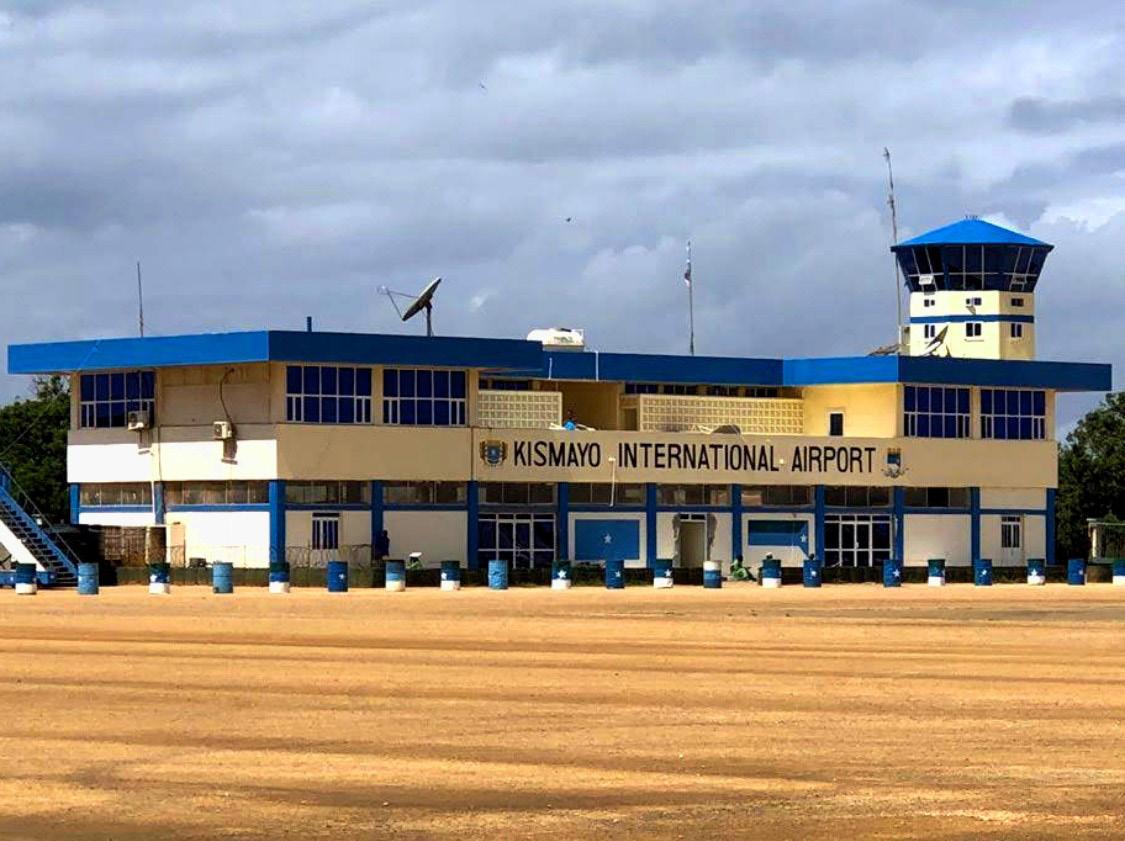
was situated on the Horn of Africa and had the longest coastline on Africa’s mainland. It was bordered by Ethiopia to the west, Djibouti to the northwest and Kenya to the southwest.
My well-thumbed whizz-wheel estimated the flying time over the distance of 348 NM at 175 mph to be 2.5 hours, provided of course that there was no significant head wind. The heading was almost due east from Nairobi.
I filed my flight plan from Wilson to Kismayo for takeoff at 06h00 local time.
The first blush of light had just kissed the eastern horizon when Patrick arrived at the airport. The dark blue suit and starched white shirt he had chosen to wear fitted his lean frame perfectly, and he carried himself with the confidence of someone who was accustomed to getting what he wants.
The flight was uncomplicated, and we landed at Kismayo Airport at 08h30.
I gathered all the necessary paperwork to clear ARN at customs and met Patrick at the taxi.
Having never been to Somalia before, I was captivated by the lime-washed flat-roofed buildings that sprawled along the broad, palm-tree lined avenues. The gothic

FlightCom: April 2024 9
Kismayo Airport, Somalia
My old friend, Piper Aztec ‘ARN’.
arched windows inlaid with fine lattice work, and carved intricate wooden doors, were all evidence of the mixture of Venetian and Islamic influences.
The taxi pulled up outside a hotel where I was to wait while Patrick had his first meeting. I enjoyed a breakfast of fresh papaya, granadilla and grapefruit, the juicy yellow flesh just sweet enough to temper the bitterness.
The taxi took us back to Kismayo airport once Patrick had concluded his meeting. Next we flew for thirty minutes inland to an unmanned airfield in Marere. The area was renowned for its export-quality citrus plantations which were funded by the World Bank.
trees and pored over my maps. The air was heady with the scent of citrus blossoms, and I found myself dozing off to the soothing buzzing of bees.
We were scheduled to leave Marere for a flight to Mogadishu at 15h00, however ARN had a different idea. The engine on the left started without a problem. I cranked the starter on the right, the prop turned and the engine coughed but the battery couldn’t summon up enough power to start.
the prop turned and the engine coughed
I spotted the long muram strip which stood out like a black scar amongst the endless rows of dark green.
Once Patrick had been collected for his next meeting, I made myself comfortable in the shade of the orange
Luckily the runway was next to a working farm, so I went in search of assistance which I found in the form of a blue tractor. We hooked the jumper leads from the tractor to the small 12V battery. I held my breath. After a couple of false starts, the right engine finally caught.
Once airborne, there was no VHF radio contact, thus following the route on my prepared map was critical. The flight took an hour and fourteen minutes.
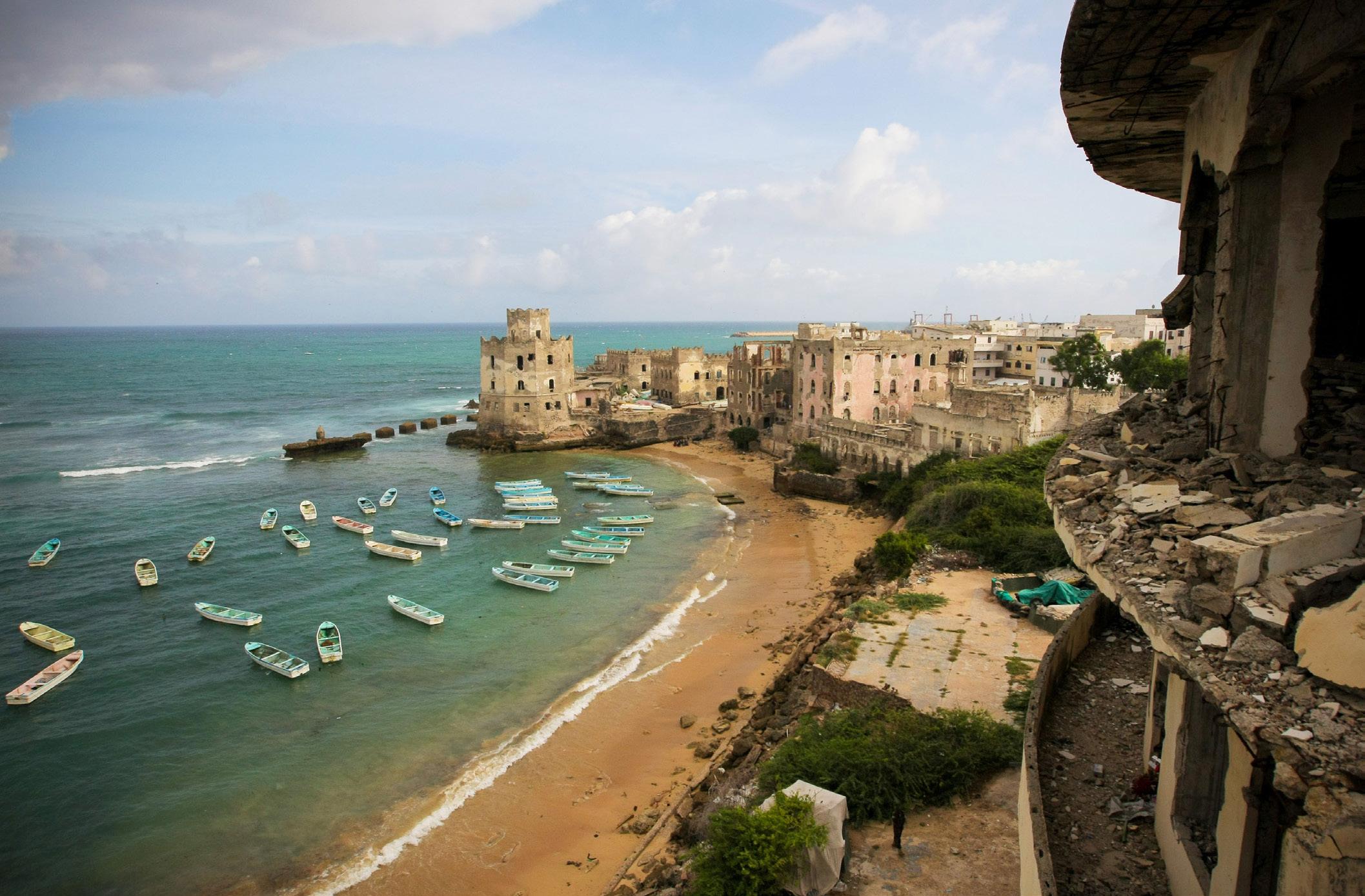
10 FlightCom: April 2024
PILOTS
View of the old town from the veranda of the Al-Uruba Hotel.
Once on the ground, I refuelled ARN and put him to bed, ensuring that he was firmly tied down. Patrick had organised a Land Rover at the airport. He turned to me with a cheeky grin, ‘My turn to chauffeur you Iris.’
He pointed the car towards the coast and within twenty minutes turned the Land Rover down a palm-tree lined road to the entrance of a massive triple-story white hotel with crenelations, reminiscent of a caravanserai straight out of Arabian Nights.
A bellhop wearing a white kanzu and neatly cropped crimson jacket trimmed with gold braiding, sporting a matching kofia on his head, materialized out of thin air.
‘Welcome to the Al-Uruba Hotel, allow me Memsahib.’ He bowed slightly and flashed me a broad smile.

His bone-white teeth looked as though they were hewn from the same material as the luminous white walls. He placed my dusty duffel bag on the luggage trolley with the same care as if it were a Fabergè egg.
‘Iris, go grab a beer, I’ll see you this evening at dinner. Ali will take care of you.’
‘It will be my honour Ali’, I addressed him in Swahili.
Ali squirmed with delight at hearing his native tongue, his eyes disappeared into the leathery folds of his skin as his wizened face split into a grin.
If I thought the outside of the hotel was impressive, the inside was like stepping into a fine hotel in Venice.
Shards of coloured light from the crystal chandeliers shimmered and danced over the white marble walls and floor. Replicas of the great Italian renaissance masters hung on the walls, and ornaments ranging from delicately carved clocks to marble busts of Venus, were strategically arranged to delight the eye at every turn.
map reading was critical
The first thing that greeted me as I walked into the lobby was the musky-sweet scent of fresh flowers.
Ali led me to the dining area, which opened onto a wide veranda overlooking the lighthouse and old town with the vast turquoise ocean beyond. I was ushered to a table and within seconds a waiter, with a white cloth draped over his arm, poured a beer into a frosted glass.
The delicate tinkle of piano keys drifted on the soft breeze that ruffled the fronds of the palm trees. I watched a skipper clad only in a loincloth skilfully negotiate his dhow around the jutting rocks, his sinewy walnut-brown body glistening with the effort.
FlightCom: April 2024 11
The Al-Uruba hotel in Mogadishu, Somalia - then and now.
PILOTS
Once I had finished my beer, Ali miraculously reappeared at my side.
‘Let me show you to your room Memsahib.’
I followed him to a room upstairs and he flung open the brass-studded double doors with a flourish.
The floor was a geometric blaze of black and white tiles. In the centre of the large suite stood a king-sized four-poster bed draped with a mosquito net and at the far end stood an old fashioned ball and claw bath next to an arched window with unobstructed views of the ocean.
My limbs ached and I felt hot and sticky, so I succumbed to the temptation and opened the brass taps. I soaked my weary body for an hour before I pulled the plug, watching as the water swirled down the drain.
I stepped out of the bath and into water up to my ankles. Bewildered, I looked around to see where the water was coming from, realizing that it was rising out of the floor between the tiles. I pulled on some clothes and rushed down to the lobby.
a couple of seconds to adjust. When they did, I could not fully comprehend what I was seeing.
I closed my eyes, rubbing my fists into the sockets. It had been a long day and I was a few beers in. I cautiously opened them again. The sharp smell of urine stung my nostrils, making my eyes water.
Over the single basin. a fluorescent light bulb dangled from a black chord. The walls and floor was bare concrete.
Half a dozen ‘ladies’ wearing skimpy outfits were milling around, one of them was relieving herself on a toilet that had no cubicle door. When she flushed, water seeped up out of the floor, once more rising up my feet.
God bless Africa.
When I explained the situation, the person on duty simply shrugged his shoulders and said, ‘Old pipes, we mop, don’t worry.’
I went to find Patrick in the dining room. He was seated at an immaculately set table adorned with crystal-cut glasses and silver candelabras. Ali appeared and pulled out a chair for me. He reached into a silver bucket filled with ice and beer and poured me an amber beverage.
Dinner was an array of freshly caught sea-food that continued arriving on platters until neither of us could face another crayfish.
‘Excuse me a moment Patrick, nature calls.’
I walked to the arch above which hung a sign that read ‘W.C’ and opened the door showing a picture of a female. The interior was dimly lit and it took my eyes
A lady painting her lips in front of a cracked mirror caught me looking at her and winked, her scarlet lips garish in the naked light.
My call of nature forgotten, I bolted back through the door, desperate to escape this scene.
Back on the other side, neatly dressed waiters continued carrying domed cloches, seemingly oblivious to this alternate reality mere meters away.
As I walked back to our table, Patrick pointed to my boot to which clung a wad of wet toilet paper.
I told him about my Alice in Wonderland experience and he laughed. ‘That’s Africa for you Cuddles. A paradox around every corner.’
What these trips taught me is to just ‘go with what’s next.’ It was pointless trying to fit Africa into a first world paradigm. She was wild, predictable in her unpredictability.
It was these contradictions that have shaped this continent into what it is today.
God bless Africa.
12 FlightCom: April 2024

Some
•
•
•
•


”


FlightCom: April 2024 13 Regular Class 2, 3, 4 Senior Class 1, 2, 3, 4 On site Specialist tests Off-site Specialist tests FAA registered EASA registered Other countries SURNAME FIRST NAME LOCATION TEL NO E-MAIL Britz Rudi Wonderboom Airport 083 422 9882 rudiavmed@gmail.com ✗ ✗ ✗ ✗ Church Belinda Valhalla 079 636 9860 churchbs@live.com ✗ ✗ Du Plessis Alexander Athlone Park 031 904 7460 dex.duplessis@intercare.co.za ✗ ✗ ✗ Erasmus Philip Benoni 011 849 6512 pdceras-ass@mweb.co.za ✗ ✗ Govender Deena Umhlanga Rocks 031 566 2066/7 deena@drdg.co.za ✗ ✗ Ingham Kenneth Midrand 011 315 5817 kaingham@hotmail.com ✗ ✗ ✗ ✗ Marais Eugene Mossel Bay 044 693 1470 eugene.marais@medicross.co.za ✗ ✗ Opperman Chris Pretoria Lynnwood 012 368 8800 chris.opperman@intercare.co.za ✗ ✗ ✗ Tenzer Stan Rand Airport & JHB CBD 083 679 0777 stant@global.co.za ✗ ✗ ✗ Toerien Hendrik White River, Nelspruit 013 751 3848 hctoerien@viamediswitch.co.za ✗ ✗ ✗ Van Der Merwe Johann Stellenbosch 021 887 0305 johann.vdmerwe@medicross.co.za ✗ ✗ AME Doctors Listing All subjects in the South African fixed-wing and helicopter CPL/ ATPL syllabus, including the Instrument Rating. Two decades lecturing experience. Study anywhere AROUND THE GLOBE.
Testimonials:
Jason (CPL course): “Excellent explanations, simple and easy to understand”“Would recommend it to anyone.”
Frans (CPL): “Very entertaining, no spoon feeding here, worth it and money well spent, great tempo and passed 6 subjects in one week…
Sean (ATP course):
pace, good discussion” -
informed on subject
“Great
“Well
matter ”
Martin
focused
Cell: Brand Wessels - 073 337 9154 Email: brandwessels63.bw@gmail.com Includes: • All Theory Manuals • All Course Presentations • All Q&A for Examination Preparation • Theory Summaries for all Subjects. • One-on-One Inter-active Student Support CPL/ATPL On-line Ground School
(ATP course): “Application
– helped me a lot.”
CAMEROON –BLAMES BOEING
BOEING JUST CANNOT STAY out of trouble.
It has become the whipping boy for endless absurd claims. Thus, nearly forty years ago, on 30 August 1984, Cameroon Airlines Flight 786, operated by a Boeing 737-2H7C, registration TJ-CBD, was on a scheduled domestic passenger flight from Douala International Airport, Cameroon (FKKD), to Garoua via Yaoundé.
As the aircraft was taxiing out for takeoff, with 109 passengers and a crew of 7 on board, its number two engine suffered an uncontained compressor failure, which started a fire. All the passengers and crew were able to evacuate the aircraft, but two passengers died due to fire outside the cabin.
The aircraft burned to the ground and was declared a total loss. The cause of the engine failure has never been determined.
In March 2024, a Cameroon court ruled in favour of Cameroon Airlines, placing the responsibility of the loss of the aircraft on Boeing and Pratt & Whitney, and ordering them to pay US$ 254 million to the defunct carrier.
There was no mention as to whether Boeing will bother to appeal – or if there is a statute of limitations that will have long expired.
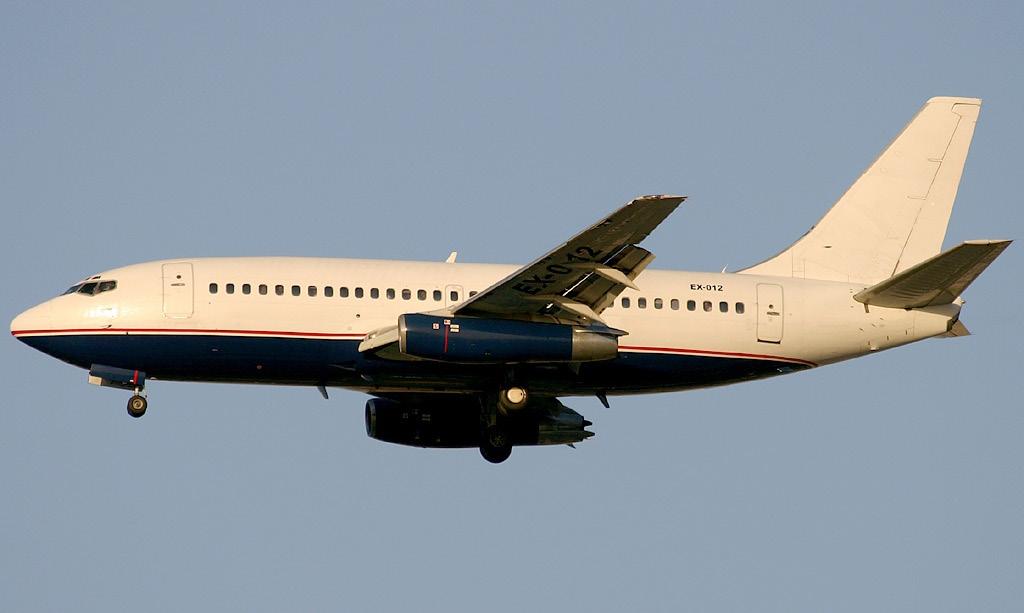
14 FlightCom: April 2024
NEWS
A Cameroon Airlines Boeing 737-219-Adv.
HYDROGEN POWERED PLANE TESTED
WORLD’S LARGEST liquid hydrogen-powered aircraft, using a 1 MW fuel cell engine, has been tested.
The ground test lasted 1h45 and simulated flight of a regional airline, paving the way for carbon-free flights in the future.
In 2023, Universal Hydrogen achieved a world first by powering a 40-seater flight fuelled by hydrogen. Lightning McClean, its converted Dash-8 aircraft, flew for 15 minutes. It reached an altitude of 3,500 feet, and the company is confident that it can fly up to 460 miles (740 km) using this technology.
A Dash-8 can seat 56 passengers when powered using fossil fuel but has to let go of 16 paying passengers to go greener, something that airlines will have difficulty with.
Universal Hydrogen has been working on a liquid hydrogen system to fuel a higher energy powertrain that aircraft like Dash-8 or ATR-72 can use for their regional flights.
The system is about the size of an air freight container. It features a leak detection system and vents for safety reasons. A quick-connect system allows the module to be installed on the aircraft and released when empty.

FlightCom: April 2024 15
NEWS
The 1 MW hydrogen engine installed on a Dash 8.
ASCA’S MPUMI MPOFU: READY FOR TAKE-OFF
Ms Mpumi Mpofu has occupied the hot seat as Chief Executive of ACSA, the Airports Company of South Africa for a tumultuous past four years.

16 FlightCom: April 2024
ASCA
GUY LEITCH
ACSA's CEO, Ms Mpumi Mpofu. - Image ACSA.
Mpofu has a post graduate degree in town planning from Coventry University and brings extensive experience to her role as head of ACSA, from over 25 years senior management in transport, local government and infrastructure development.
Mpofu’s first key exposure to airport management was in 2010, the year South Africa hosted the FIFA Soccer World Cup, for which Mpofu headed up ACSA’s development and redevelopment programme.
She has also been instrumental in the development of South Africa’s Airlift Strategy which aims to apply a holistic approach to global aviation in support of improved South African air connectivity.
has managed to maintain a benign status with the users for both ACSA and ATNS.
For 2023 a 3.1% tariff increase was approved by the regulator. Mpofu says that ACSA has been looking to maintain a 50:50 split between aeronautical and non-aeronautical revenue, but says the constraints on the two revenue streams are largely interdependent, because non-aeronautical revenue is driven by aeronautical activity.
strong criticism from bodies such as IATA
As a monopoly, ACSA aeronautical pricing is determined from a series of ‘permissions’ negotiated with government and the airline users. Despite strong criticism from bodies such as IATA, the government
Mpofu accepted the challenge of being CEO of ACSA at the beginning of the Covid-19 pandemic. A key objective has been to rebuild ACSA’s balance sheet and income statement. Under her leadership, ACSA reported an improvement in earnings to R2-billion for the financial year ended March 31, 2023, from R342-million in the 2022 financial year. Revenue of R6-billion for 2023 was up by 55% compared with R3.9-billion posted for the prior financial year. As a key performance indicator of her management, ACSA

FlightCom: April 2024 17
The new ACSA head office at OR Tambo - is short of tenants as the SACAA pulled out during Covid-19.
has tightly controlled operating expenditure, which only increased by 10% to R3.5-billion.
However, the company is not out the woods yet, as it reported a loss for both 2022 and 2023. Mpofu says, “Our profitability has been impacted by high credit losses on trade receivables and fair value losses on investment properties, resulting in a 2023 after-tax loss of R142-million, which is a significant improvement on the R1-billion loss of the previous year. The results reflect the group’s steady trajectory towards recovery and a move closer to profitability, following the turbulent trading conditions brought on by the Covid-19 pandemic.”
Mpofu is confident ACSA will return to profits for 2024, thanks to the company’s Recover and Sustain Strategy, as well as the implementation of a revised financial plan. She says that, to ensure this profitability, ACSA is focusing on operational efficiency, my making full use of its R30-billion asset base, plus its diversified revenue streams, and by growing the business through new commercial initiatives. She says that all ACSA facilities that were mothballed during Covid-19 have now been brought back to full operations.
With ACSA now back on a stable financial footing, and hopefully profitable for 2024, it is moving back into a growth phase. IATA predicts that passenger traffic in Southern Africa will only fully recover to pre-pandemic levels in 2025 or 2026. However, ACSA’s hub airports remain among the busiest on the continent.
To cater for the expected take-off in growth, R21 billion has been allocated to capex for airport infrastructure development at Cape Town International Airport (CPT) and OR Tambo International Airport (ORT) over the next five years. This is ACSA’s largest capital investment since the 2010 FIFA World Cup.
the company is not out the woods yet
ORT is the gateway to Southern Africa and will receive upgrades to its passenger and cargo facilities. Noteworthy is the long-awaited Mid-field Cargo Terminal, to be built between runways 03 Left and 03 Right. This will be followed by a Mid-field Passenger Terminal which may offer the low cost carriers cheaper power-in, power-out, ground movements.
As the passenger numbers have rebounded, nonaeronautical revenue has shown a strong recovery, increasing by 46% year-on-year to R3.1-billion for 2023. The bulk of this income, R982-million, was derived from property rentals and the balance, R848million, from retail activities.
Mpofu adds that, going forward, ACSA will efficiently manage its investment property portfolio, but to divorce non-aeronautical revenue completely from aeronautical revenue is impossible, because this portfolio contains retail properties which are highly dependent on the footprint of passengers at the airports.
Mpofu says that OR Tambo will also receive six new gates, while the retail, seating, and lounge areas will also receive uplifts. Additionally, ACSA will add a new mezzanine level to improve passenger circulation and seating capacity.
Speaking on the sidelines of the Board of Airline Representatives of South Africa (BARSA) 2024 conference, Mpofu said that Cape Town Airport will benefit from large investment in its terminals and runway. She said that ACSA is prioritising the R7 billion runway realignment project, “which will enable a 60% increase in flights, both in and out the airport.”
Mpofu says that in December 2023, Cape Town Airport broke its pre-Covid record for international traffic with over 317,000 passengers. Cape Town’s domestic arrivals terminal will be expanded to increase
18 FlightCom: April 2024
ASCA
the meet and greet area, baggage claim area, domestic departures lounge, retail spaces, and ablution facilities. The airport will also receive an additional baggage carousel, three new contact gates, and fixed boarding bridges.
ACSA’s smaller airports are also in line to benefit from the large capex programme. South Africa’s third-busiest airport, Durban’s King Shaka, will see the construction of a new hotel and, despite being the newest of the airports, further terminal expansion is expected within five years.
East London’s King Phalo Airport will get an expansion of its departure lounge and the upgrading of retail options plus the addition of offices and lounge space on the first floor, plus relocation of the security checkpoint and enhancement of the ablution facilities.
Port Elizabeth (now named Gqeberha) with its Chief Dawid Stuurman Airport and nearby George Airport are also slated to undergo terminal expansion over the next two years.
in-depth investigation to interrogate the entire baggage handling system. We have eliminated blind spots in the camera system, so the problem then relates primarily to human factors such as a high turnover of staff,” she says. “I’m pleased to be able to report that we have seen the numbers decrease significantly. In 2019 the baggage theft numbers were much higher than they are now.”
ACSA has had a difficult past year with ground handling companies, which have experienced several mergers and joint ventures which made it difficult to maintain standards with the key service providers that they out-source to. Mpofu says, “The reality is that we operate in an ecosystem that has many role players. Our responsibility is just the coordination of these various players. Sometimes they do not conform as much as we would like to them to.”
improve passenger circulation and seating capacity
Meanwhile, ACSA has consistently won awards for being one of the best airport management companies in Africa, which is a position Mpofu says she wants to maintain. “In 30 years ACSA has transformed small airport terminal buildings to world class airport facilities through solid financial footing and a balance sheet that allowed for investors to trust us with their monies. We are among the best-run airports companies on the African continent and State-owned entities in South Africa and we have worked out a path to ensure a predictable growth and profitability trajectory,” Mpofu concludes.
Key concerns remain the reduction of theft from baggage handling and the safety and security environment around the airports. “We conducted an
A further key challenge she is focusing on is relationships with the communities that surround the airports. “As an airport, we have a primary responsibility to cater to those communities. We even prioritise them in terms of job creation by making sure that they get any jobs offers before any outsiders to the community. In Cape Town we have a lot of informal settlements surrounding the airport. We have a programme where we do a whole lot of work within those communities, such as providing support for schools and crèches, and we do community service projects such as gardens for job creation. This is in order to mitigate against a potentially hostile situation against the airport.”
FlightCom: April 2024 19
TO PARIS FOR LUNCH
One morning I arrived back at Lanseria from a two day charter to a dreary Northern Cape iron mine. Entering the terminal, I removed my wings and epaulets, thrust them into my flight bag, and headed for the restaurant.
THERE, IN FULL VERBAL FLOW
, was the American, Ben Drew, AKA Captain Fantastic, expounding on the tribulations of operating an aging DC-3 Dakota fleet for minimal profit.
He waved me to a seat and continued his oration to a couple of his off-duty pilots.
I ordered a Coke, then observed the silver haired American and marvelled at his luck.
When flying a P51 Mustang during World War 2, he had descended below cloud, somewhere in Europe, on his way back to his UK base, when he came upon an enemy airfield just as two jet powered Messerschmitt Me 262s (nicknamed Schwalb: ‘Swallow’ in fighter versions, or Sturmvogel: ‘Storm Bird’ fighter bombers) were lifting off the runway, and climbing away ahead of him.
This earned him a DFC, mention in dispatches and probably a lifetime supply of free hotdogs and hamburgers.
At the drop of a hat, thirty plus years later he would hand you a large signed black and white photograph of himself in USAF uniform. And, if you were a special friend, he’d go out to his car and fetch you a Revell plastic model kit of the ‘Drew P51 Mustang.’
I heard the term Rooinek
I sipped my Coke as he turned to me and said, ‘Hey Jeff, did you hear that they want to move three Daks down here from Europe. But they can’t actually buy them and deliver them themselves because of Apartheid sanctions.’
‘Who?’ I asked.
He armed his wing cannons, or whatever fighter pilots did back then, and as the Messerschmitts were at their most vulnerable, clawing for altitude and slowly gaining speed, he came up behind them and shot them down, one after the other.
‘The SAAF’ he said. ‘They are some of the youngest DC-3s in the world. They want to convert them to turbine engines and then use them to replace the Shackletons for maritime surveillance.’
‘Interesting’, I said. ‘Are you arranging to fetch them?’
‘No. I can’t do that in my position. As a foreigner
20 FlightCom: April 2024
AFRICA FLYING
JEFFERY KEMPSON
living here, I don’t want to do anything controversial to upset my pension, or South African residence permit, if things don’t work out.’
‘Who is the contact person in Europe, selling the aircraft?’ ‘
I’m not sure yet, but an Armscor team have already inspected the aircraft and said they are OK, and they want them delivered ASAP.’
I thanked him for the info and the conversation drifted to weekend braai options.
The following Monday I phoned Armscor, introduced myself as a patriotic South African pilot and not knowing anyone there, I asked to speak to the person in charge of aircraft procurement.
After much phone line switching, I was asked my business in Afrikaans, which, having mostly been schooled in Kenya and Rhodesia, was incomprehensible to me.
Eventually, a gruff fellow told me that I could meet him at Armscor in Pretoria at eleven o clock the following morning.
I attended the meeting in a large office with several people present. He asked for my credentials, then told
me no such requirement existed, and where had I heard this rumour. Sensing their hostility I said, ‘I heard about it in the Lanseria Airport bar. Everyone there was talking about it.’
This sent them into a flurry of Afrikaans, and I was told once more that the requirement did not exist. A chap in a white naval uniform took my arm and quite firmly shepherded me to the street door.
Annoyed, I turned to the fellow and said, ‘Tell me Admiral, is the tide out? You’re a long way from the sea.’ He muttered an expletive and I heard the term Rooinek, as I was thrust onto the street.
A couple of days later some of my aircraft sales contacts came up with the name of the European seller, Robert Koraskinsky. It was someone I’d heard of previously. I phoned him, introduced myself, told him I was for real and asked him to telex the aircraft specs and prices, using the Lanseria Airport telex machine, and to attach any spare parts lists that may be included. The aircraft were at Munich Airport.
A few days later I phoned him back and told him that I had found a financial backer and a willing insurer.
Then I told him about my Pretoria Armscor debacle, He laughed and said, ‘I can’t deal with them. I don’t know what their problem is, but I do my South African

FlightCom: April 2024 21
Ben Drew shooting down 1 of 2 Me 262s.
deals through their branch on the top floor at the SA Embassy in Paris. You know your air force has Mirage fighters, and Alouette helicopter equipment. So the French channel is efficient. The guys there are also friendly and helpful. So you need to get the contract from them.’
‘How do I do that? They don’t know me.’
He suggested that I fly Lufthansa to Frankfurt, meet him there, and we carry on to Paris with Air France. He would brief me on the way, and a diplomatic car would collect us at the airport and take us to the embassy.
Then he added that he had a preferential frequent flyer arrangement with Lufthansa, so would be able to extend the discount to me, his business associate.
A week later I boarded a Lufthansa B747 at Jan Smuts and flew to Frankfurt. Once through Immigration I had some time to kill while awaiting the flight from Munich carrying Robert.
Walking around the terminal I came upon a sex shop, unknown in South Africa at that time. I went inside, and a female voice said; ‘Tim, I told you I saw Jeff on our flight.’
When she asked what I was doing in Frankfurt I muttered darkly that I was on a need to know, clandestine mission.
Knowing that my return ticket would bring me back later in the day, I made a mental note as to where some of the more desirable, unavailable items in SA were kept.

he came up behind and shot them down
Then we had coffee, and my man from Munich arrived. Shortly after that we boarded an Air France-KLM DC-9 for Paris.
On the way Robert told me what the deal was, then also mentioned to me that he used to be an aircraft engineer at Rand Airport, Germiston, and had tried to join SAA, but they wouldn’t have him because he could not speak Afrikaans. Now, based in Munich, he mostly dealt in airliner spares to European carriers.
He told me with glee that the previous week he had
been in Madrid, where Iberia Airlines desperately needed a rudder for a DC-8 63 that had been damaged when pushed into a hangar. Iberia knew that Air Spain, which was close to liquidation, and based at the other side of the airport had a spare serviceable rudder for sale, but that it carried the wrong part number. So he had brought along a pocketful of static discharge wicks, borrowed a spanner, and attached the wicks to the Air Spain rudder. He then transported it across the airport to Iberian and sold it to them for a considerable profit. The discharge wicks had made it the correct part, and the aircraft was back in service the next afternoon.
I got the message. I was dealing with a very sharp character indeed. We discussed his three DC-3s, which were actually ex-military C-47s that had been extracted from Czechoslovakia, and had now been standing in the Munich weather for a couple of years.
In Paris a large black consular car, with a small furled South African Flag, transported us to the embassy.
22 FlightCom: April 2024
JEFFERY KEMPSON
The South African Embassy in Paris - where the Dak deal was done.

It was a fine March spring day, and once seated in an upstairs office, I used maps and calculations to show which routes I would use to deliver the aircraft, which registrations the aircraft would carry, and details of the requisite paperwork for certificates of registration, airworthiness, and radio licences etc.
I had done my homework well, and the embassy folk were impressed. The head honcho said, ‘I can see you know what you’re doing, so the secretary will type out your contract. And, while she’s doing that, let’s go for lunch.’
We dined on a sunny Parisian pavement, starting with Coquilles St Jacques, followed by other delicious, unpronounceable French fare.
I told him that I understood this.
After coffee we were dropped back at Charles de Gaulle, and we both flew Air France-KLM back to Frankfurt, where Robert connected to Munich. He said; ‘That went very well. I’ll see you in a couple of weeks when you buy the first aircraft, then regularly after that as you collect and pay for each of the others as you take them away.’
the youngest DC-3s in the world
Two hours later, we went back upstairs and I signed my contract and copy, and placed mine in my briefcase.
The head honcho then told me that once the operation was underway, it was unlikely that the SA government would be able to render any assistance because of the political conditions.
Then he said, ‘Do you know what all the laughter and jocular Afrikaans talk was about when that guy was on the scrambled phone line to Armscor in Pretoria?’
‘No.”
‘They told the Pretoria guys that they had given you the contract to buy and deliver the Daks, and that they must assist you in every way possible, as they were now dealing with professionals.’
I laughed, but hoped the obvious enmity between the different departments wouldn’t hinder my future operation.
FlightCom: April 2024 23
The SAAF needed young DC-3 airframes to convert to martime reconnaisance 'Dakeltons'.

I went into the Frankfurt sex shop and bought three pairs of Ben Wa balls for adventurous lady friends, stuffed them into my bag, cleared immigration and boarded the Lufthansa B747 for Joburg. Perhaps it was the same aircraft that had brought me there that morning.
On arrival at Jan Smuts, customs opened my bag and an official extracted the Ben Wa balls. He unboxed one set, and wondered at the weight of the plastic, and why the balls were of different sizes and connected by a short thread of some unknown material.
‘Why are they so heavy, and also different sizes?’ he asked me.
I said, ‘I think girls put them in their hair when they want to make a pony-tail.’
‘Girls are funny, hey?’ he replied.
I agreed. Then he put them back in the box which I replaced in my case.
I gave the Ben Was to three feisty ladies I knew. They later expressed satisfaction at my gift selection.
However, one morning when Lanseria was thronged with charter passengers and pilots waiting for slot times to board their aircraft, one of the Ben Wa recipient charter queens rushed along the open upstairs passage. Just then an item reminiscent of a tiny Bolas flew across the concourse, and bounced into the reception area. No one knew what it was. It was picked up and placed into a plastic filing tray.
The embarrassed owner came sheepishly down the stairs and blushing, pocketed the item and whispered to me, ‘I don’t know what happened. It’s never happened before. I keep them in the office fridge.’
I thought about the physics involved, and said, ‘Well, it’s too cold for them there. You damn near concussed Sol Kerzner.’
I am occasionally still amused to tell people that I once flew from Johannesburg to Paris and back, for lunch.
24 FlightCom: April 2024
KEMPSON
For those who wondered - Ben Wa Balls.
JEFFERY
KENYA - SAA PARTNERSHIP DELAY
KENYA AIRWAYS AND South African Airways announced the establishment of a highly anticipated Pan-African Airline Group three years ago.
A strategic partnership was initially signed in South Africa in November 2021, witnessed by President Cyril Ramaphosa and former President of Kenya Uhuru Kenyatta.
The collaboration aims to consolidate assets, enhancing connectivity for both passenger traffic and cargo, and providing passengers with more affordable fares and diverse flying route options.
The vague claims that SAA and Kenyan Airways (KQ) were going to establish of a Pan-African Airline, have been delayed as the two carriers need money.
Last year, Kenya Airways disclosed the initiation of the second phase of the partnership framework between the two airlines, a crucial step that would pave the way for the formation of the new aviation group.
Despite the persistence of the plans, the timeline has been adjusted due to the ongoing recapitalisation efforts by both carriers.
KQ is working to restructure its balance sheet, leveraging recent improved performance, which included reporting a $6.79 million operating profit in the first half of 2023—its first in six years, marking a 120 percent improvement compared to the same period in 2022.

FlightCom: April 2024 25
NEWS
The Kenyan and South African presidents announce the partnership.
PART 2
SACRIFICE
John continues his anecdotes about the sacrifices he has had to make in the course of his helicopter bush flying career.
MY BASE WAS THE administrative centre of a medium sized reserve. It was more or less in the middle of the southern half of the park, and its only asset was the small waterhole in front of the main building which attracted an endless array of game, day and night.
It had been an old mission station, build in 1927. It could have been a beautiful old building with high ornate ceilings, wooden floors and wooden sash windows. It’s a double story with offices as well as a kitchen downstairs and four bedrooms upstairs. Huge colonial verandas all around the front. The building was rotting, smeared in baboon shit and mostly without water and power.
At sunrise I’m at the helicopter, removing covers and tie downs, my mind filled with my mental pre-flight. There’s a lot to be done in the few hours of cool air before the oppressive heat takes over. Everyone is in place, expectant.
My last item of pre-flight ritual is to adjust my back cushion, adjust my safety harness, release control frictions and settle into my flying position. That moment is now, to push life into my aluminium bird. As I flick the master battery switch forward there is nothing, just a huge anti-climatic silence of nothingness. A dead voltage relay. There is nothing more to do, close up, head for the abode and play with my toes until the sparky arrives.
This reserve has spiralled out of control
The province was in the throes of a terrible drought. The reserve had run out of water and every day from sunrise to sunset a water truck had to drive around providing water to the lodges and waterholes for game. The wind did not stop howling, so much so that you felt it pounding the building. Whistling, rattling sounds emanated from every window and door. Every day the sun beat down onto the parched land heating to it to 40 degrees C. There was not a blade of grass anywhere and no tree carried even the smallest leaf. The animals were starving to death and many would never make it to summer.
This reserve, as have so many, has spiralled out of control. It was first proclaimed in 1990 as land that was too barren, dry and infertile for any other use than game. It started out as a model conservation story with an operation lasting three years, reintroducing wildlife back into the area.
It was dynamic, black rhino, elephant, lions, buffalo all reintroduced after an absence of over 200 years. Soon after the reintroduction, a few concessions were sold for private tourist game lodges to be built, opening the area up for commercial tourism. The lodges want their tourists to see lions and elephant. Since management
26 FlightCom: April 2024
HELICOPTERS JOHN BASSI
A versatile office that has many uses and no two days are the same.

has collapsed, both species dominate the park, lions have eaten all the plains game and elephants have reduced the forests of trees to a Hiroshima look alike. Now the tail wags the dog.
It’s after 1.00 am; the light from the full moon is casting shadows onto the lawn making it easy to see the trees and rocks a hundred meters away. I flew into the park just after mid-day, hoping to unpack and settle in, ready for the following day’s flying.
Occasionally a confused red eyed dove calls, no doubt also woken by the bright moonlight.
doubt I have ever seen any form of maintenance during its 50 year life.
We are in a house at the end of a pot holed, former tar track. The last house, right up against the remains of a game fence in a long row dotted along a small river. There is a small bushy hill behind the house which delays the sun’s rays in the early morning, making it confusing because it gives the illusion of an overcast day, tempting me to sleep in.
it’s impossible to find sleep
There’s no wind. It’s airless and apart from the occasional yapping dog somewhere in the staff village, there’s not a sound.
I am wide awake, tossing and turning and feeling agitated since I woke up from a weird dream. Now it’s impossible to find sleep.
I am staying in the old staff section at a well-known reserve, close to the tourist gate and administrative centre for the reserve. The architecture is all of those typical government designs build in the 70s and I
The house used to belong to an Operations Manager, a really kind, good natured, dark haired, rotund and gentle person. Always sucking onto his pipe, an old school man, from the time when things worked.
He lived alone in the house for the last two years leading up to his retirement since his sickly wife moved out to live in a ‘healthier’ climate at the sea. She was a chain smoker, dangerously overweight and slowly dying from clogged lungs. I remember them as a sad couple. Their son committed suicide at 17, put his father’s pistol to his head. This event ruined their lives.
FlightCom: April 2024 27
HELICOPTERS

I often wondered if the couple ever talked to each other?
His wife passed away yesterday, I think it was a blessing. I feel for them.
I say he lived alone, but he didn’t really, because he shared the house with a pack of yappy poodles, each with rotting teeth and breaths that reminded you of something dead. He also had a pig.
The pig’s home was adjacent to the kitchen, a scullery type room with an open door to the outside. This pig was as big as a small hippo and seemed to be the sole talking point. “You have to come and say hello to Pig and bring her some peppermints,” he would say to anyone visiting.
I was invited over for a braai as a sort of farewell gesture. This coincided with the annual helicopter game census. Sadly the last one he would participate in.
It was nerve wracking to walk into the garden in darkness for fear of colliding into the pig. The pig was black and silently waited in the shadows. Her favourite thing was to chew your toes.
Maybe in my next life?
The house was filled to capacity with a lifetime of gathered stuff, mostly historic. He spent months carting all this stuff to various charities and slowly waded through it all until he managed to find the useful stuff which followed him to his coastal retreat.
Prior to departing, it was pretty shocking to all of us that he decided to have his cherished pig “put down” just before he left home forever, since it would have been impossible to translocate her to the little cottage by the sea. Pig, along with an assortment of other once significant pets, now rests at the bottom of this moonlit garden, remembered by a small slab of grey slate, each with an inscription, a name and a date, there for anyone who cares to stop and look.
Dawn arrived with the cackling, whistling and screeching of a multitude of birds. Fresh cool morning air into which I would soon be set free. That calm, thick and stable air that allows an aircraft to fly effortlessly.
The team would be ready to go by 06:00 and timing was paramount to avoid a snow ball effect on four other teams needing deployment. Full of expectation and with my mind already far ahead of the present, I gasped as I noticed blackened tele-temps and a bluish hot metal sheen on a drive shaft coupling. That
28 FlightCom: April 2024
Flying is about freedom, teamwork, sharing and doing fun stuff.
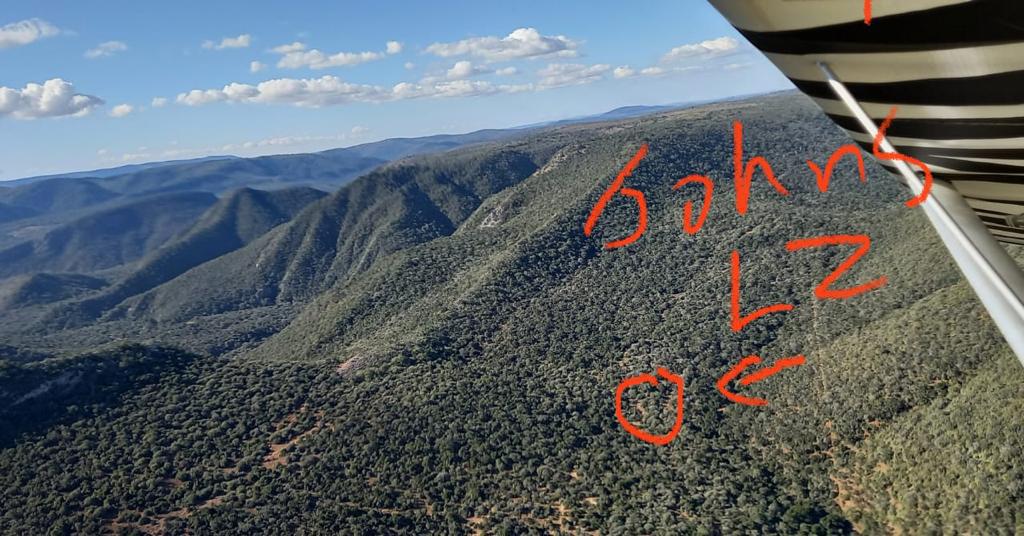
nauseating feeling that stops the world spinning as you ponder the implications. Again, close up the hatches and put the covers on, return to the abode and play with your toes until further notice.
When I arrived at the house almost three weeks ago, it seemed a little odd to be coming in to my old friend’s territory and his absence hung heavy in the air.
Like all buildings throughout the government-run provincial parks, the place had become disgusting. The first thing that greeted was that putrid stench of death. In the time of glory there had also lived a beautiful Amazon green parrot. Like Pig, the parrot had the freedom of the house. Hygiene had become non-existent since everyone had moved out and between the piles of uneaten Epol left over from the pig, there was a mass of uneaten bird seed strewn about, all of which had never been cleaned up after vacating. This was rat heaven.
control in the days of 43 degree C temperatures and eventually it was too much. It took the technical staff two days to strip the kitchen – and finally remove the rotting rat.
The layers of pig dirt on the walls of the scullery are there forever as another reminder of the time when there had been life. The ceiling in the kitchen is collapsing and has become home to a multitude of bats. Their bat urine smell and little black rice like droppings greet me every morning. The drains are half blocked and I sometimes wonder which smell is worse.
slowly dying from clogged lungs
As is the way, the house had become home. For now it provided me with a feeling of security at the end of each day. I could come back to the few familiar things that I always carry on bush trips: my big blue Woollies mug for tea, some DVDs and my own duvet, neatly in the corner in my room.
It took me a full day, armed with a variety of chemicals, scrubbing, washing and cleaning everything before the place was remotely habitable. But the rotting rat was nowhere to be seen. For days I could not even make tea in the kitchen because I would choke and gag the moment, I set foot in the house. The stench got out of
The house is actually paradise compared to what awaits me.
FlightCom: April 2024 29


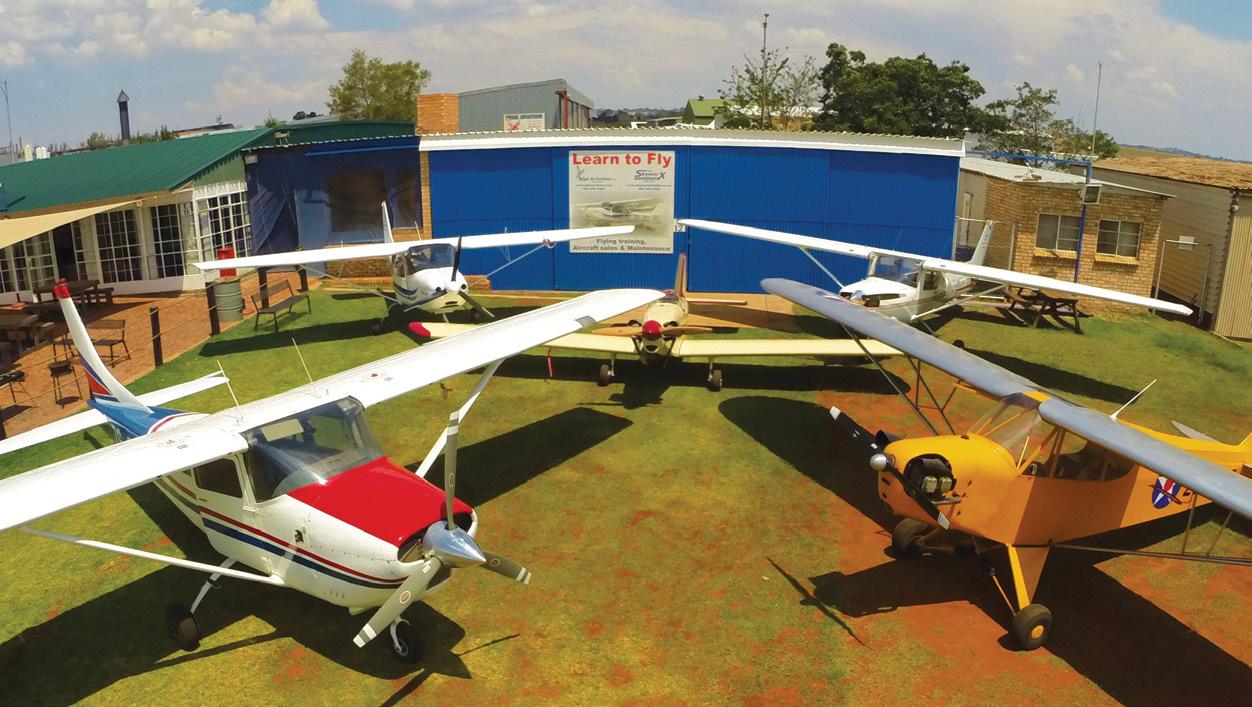


30 FlightCom: April 2024 www.alpiaviation.co.za TurbineGS Training Ab-Initio Training Single Engined Multi Engine Night Rating IF Rating Instructors Rating Simulator Training Conversions CPL Theory CPL Practical Helicopter Training Tail Draggers Pilot Shop Conferences Hire and Fly Charters Aerobatic Training Beginners/Advanced Gyro-Copter Training Microlights & Ferry Flights Accommodadtion Aircraft/Heli Sales Club Facilities Drones NAME OF SCHOOL CODE TEL NO FAX NO BEAUFORT WEST AIFA (044) 272 5547 info@aifa.co.za j j j j j j j j j j j BRAKPAN BENONI FABB Titanium Air (011) 914-5810 083-292-0978 j j j j DURBAN Starlite Aviation Training Academy (031) 571-6600 www.starliteaviation.com j j j j j j j j j j j j j j j j j j j j j j j EAST LONDON Border Aviation Club (043) 736-6181 086-516-8475 j j j j j j j j j j j j j j j GEORGE AIRPORT AIFA (044) 272 5547 info@aifa.co.za j j j j j j j j j j j Savannah Helicopter Training (044) 876-0096 j j j j j j j j j j j GRAND CENTRAL Superior Pilot Services (011) 805-0605 805-0604 j j j j j j j j j j j j j j j j j KRUGERSDORP Alpi Flight Academy (082) 556-3592 086-605-8948 j j j j j j j j j j j j j j j j j LANSERIA AIRPORT / RANDBURG Aeronav Academy (011) 701-3862 701-3873 j j j j j j j j j j j j j j CSA Aviation (011) 701-3835 www.cirrussa.co.za j j j j j j j j j j j j j j Skyhawk Aviation (011) 701-2622 701-2623 j j j j j j j j j j j j j j j j MOSSEL BAY Starlite Aviation Training Academy (044) 692-0006 www.starliteaviation.com j j j j j j j j j j j j j j j j j j j j j j j PANORAMA Johannesburg Flying Academy (064) 756 6356 j j j j j j j j j j j j j PORT ELIZABETH Algoa Flying Club (041) 581-3274 086-461-7067 j j j j j j j j j j j j j j j RAND AIRPORT Johannesburg School of Flying (011) 827 9827 info@jsf.co.za j j j j j j j j j j j j j j j U Fly Training Academy (011) 824-0680 390-1738 j j j j j j j j j j j j j j j VEREENIGING AIRPORT Bird Aviation (016) 556-1007 info@birdaviation.co.za j j j j j j j j j j j j j j j j j WINDHOEK - EROS AIRPORT Desert Air (PTY) LTD +264 61 228101 +264 61 254 345 j j j j j j j j j j j WONDERBOOM AIRPORT / AEROPARK / RHINO PARK - PRETORIA Blue Chip Flight School (012) 543-3050 543-1826 j j j j j j j j j j j j j j j j j j j Loutzavia (012) 567-6775 543-1519 j j j j j j j j j j j j j j j j j j j Legend Sky (083) 860-5225 086-600-7285 j j j j j j j j j j j j j j j j j Powered Flight Training (078) 460-1231 086-666-2077 j j j j j j j j j j j j j j j j j Vortx Aviation Training (072) 480-0359 086-524-0949 j j j j j j j j j j j j j FROM NPL THROUGH TO CPL www.balloon.co.za Do it in style! Learn to Fly with Us




CHARTER DIRECTORY < 20 pax > 20 pax Biz-Jets V.I.P Long-Range Freight Helicopter Special Events Safari Charters Contracts Aircraft Sales Surveys Maintenance Aerial Photography Aircraft Leasing Security Based (armed) Line Inspections Lodge Transfers Export Docs & Clearing Hangarage Dangerous Goods NAME OF CHARTER CODE TEL NO FAX NO BRAKPAN FABB Titanium Air (011) 914 5810 083 292 0978 j j j j j CAPE TOWN ExecuJet South Africa (021) 934 5764 934 2087 j j j j j j j j j j j j j j j j Streamline Air Charter (011) 395 1195/8 j j j j j j j j DURBAN KZN Aviation (031) 564 6215 564 6222 j j j j j j j j j j j GRAND CENTRAL Pambele Aviation (011) 805-0652/82 805-0649 Dreams Treasury | Working Capital | Asset Management | Wealth
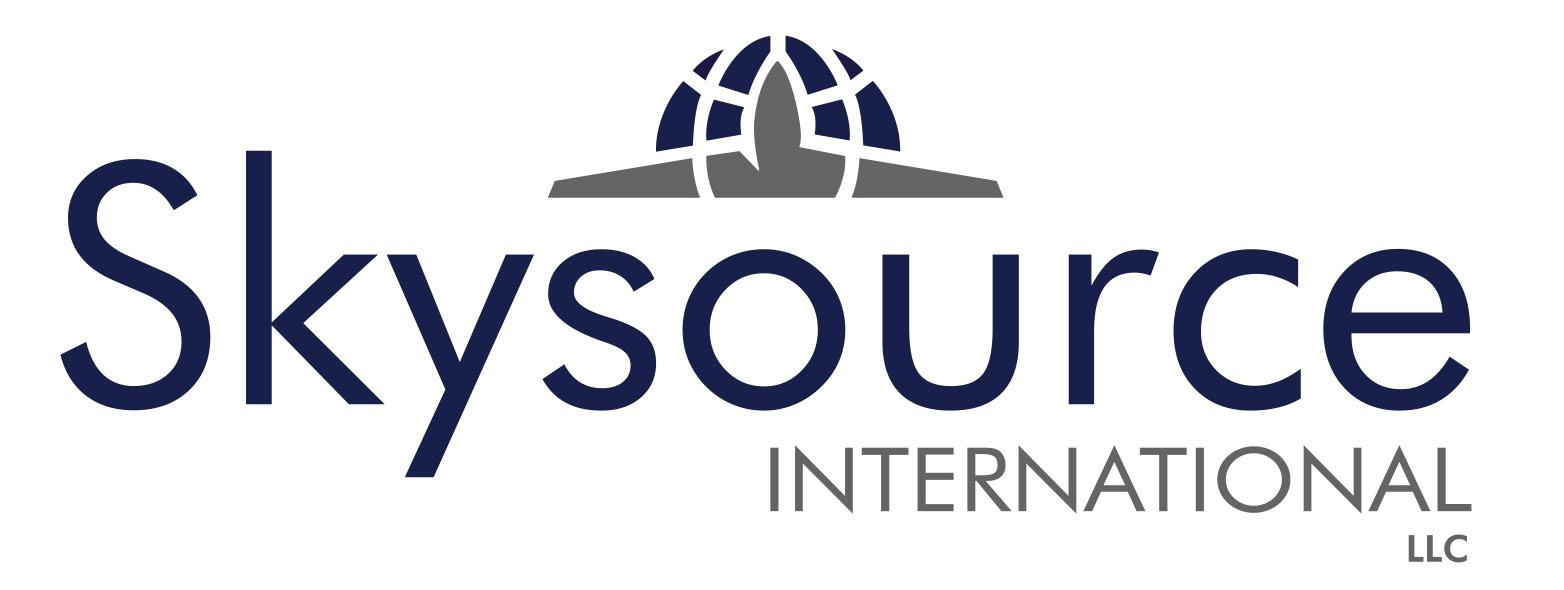
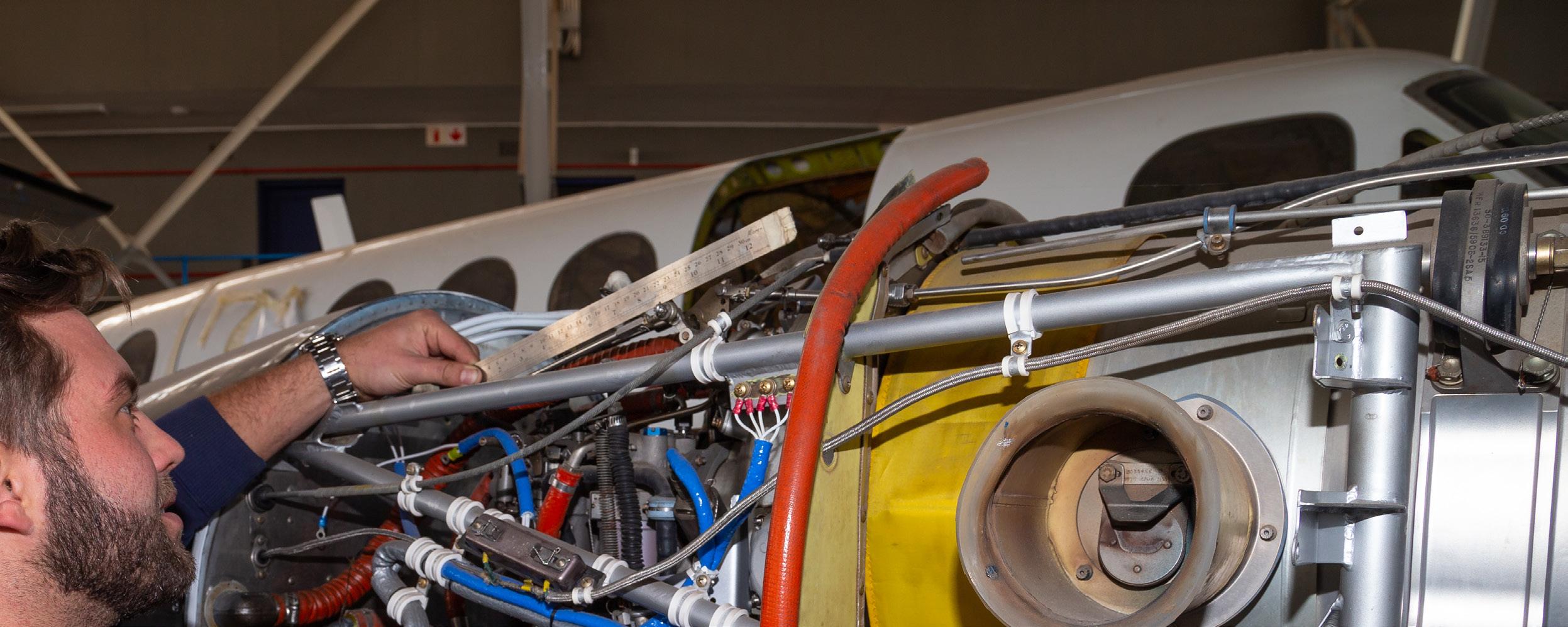
Fixed Wing Helicopter Avionics Piston Engines Turbine Engines Propellers Weight / Balance Paint Interior Sheet Metal Rebuilds Overhauls Electrics NDT Testing Refurbishments Structural Repairs Inspections NTCA Aircraft Seat Belts Instruments NAME OF AMO CODE TEL NO FAX NO CAPE TOWN Erwin Electrical Solutions t/a AES (021) 934 5373 j j j j j j j j j ExecuJet South Africa (021) 934 5764 934 2087 j j j j j j j j j j j j j j j Ultimax Aviation (Pty) Ltd (072) 878 8786 j j j j j j j j j j j j j DURBAN BAC Aviation (035) 797 3610 797 5341 j j j j j j j j j j GRAND CENTRAL AIRPORT Astwood Aircraft Electrical (011) 315 9605 315 0094 j Superior Rotorworx (076) 595 2120 j j j j j j j j j j j j j j j j j KRUGERSDORP Skyworx Aviation (082) 346 0150 086 697 9096 j j j j j j j j j j j LANSERIA AIRPORT Erwin Electrical Solutions t/a AES (021) 934 5373 j j j j j j j j ExecuJet South Africa (011) 516 2300 011 659 1071 j j j j j j j j j j j j j j j Gem Air (082) 905 5760 011 701 2653 j j j j j j Guardian Air Maintenance (011) 701 3011 j j j j Lanseria Aircraft Interiors (011) 659 1962 j j j j j j Plane Maintenance Facility (011) 659 2204 pmf@myconnection.co.za j j j j j j j j j j j j j SkySource International SA (011) 900 4300 j j j j j j j j j j j j j j The Propeller Shop (011) 701 3114 086 543 7988 j Tynay Aviation (082) 088 6663 011 659 1157/8 j j j j j j j j CAPE WINELANDS AIRPORT Diepkloof Aircraft Maintenance (083) 454 6366 j j j j j j j j j j j j NELSPRUIT Aircraft Maintenance International (013) 741 8221 082 787 0415 j j j j j j j j j j j j j Leading Edge Helicopters cc (013) 741 5582 741 8188 j j j j j j NEW TEMPE BLOEMFONTEIN Ferreira Aviation (051) 451 1682 451 1683 j j j j j j j j j j j OR TAMBO INTERNATIONAL AIRPORT Nevergreen Aircraft Industries (010) 003 3747 manager@nevergreen.co.za j j j Star Air Maintenance (011) 395 2201 973 4761 j j j j j j j j j RAND AIRPORT1 Aerospace Electroplating (011) 827 7535 827 9896 j j j j j j j j Aviation Rebuilders CC (011) 827 2491 lyn@aviationrebuilders.com j j j j j Clifton Electronics (011) 383 2024 086 689 5645 j j j Dynamic Propellers (082) 445 4496 086 548 2651 j j Skytrim (011) 827 6638 www.skytrim.co.za j j j j AMO LISTING AMO 1427 www.skysourcesa.com South Africa PTY Skysource International SA, Hangar 203, Lanseria International Airport
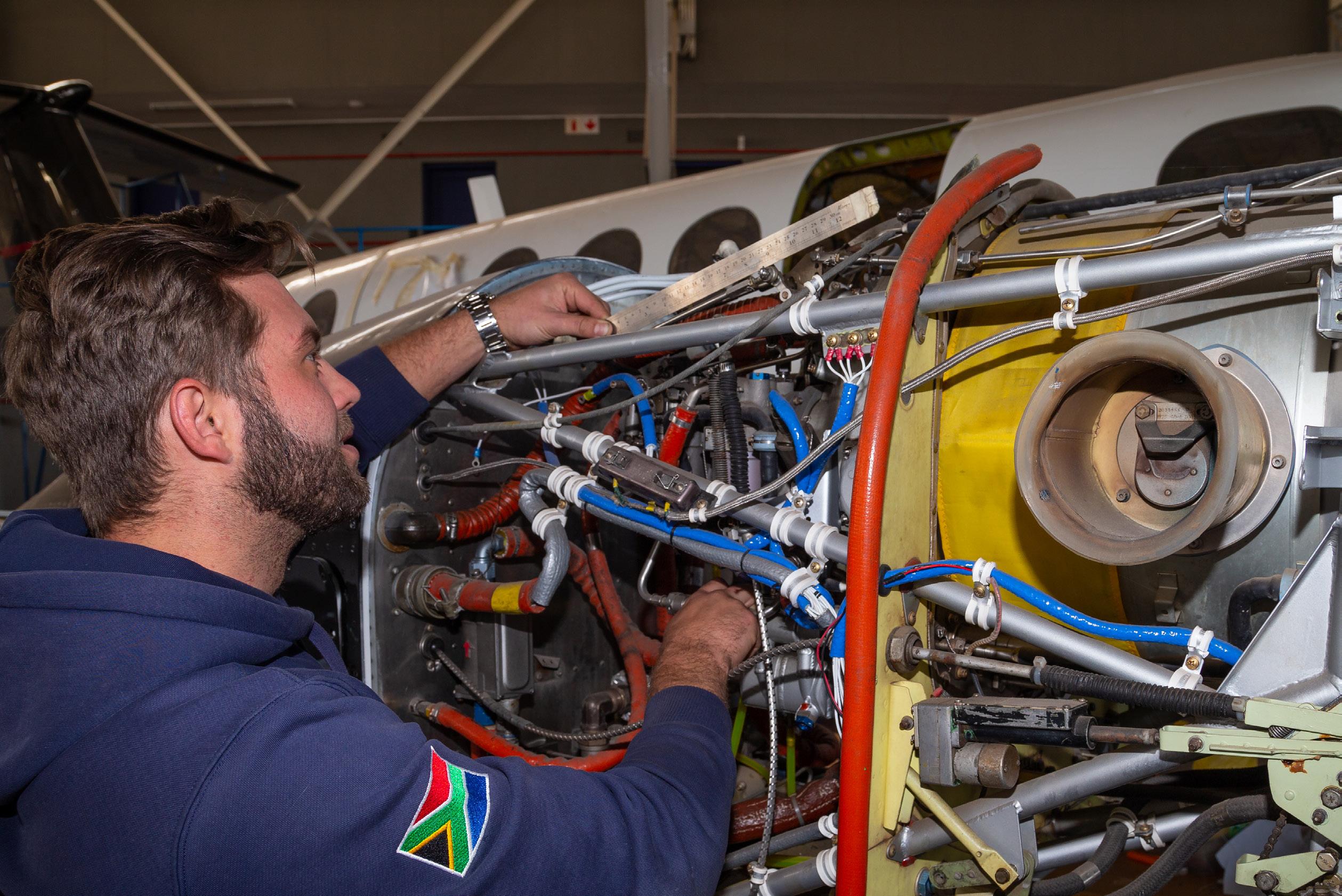

NAME OF AMO CODE TEL NO FAX NO Fixed Wing Helicopter Avionics Piston Engines Turbine Engines Propellers Weight / Balance Paint Interior Sheet Metal Rebuilds Overhauls Electrics NDT Testing Refurbishments Structural Repairs Inspections NTCA Aircraft Seat Belts Instruments Composite Manufacturing RAND AIRPORT CONTINUED Emperor Aviation (082) 497 1701 j j j j j j j j j j j j j j j FLYONICS (Pty) Ltd (082) 686 2374 michael@flyonics.co.za j j j Heli-Afrique cc (011) 827 8632 086 503 1870 j j j j j j j j j j SPRINGS AIRFIELD Legair Maintenance (083) 736 3969 086 508 6010 j j j j j j j j j j j j j j j j j WONDERBOOM AIRPORT - PRETORIA 208 Aviation 083 744 3412 j j j j j j Aerocore (012) 110 4033 082 565 2330 j j j Aircraft Maintenance @ Work Pty Ltd (012) 567 3443 j j j j j j j Aerotric (087) 802 1347 aerotric@aol.com j j j j j Aero Engineering & Powerplant (012) 543 0948 543 9447 j j AviSys Aviation Systems (083) 442 5884 086 618 6996 j j j j j Avtech (082) 749 9256 j j j j j j j APCO Pty Ltd (012) 543 0775 567 3630 j j j Breytech Aviation cc (012) 567 3500 086 643 0122 j j j j j j j j j j j j j j Propeller Centre cc (012) 567 1689 j j NIGERIA - MURTALA MUHAMMED INTERNATIONAL AIRPORT ExecuJet Aviation Nigeria Ltd +2341 295 5110 j j j j j j j j j j j j JOHANNESBURG F Gomes Upholsters (011) 614 2471 614 9806 j j j j j PRETORIA M&N Acoustics Services Pty (Ltd) (012) 689 2007 086 211 469 j j j j j j j j j j j AMO LISTING AIRCRAFT MAINTAINENANCE AND REFURBISHMENT QUALITY IS OUR PASSION CALL US NOW FOR ALL OF YOUR AVIATION NEEDS! info@skysourcesa.com +27 10 900 4300 • +27 72 036 3433 WE SPECIALIZE IN: Pilatus PC-12 Beechcraft 90 Series Beechcraft 200 Series Beechcraft 350 Series Beechcraft 1900D Series Cessna Caravan C208 Series Aircraft info@skysourcesa.com +27 10 900 4300 • +27 72 036 3433
BACKPAGE DIR ECT ORY
208 Aviation
Ben Esterhuizen +27 83 744 3412 ben@208aviation.co.za www.208aviation.com
A1A Flight Examiner (Loutzavia) Jannie Loutzis 012 567 6775 / 082 416 4069 jannie@loutzavia.co.za www.loutzavia.co.za
AES (Cape Town) Erwin Erasmus 082 494 3722 erwin@aeroelectrical.co.za www.aeroelectrical.co.za
AES (Johannesburg) Danie van Wyk 011 701 3200 office@aeroelectrical.co.za www.aeroelectrical.co.za
Aerocolour cc Alfred Maraun 082 775 9720 aeroeng@iafrica.com
Aero Engineering & PowerPlant Andre Labuschagne 012 543 0948 aerocolour@telkomsa.net
Aerokits Jean Crous 072 6716 240 aerokits99@gmail.com
Aeronav Academy Donald O’Connor 011 701 3862 info@aeronav.co.za www.aeronav.co.za
Aeronautical Aviation Clinton Carroll 011 659 1033 / 083 459 6279 clinton@aeronautical.co.za www.aeronautical.co.za
Aerospace Electroplating Oliver Trollope 011 827 7535 petasus@mweb.co.za
Aerotel Martin den Dunnen 087 6556 737 reservations@aerotel.co.za www.aerotel.co.za
Aerotric Richard Small 083 488 4535 aerotric@aol.com
Aviation Rebuilders cc Lyn Jones 011 827 2491 / 082 872 4117 lyn@aviationrebuilders.com www.aviationrebuilders.com
AVIC International Flight Academy (AIFA) Theo Erasmus 082 776 8883 rassie@aifa.co.za
Air 2000 (Pty) Ltd
Anne Gaines-Burrill 011 659 2449 - AH 082 770 2480 Fax 086 460 5501 air2000@global.co.za www.hunterssupport.com
Aircraft Finance Corporation & Leasing Jaco Pietersen +27 [0]82 672 2262 jaco@airfincorp.co.za Jason Seymour +27 [0]82 326 0147 jason@airfincorp.co.za www.airfincorp.co.za
Aircraft General Spares Eric or Hayley 084 587 6414 or 067 154 2147 eric@acgs.co.za or hayley@acgs.co.za www.acgs.co.za
Aircraft Maintenance International Pine Pienaar 083 305 0605 gm@aminternational.co.za
Aircraft Maintenance International Wonderboom Thomas Nel 082 444 7996 admin@aminternational.co.za
Air Line Pilots’ Association Sonia Ferreira 011 394 5310 alpagm@iafrica.com www.alpa.co.za
Airshift Aircraft Sales Eugene du Plessis 082 800 3094 eugene@airshift.co.za www.airshift.co.za
Alclad Sheetmetal Services Ed Knibbs 083 251 4601 ed@alclad.co.za www.alclad.co.za
Algoa Flying Club Sharon Mugridge 041 581 3274 info@algoafc.co.za www.algoafc.co.za
Alpi Aviation SA Dale De Klerk 082 556 3592 dale@alpiaviation.co.za www.alpiaviation.co.za
Apco (Ptyd) Ltd
Tony/Henk + 27 12 543 0775 apcosupport@mweb.co.za www.apcosa.co.za
Ardent Aviation Consultants Yolanda Vermeulen 082 784 0510 yolanda@ardentaviation.co.za www.ardentaviation.co.za
Ascend Aviation Marlo Kruyswijk 079 511 0080 marlo@ascendaviation.co.za www.ascendaviation.co.za
Atlas Aviation Lubricants
Steve Cloete 011 917 4220 Fax: 011 917 2100 sales.aviation@atlasoil.co.za www.atlasaviation.co.za
AVDEX (Pty) Ltd
Tania Botes 011 954 15364 info@avdex.co.za www.avdex.co.za
Aviatech Flight Academy Nico Smith 082 303 1124 viatechfakr@gmail.com www.aviatech.co.za
Aviation Direct
Andrea Antel 011 465 2669 info@aviationdirect.co.za www.aviationdirect.co.za
Avtech Riekert Stroh 082 749 9256 avtech1208@gmail.com
BAC Aviation AMO 115 Micky Joss 035 797 3610 monicad@bacmaintenance.co.za
Blackhawk Africa Cisca de Lange 083 514 8532 cisca@blackhawk.aero www.blackhawk.aero
Blue Chip Flight School Henk Kraaij 012 543 3050 bluechip@bluechip-avia.co.za www.bluechipflightschool.co.za
Border Aviation Club & Flight School Liz Gous 043 736 6181 admin@borderaviation.co.za www.borderaviation.co.za
Bona Bona Game Lodge MJ Ernst 082 075 3541 mj@bonabona.co.za www.bonabona.co.za
Breytech Aviation cc 012 567 3139 Willie Breytenbach admin@breytech.co.za
Celeste Sani Pak & Inflight Products Steve Harris 011 452 2456 admin@chemline.co.za www.chemline.co.za
Cape Town Flying Club Beverley Combrink 021 934 0257 / 082 821 9013 info@capetownflyingclub.co.za www.@capetownflyingclub.co.za
Century Avionics cc Carin van Zyl 011 701 3244 sales@centuryavionics.co.za www.centuryavionics.co.za
Chemetall
Wayne Claassens 011 914 2500 wayne.claassens@basf.com www.chemetall.com
Chem-Line Aviation & Celeste Products Steve Harris 011 452 2456 sales@chemline.co.za www.chemline.co.za
Clifton Electronics cc CJ Clifton / Irene Clifton 079 568 7205 / 082 926 8482 clive.iclifton@gmail.com
Comair Flight Services (Pty) Ltd Reception +27 11 540 7640/FAX: +27 11 252 9334 info@flycfs.co.za www.flycfs.co.za
Corporate-Aviators/Affordable Jet Sales
Mike Helm 082 442 6239 corporate-aviators@iafrica.com www.corporate-aviators.com
CSA Aviation – Cirrus South Africa Alex Smith 011 701 3835 alexs@cirrussa.co.za www.cirrussa.co.za
C. W. Price & Co Kelvin L. Price 011 805 4720 cwp@cwprice.co.za www.cwprice.co.za
Dart Aeronautical Pieter Viljoen 011 827 8204 pieterviljoen@dartaero.co.za www.dartaero.co.za
Dart Aircraft Electrical Mathew Joubert 011 827 0371 Dartaircraftelectrical@gmail.com www.dartaero.co.za
Diepkloof Aircraft Maintenance cc Nick Kleinhans 083 454 6366 diepkloofamo@gmail.com
DJA Aviation Insurance 011 463 5550 0800Flying mail@dja-aviation.co.za www.dja-aviation.co.za
Dynamic Propellers Andries Visser 011 824 5057 082 445 4496 andries@dynamicpropeller.co.za www.dynamicpropellers.co.za
Eagle Flight Academy Mr D. J. Lubbe 082 557 6429 training@eagleflight.co.za www.eagleflight.co.za
Execujet Africa 011 516 2300 enquiries@execujet.co.za www.execujet.com
Federal Air Rachel Muir 011 395 9000 shuttle@fedair.com www.fedair.com
Ferry Flights int.inc. Michael (Mick) Schittenhelm 082 442 6239 ferryflights@ferry-flights.com www.ferry-flights.com
F Gomes Upholsters
Carla de Lima 083 602 5658 delimaCarla92@gmail.com
Fireblade Aviation 010 595 3920 info@firebladeaviation.com www.firebladeaviation.com
Flight Training College Cornell Morton 044 876 9055 ftc@flighttrainning.co.za www.flighttraining.co.za
Flight Training Services Amanda Pearce 011 805 9015/6 amanda@fts.co.za www.fts.co.za
Fly Jetstream Aviation Henk Kraaij 083 279 7853 charter@flyjetstream.co.za www.flyjetstream.co.za
Flying Unlimited Flight School (Pty) Ltd Riaan Struwig 082 653 7504 / 086 770 8376 riaan@ppg.co.za www.ppg.co.za
Flyonics (Pty) Ltd Michael Karaolis 010 109 9405 michael@flyonics.co.za www.flyonics.co.za
Gemair Andries Venter 011 701 2653 / 082 905 5760 andries@gemair.co.za
GIB Aviation Insurance Brokers Richard Turner 011 483 1212 aviation@gib.co.za www.gib.co.za
Guardian Air 011 701 3011 082 521 2394 ops@guardianair.co.za www.guardianair.co.za
Heli-Afrique cc Tino Conceicao 083 458 2172 tino.conceicao@heli-afrique.co.za
Henley Air Andre Coetzee 011 827 5503 andre@henleyair.co.za www.henleyair.co.za
Hover Dynamics Phillip Cope 074 231 2964 info@hover.co.za www.hover.co.za
Indigo Helicopters Gerhard Kleynhans 082 927 4031 / 086 528 4234 veroeschka@indigohelicopters.co.za www.indigohelicopters.co.za
IndigoSat South Africa - Aircraft Tracking Gareth Willers 08600 22 121 sales@indigosat.co.za www.indigosat.co.za
International Flight Clearances Steve Wright 076 983 1089 (24 Hrs) flightops@flyifc.co.za www.flyifc.co.za
34 FlightCom: April 2024
Investment Aircraft
Quinton Warne 082 806 5193 aviation@lantic.net www.investmentaircraft.com
Jabiru Aircraft
Len Alford 044 876 9991 / 044 876 9993 info@jabiru.co.za www.jabiru.co.za
Jim Davis Books
Jim Davis 072 188 6484 jim@border.co.za www.jimdavis.co.za
Joc Air T/A The Propeller Shop Aiden O’Mahony 011 701 3114 jocprop@iafrica.com
Johannesburg Flying Academy
Alan Stewart 083 702 3680 info@jhbflying.co.za www.jhbflying.co.za
Kishugu Aviation +27 13 741 6400 comms@kishugu.com www.kishugu.com/kishugu-aviation
Khubenker Energy (Pty) Ltd T/A Benveroy Vernon Bartlett 086 484 4296 vernon@khubenker.co.za www.khubenker.co.za
Kit Planes for Africa
Stefan Coetzee 013 793 7013 info@saplanes.co.za www.saplanes.co.za
Kzn Aviation (Pty) Ltd Melanie Jordaan 031 564 6215 mel@kznaviation.co.za www.kznaviation.co.za
Lanseria Aircraft Interiors
Francois Denton 011 659 1962 / 076 810 9751 francois@aircraftcompletions.co.za
Lanseria Flight Centre
Ian Dyson
Tel: +27 11 312 5166, F: +27 11 312 5166 ian@flylfc.com www.flylfc.com
Lanseria International Airport
Mike Christoph 011 367 0300 mikec@lanseria.co.za www.lanseria.co.za
Leading Edge Aviation cc Peter Jackson Tel 013 741 3654 Fax 013 741 1303 office@leaviation.co.za www.leadingedgeaviation.co.za
Legend Sky 083 860 5225 / 086 600 7285 info@legendssky.co.za www.legendsky.co.za
Litson & Associates (Pty) Ltd OGP/BARS Auditing & Advisory Services & Aviation Safety Training
Email: Phone:enquiries@litson.co.za 27 (0) 8517187 www.litson.co.za
Litson & Associates Risk Management Services (Pty) Ltd
eSMS-S™/ eTENDER/ e-REPORT / Aviation Software Systems
Email: Phone:enquiries@litson.co.za 27 (0) 8517187 www.litson.co.za
Loutzavia Aircraft Sales
Henry Miles 082 966 0911 henry@loutzavia.co.za www.loutzavia.co.za
Loutzavia Flight Training Gerhardt Botha 012 567 6775 ops@loutzavia.co.za www.loutzavia.co.za
Loutzavia-Pilots and Planes Maria Loutzis 012 567 6775 maria@loutzavia.co.za www.pilotsnplanes.co.za
Loutzavia Rand Frans Pretorius 011 824 3804 rand@loutzavia.co.za www@loutzavia.co.za
Lowveld Aero Club Pugs Steyn 013 741 3636 Flynow@lac.co.za
Maverick Air Charters Lourens Human 082 570 2743 ops@maverickair.co.za www.maverickair.co.za
MCC Aviation Pty Ltd
Claude Oberholzer 011 701 2332 info@flymcc.co.za www.flymcc.co.za
Mistral Aviation Services Peter de Beer 083 208 7249 peter@mistral.co.za
MH Aviation Services (Pty) Ltd
Marc Pienaar 011 609 0123 / 082 940 5437 customerrelations@mhaviation.co.za www.mhaviation.co.za
M and N Acoustic Services cc Martin de Beer 012 689 2007/8 calservice@mweb.co.za
Metropolitan Aviation (Pty) Ltd Gert Mouton 082 458 3736 herenbus@gmail.com
Money Aviation
Angus Money 083 263 2934 angus@moneyaviation.co.za www.moneyaviation.co.za
North East Avionics
Keith Robertson +27 13 741 2986 keith@northeastavionics.co.za deborah@northeastavionics.co.za www.northeastavionics.co.za
Orsmond Aviation 058 303 5261 info@orsmondaviation.co.za www.orsmondaviation.co.za
Owenair (Pty) Ltd
Clive Skinner 082 923 9580 clive.skinner@owenair.co.za www.owenwair.co.za
Par-Avion Exclusive Catering
Jakkie Vorster 011 701 2600 accounts@par-avion.co.za www.par-avion.co.za
PFERD-South Africa (Pty) Ltd Hannes Nortman 011 230 4000 hannes.nortman@pferd.co.za www.pferd.com
Plane Maintenance Facility Johan 083 300 3619 pmf@myconnection.co.za
Powered Flight Charters
Johanita Jacobs Tel 012 007 0244/Fax 0866 66 2077 info@poweredflight.co.za www.poweredflight.co.za
Powered Flight Training Centre
Johanita Jacobs Tel 012 007 0244/Fax 0866 66 2077 info@poweredflight.co.za www.poweredflight.co.za
Precision Aviation Services Marnix Hulleman 012 543 0371 marnix@pasaviation.co.za www.pasaviation.co.za
Propeller Centre Theuns du Toit +27 12 567 1689 / +27 71 362 5152 theuns@propcentre.co.za www.propcentre.com
Rainbow SkyReach (Pty) Ltd
Mike Gill 011 817 2298 Mike@fly-skyreach.com www.fly-skyreach.com
Rand Airport
Kevin van Zyl Kevin@horizonrisk.co.za +27 76 801 5639 www.randairport.co.za
Dr Rudi Britz Aviation Medical Clinic
Megan 066 177 7194 rudiavmed@gmail.com Wonderboom Airport
SAA Technical (SOC) Ltd
SAAT Marketing 011 978 9993 satmarketing@flysaa.com www.flysaa.com/technical
SABRE Aircraft
Richard Stubbs 083 655 0355 richardstubbs@mweb.co.za www.aircraftafrica.co.za
Savannah Helicopters De 082Jager 444 1138 / 044 873 3288 dejager@savannahhelicopters.co.za www.savannahhelicopters.co.za
Scenic Air Christa van Wyk +264 612 492 68 windhoek@scenic-air.com www.scenic-air.com
Sheltam Aviation Durban Susan Ryan 083 505 4882 susanryan@sheltam.com www.sheltamaviation.com
Sheltam Aviation PE Brendan Booker 082 497 6565 brendanb@sheltam.com www.sheltamaviation.com
Signature Flight Support Cape Town Alan Olivier 021 934 0350 cpt@signatureflight.co.za www.signatureaviation.com/locations/CPT
Signco (Pty Ltd)
Archie Kemp Tel 011 452 6857 Fax 086 504 5239 info@signco.zo.za www.signco.co.za
Skytrim Rico Kruger +27 11 827 6638 rico@skytrim.co.za www.skytrim.co.za
SleepOver
Michael Richardson 010 110 9900 michael.richardson@sleepover-za.com www.sleepover-za.com
Sling Aircraft Kim Bell-Cross 011 948 9898 sales@airplanefactory.co.za www.airplanefactory.co.za
Solenta Aviation (Pty Ltd) Paul Hurst 011 707 4000 info@solenta.com www.solenta.com
Southern Energy Company (Pty) Ltd Elke Bertram +264 8114 29958 johnnym@sec.com.na www.sec.com.na
Southern Rotorcraft cc Mr Reg Denysschen Tel no: 0219350980 sasales@rotors-r-us.com www.rotors-r-us.com
Starlite Aero Sales Klara Fouché +27 83 324 8530 / +27 31 571 6600 klaraf@starliteaviation.com www.starliteaviation.com
Starlite Aviation Operations Trisha Andhee +27 82 660 3018/ +27 31 571 6600 trishaa@starliteaviation.com www.starliteaviation.com
Starlite Aviation Training Academy Durban: +27 31 571 6600 Mossel Bay: +27 44 692 0006 train@starliteaviation.com www.starliteaviation.com
Status Aviation (Pty) Ltd Richard Donian 074 587 5978 / 086 673 5266 info@statusaviation.co.za www.statusaviation.co.za
Superior Pilot Services Liana Jansen van 0118050605/2247Rensburg info@superiorair.co.za www.superiorair.co.za
Swift Flite Linda Naidoo Tel 011 701 3298 Fax 011 701 3297 info@swiftflite.com / linda@swiftflite.com www.swiftflite.co.za
The Aviation Shop
Karel Zaayman 010 020 1618 info@aviationshop.co.za www.aviationshop.co.za
The Copter Shop Bill Olmsted 082 454 8555 execheli@iafrica.com www.execheli.wixsite.com/the-copter-shop-sa
The Pilot Shop Helen Bosland 082 556 3729 helen@pilotshop.co.za www.pilotshop.co.za
Titan Helicopter Group 044 878 0453 info@titanhelicopters.com www.titanhelicopters.com
Top Flight Academy Nico Smith 082 303 1124 topflightklerksdorp@gmail.com
Turbo Prop Service Centre 011 701 3210 info@tpscsa.co.za www.tpscsa.co.za
Ultimax Aviation (Pty) Ltd Aristide Loumouamou +27 72 878 8786 aristide@ultimax-aviation.com www.ultimax-aviation.com
United Charter cc Jonathan Wolpe 083 270 8886 jonathan.wolpe@unitedcharter.co.za www.unitedcharter.co.za
United Flight Support Clinton Moodley/Jonathan Wolpe 076 813 7754 / 011 788 0813 ops@unitedflightsupported.com www.unitedflightsupport.com
Velocity Aviation Collin Pearson 011 659 2306 / 011 659 2334 collin@velocityaviation.co.za www.velocityaviation.co.za
Villa San Giovanni Luca Maiorana 012 111 8888 info@vsg.co.za www.vsg.co.za
Vortx Aviation Bredell Roux 072 480 0359 info@vortx.co.za www.vortxaviation.com
Wanafly Adrian Barry 082 493 9101 adrian@wanafly.net www.wanafly.co.za
Windhoek Flight Training Centre Thinus Dreyer 0026 40 811284 180 pilots@flywftc.com www.flywftc.com
Wings n Things Colin Blanchard 011 701 3209 wendy@wingsnthings.co.za www.wingsnthings.co.za
Witbank Flight School Andre De Villiers 083 604 1718 andredv@lantic.net www.waaflyingclub.co.za
Wonderboom Airport Peet van Rensburg 012 567 1188/9 peet@wonderboomairport.co.za www.wonderboomairport.co.za
Zandspruit Bush & Aero Estate Martin Den Dunnen 082 449 8895 martin@zandspruit.co.za www.zandspruit.co.za
Zebula Golf Estate & SPA Reservations 014 734 7700 reception@zebula.co.za www.zebula.co.za
FlightCom: April 2024 35




















































































































































































































































